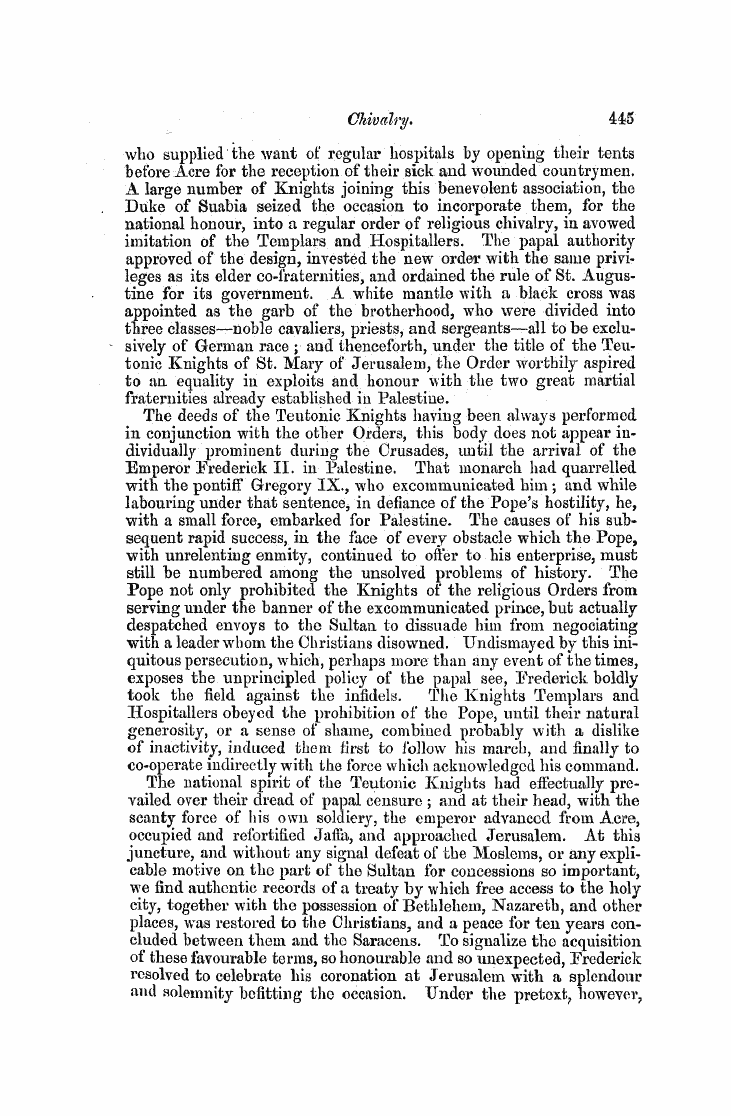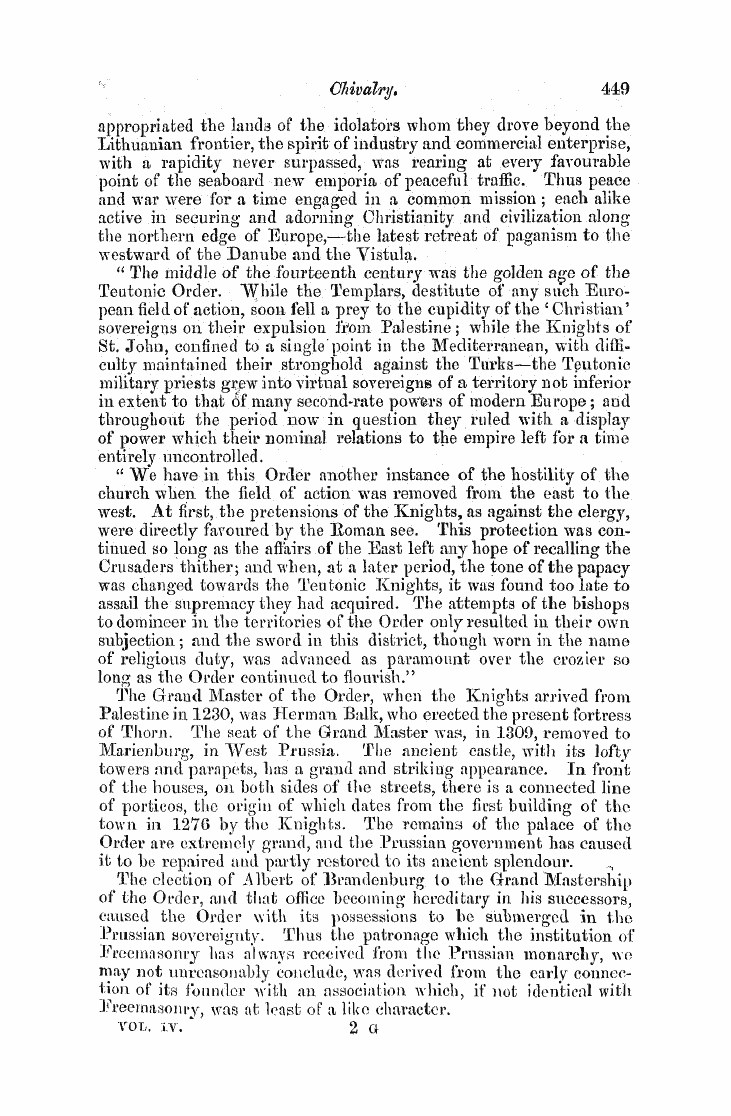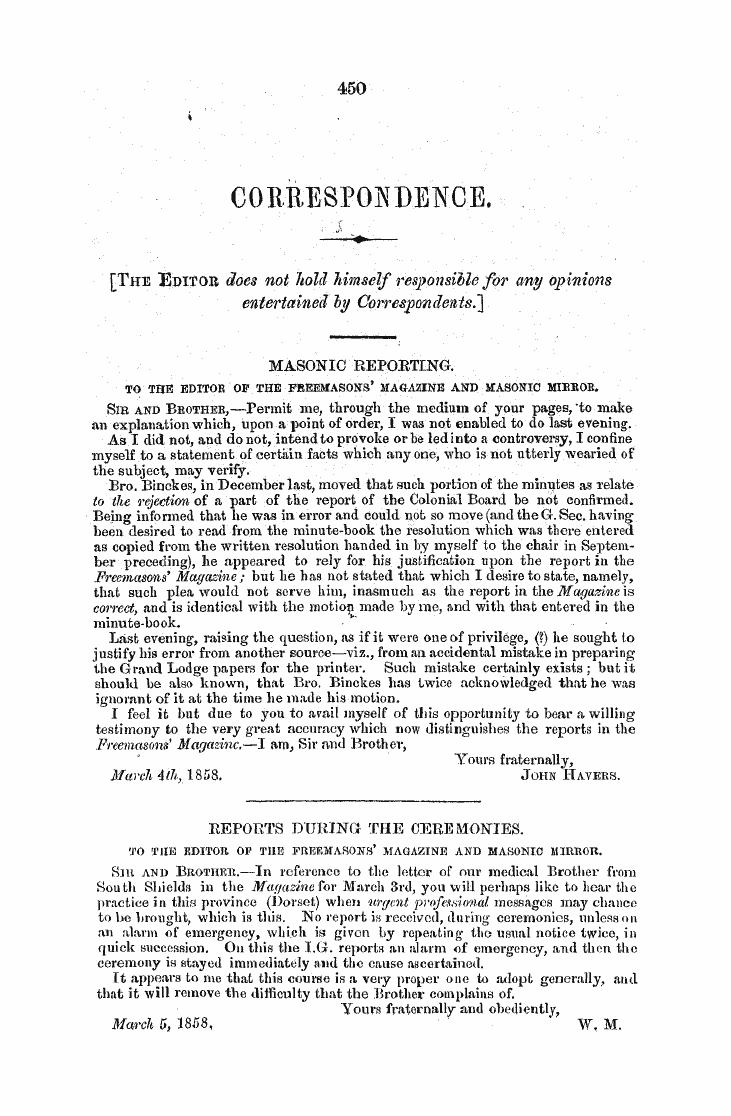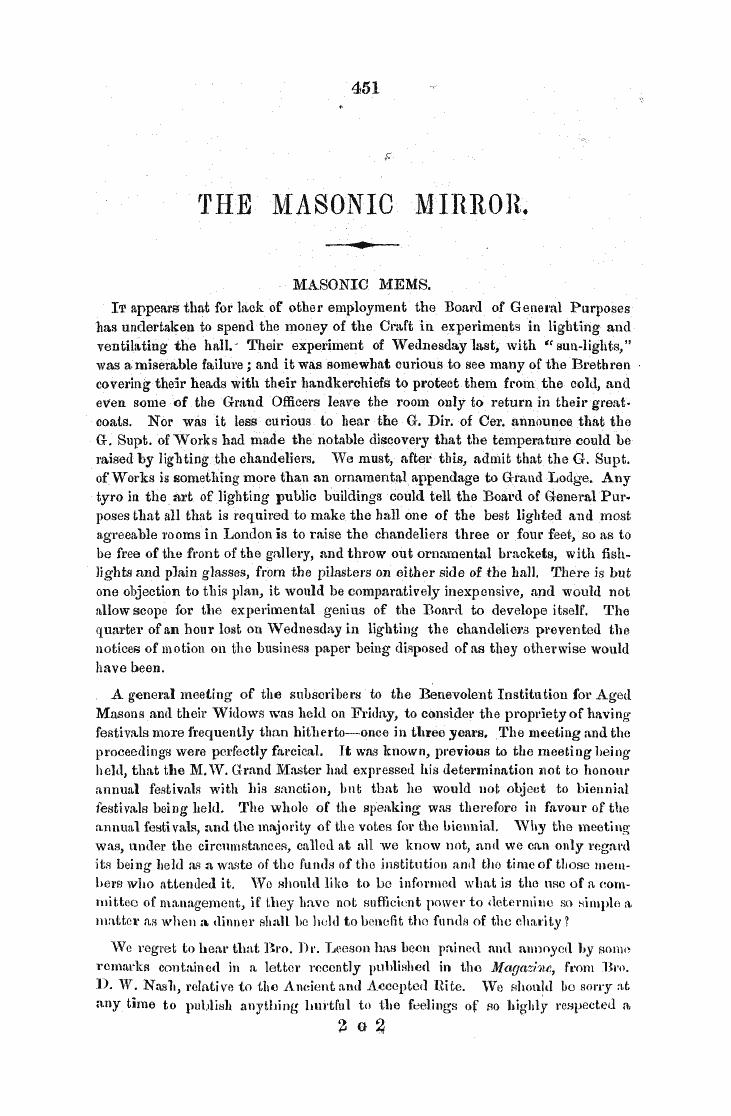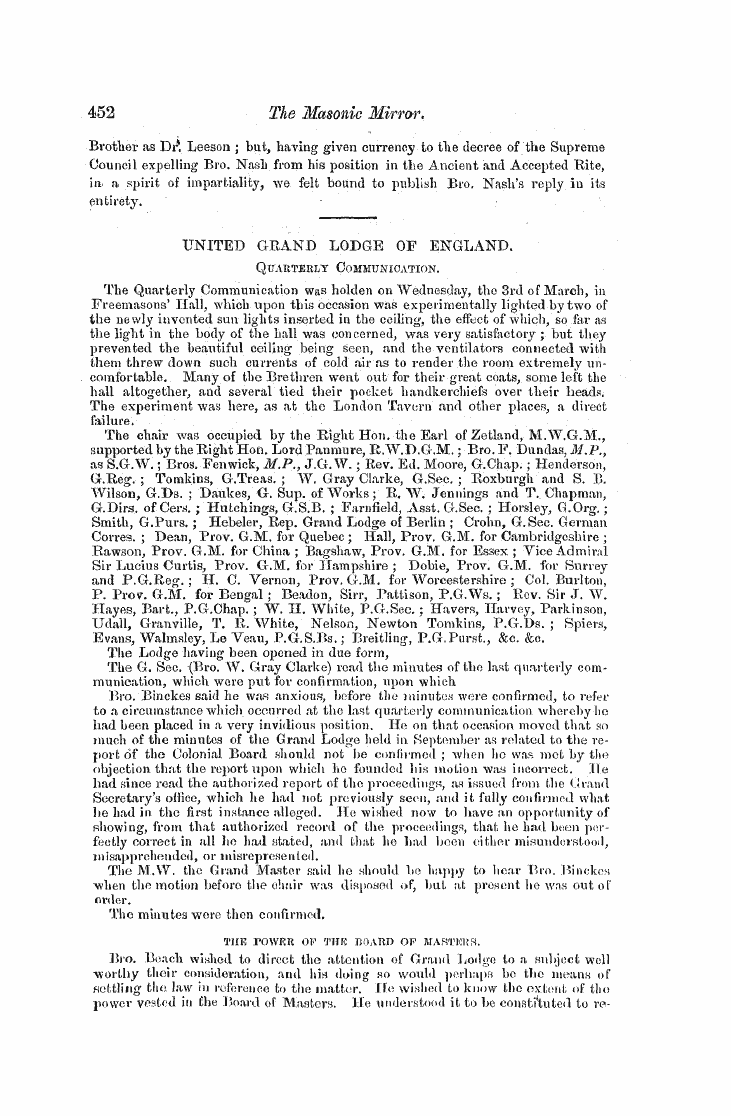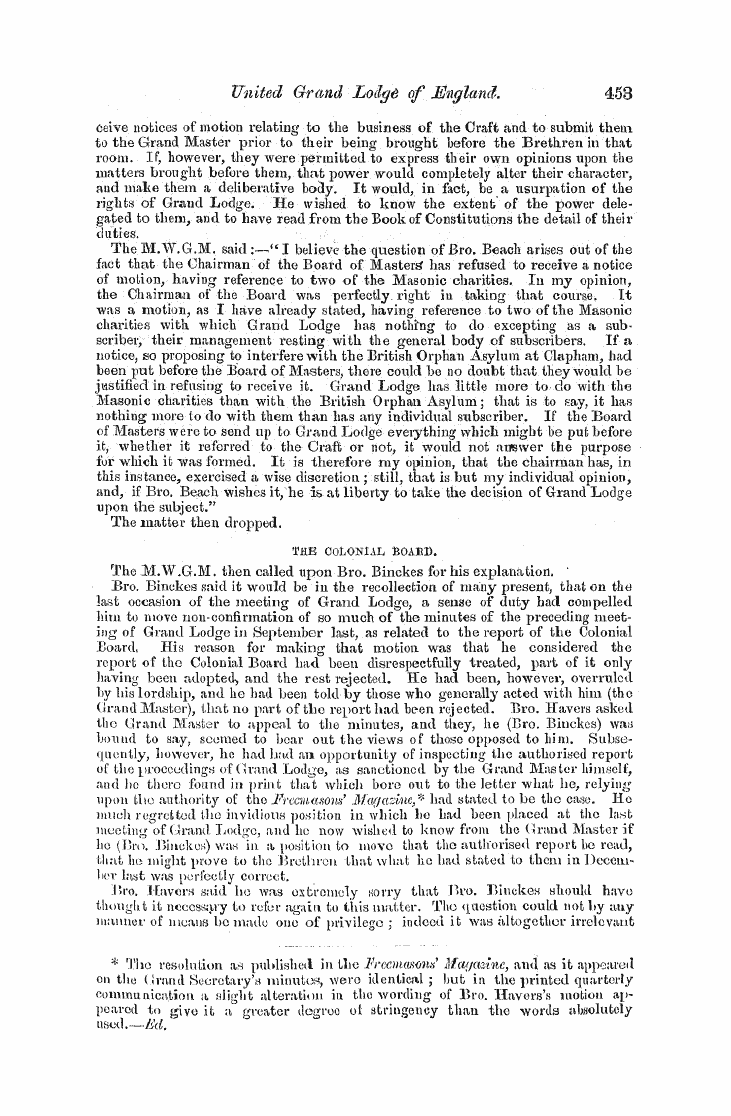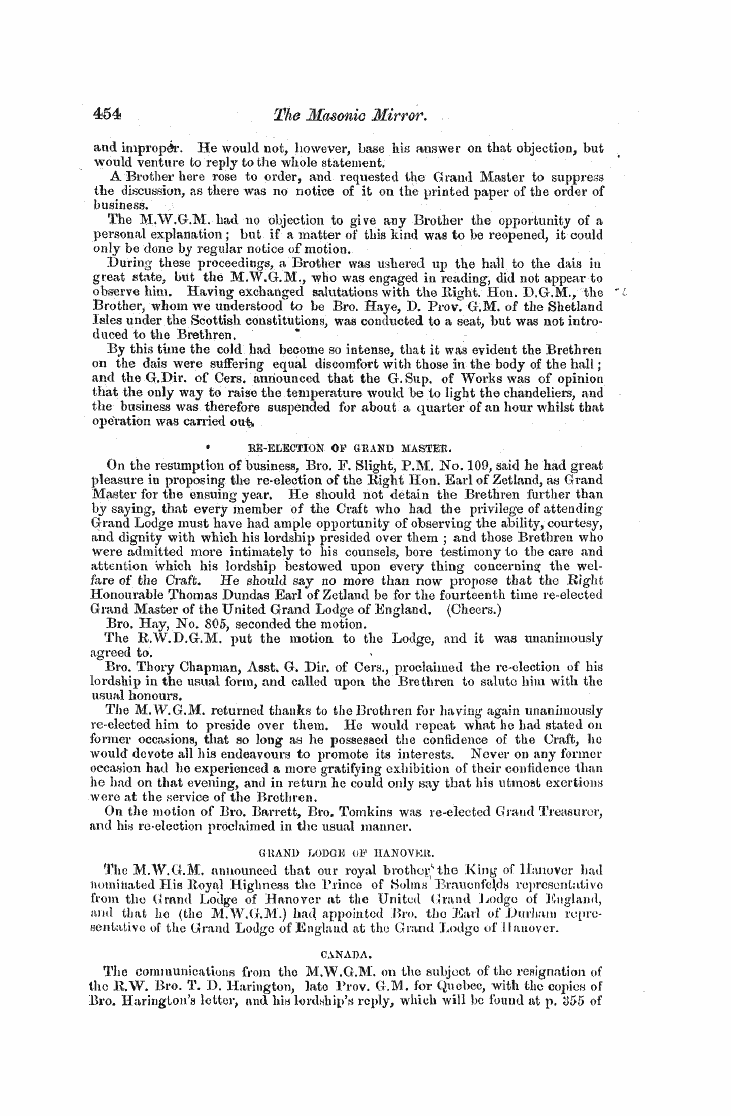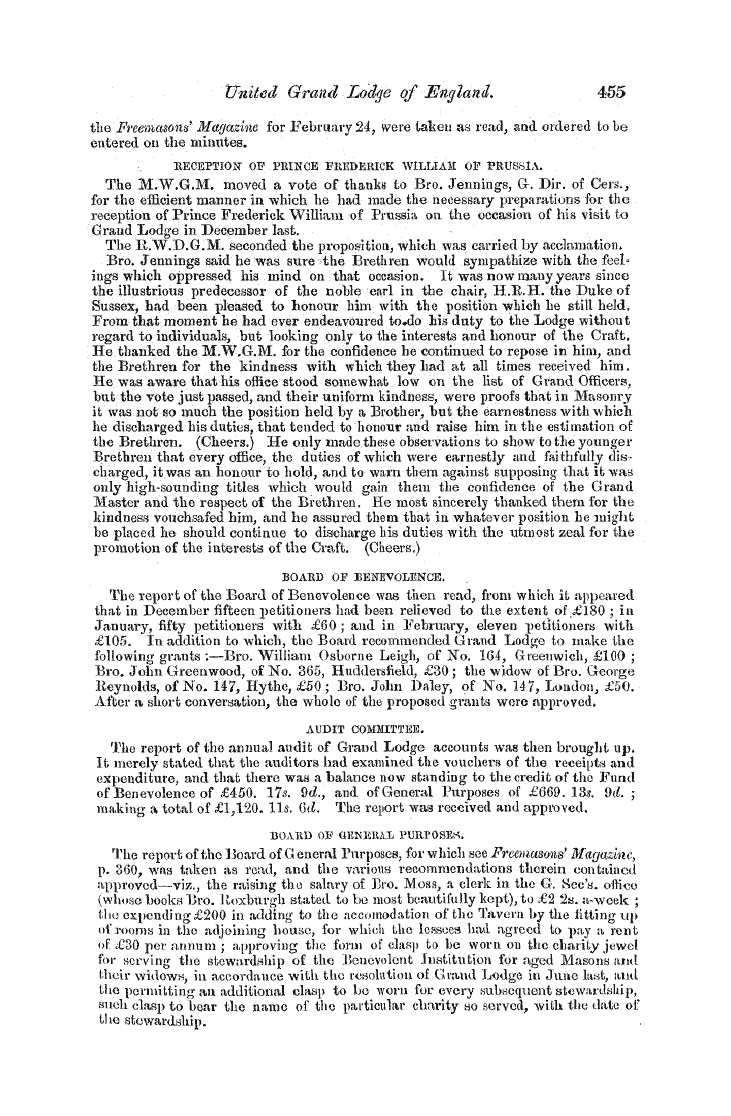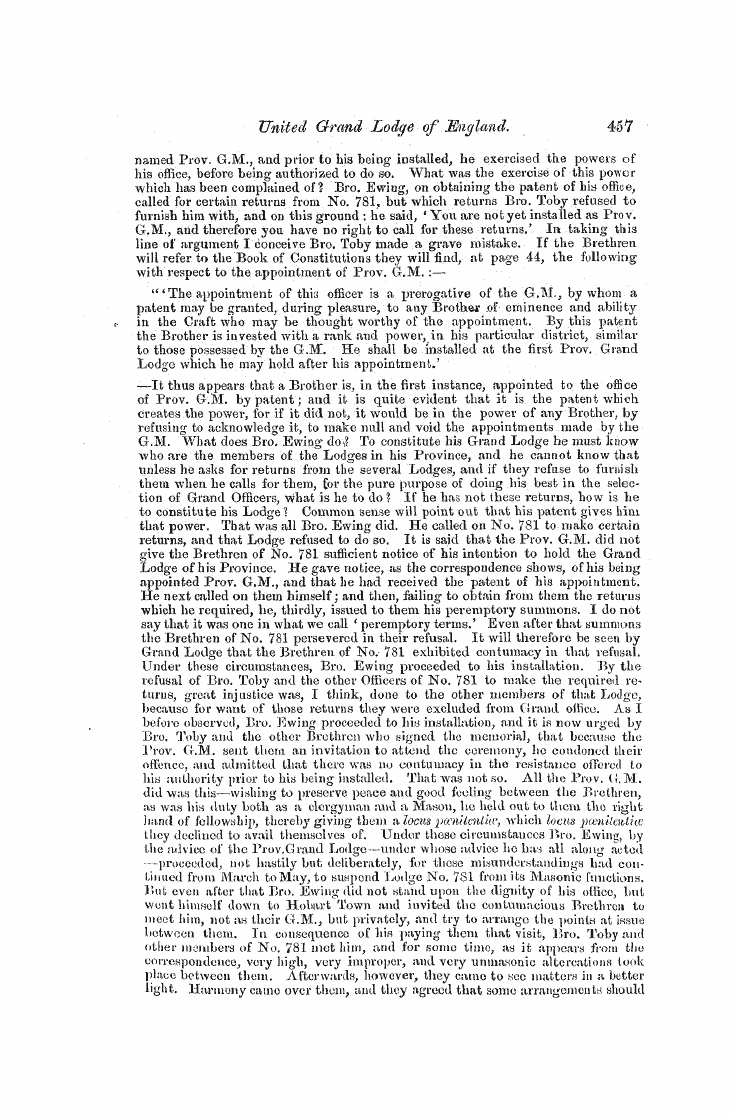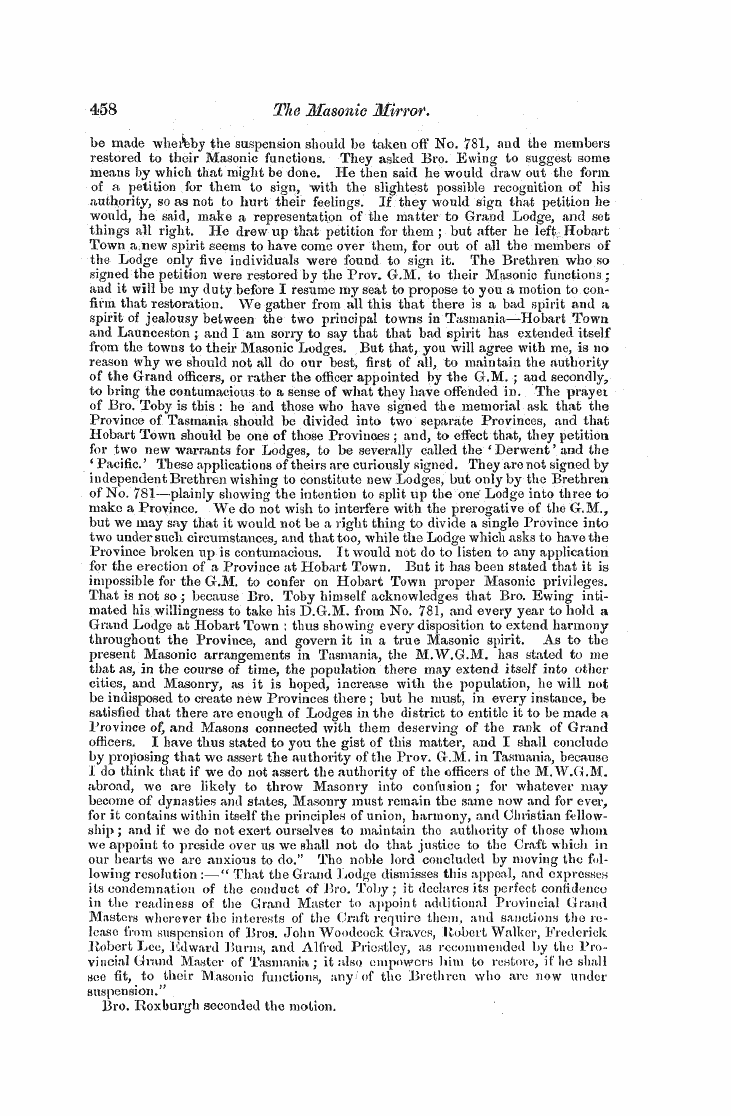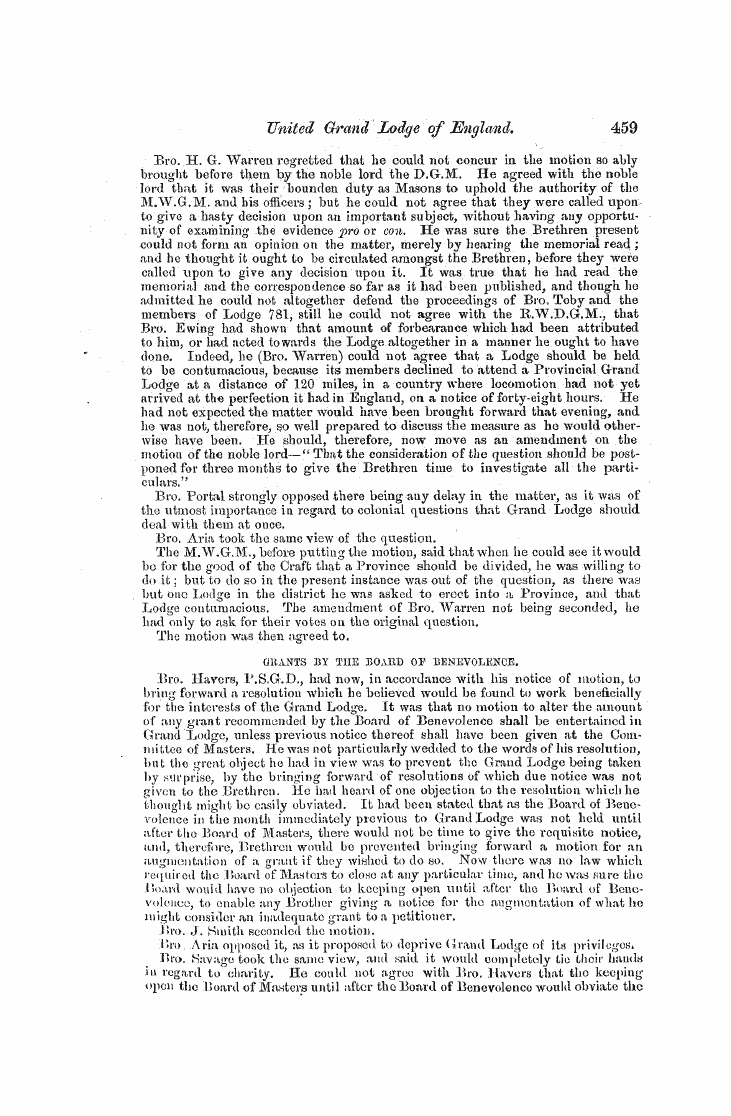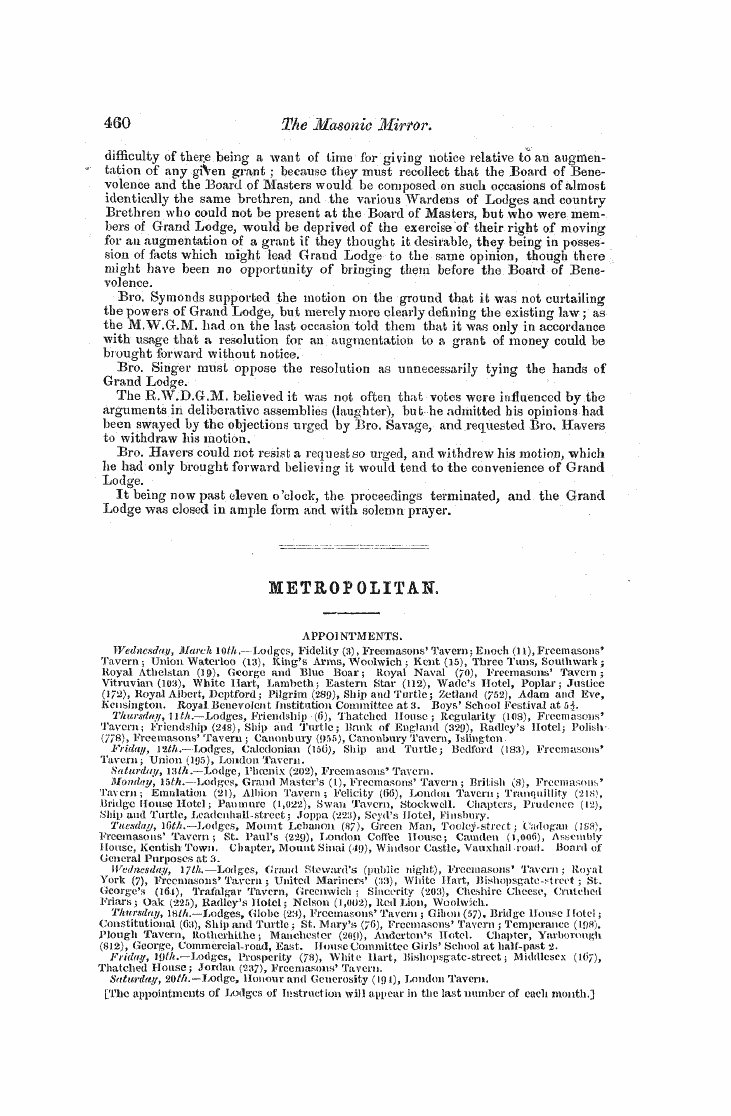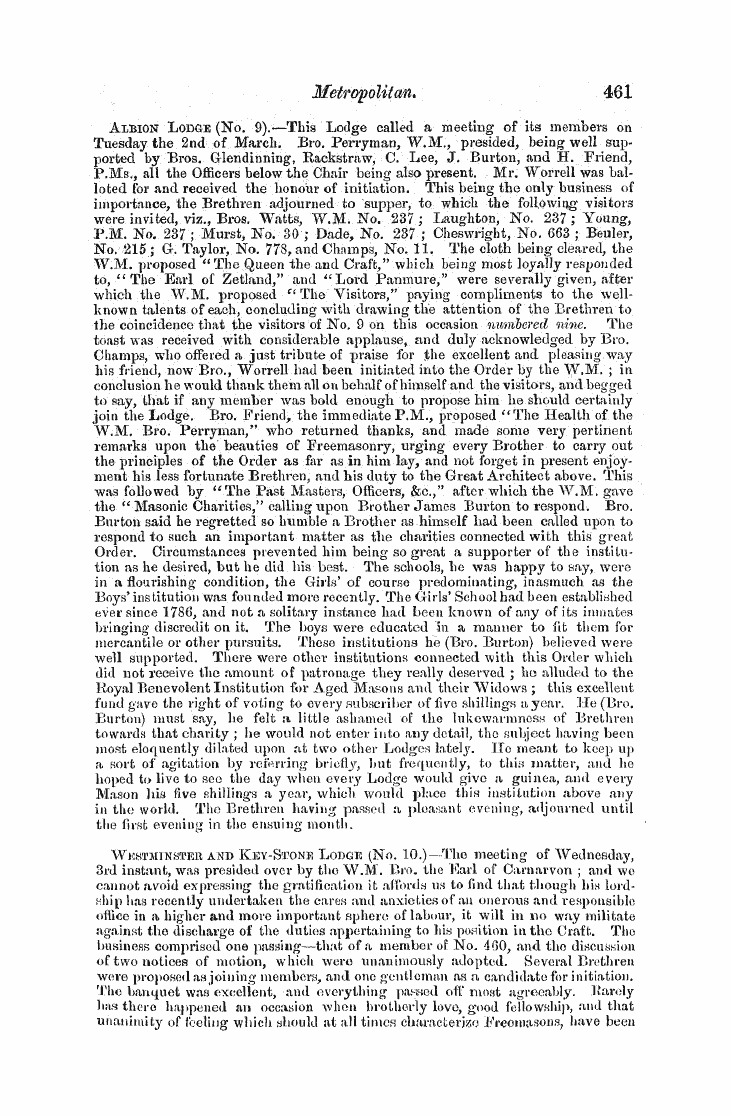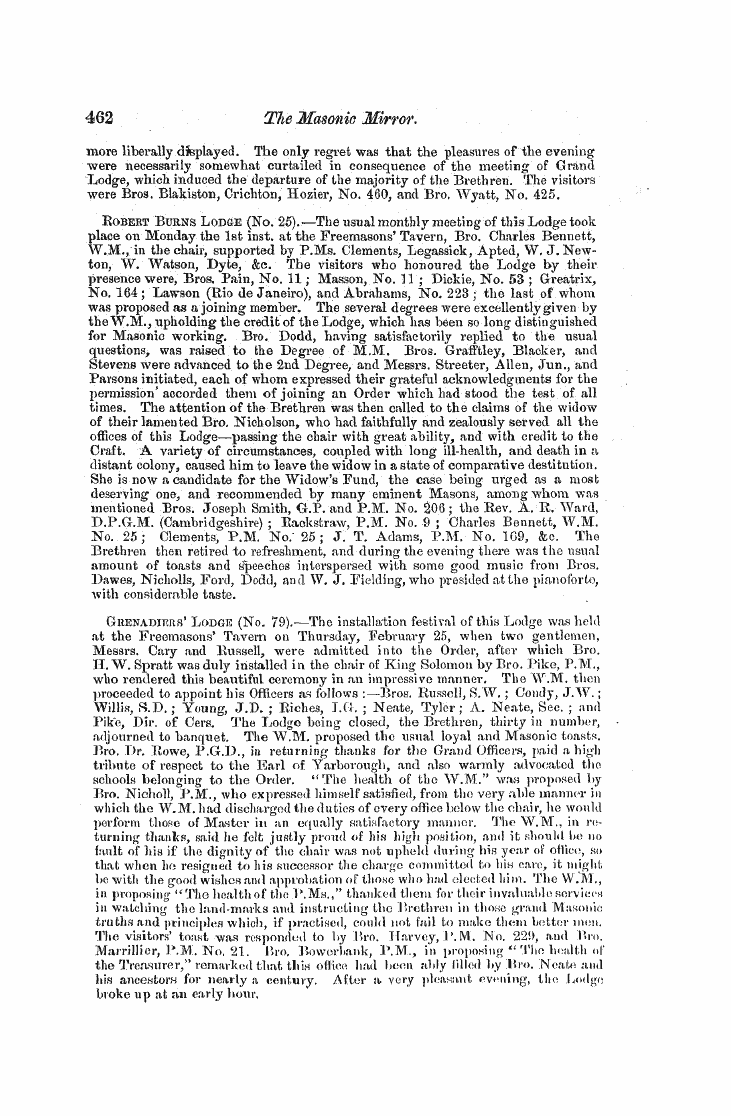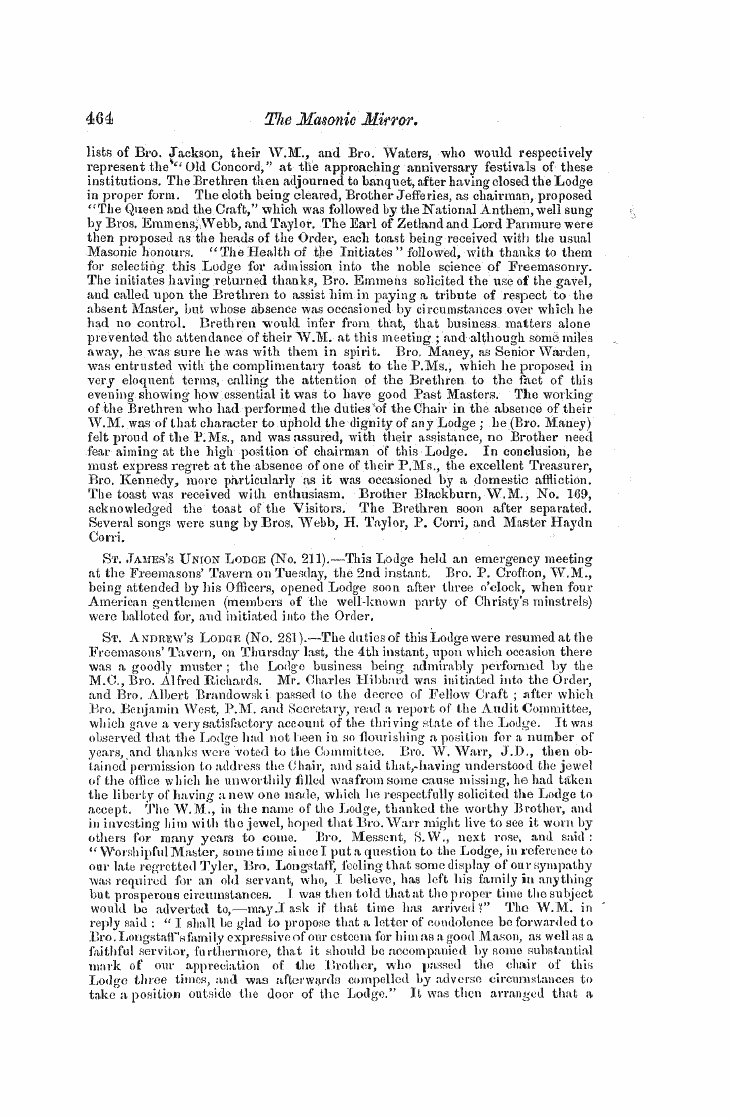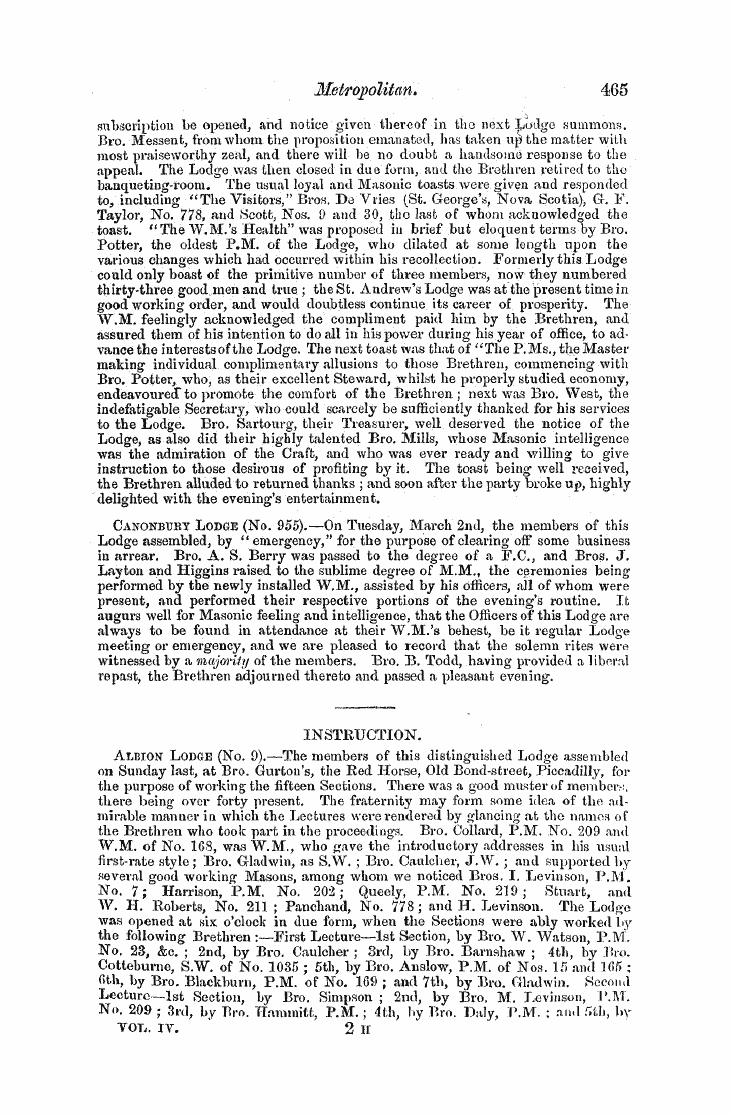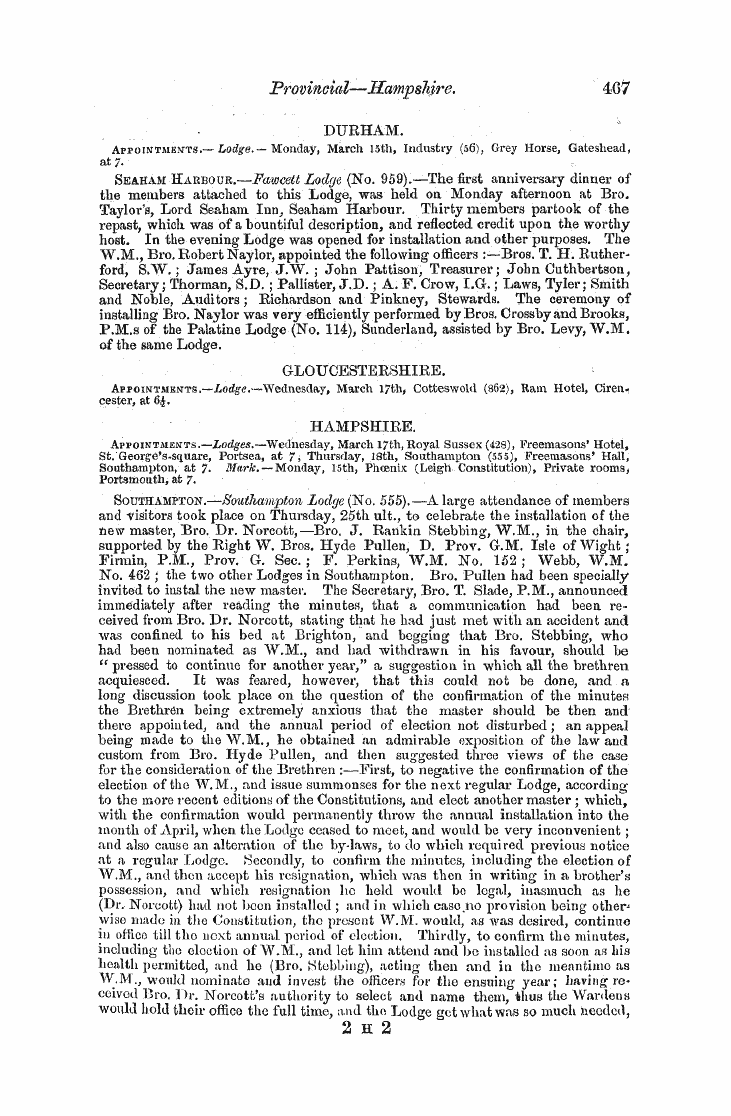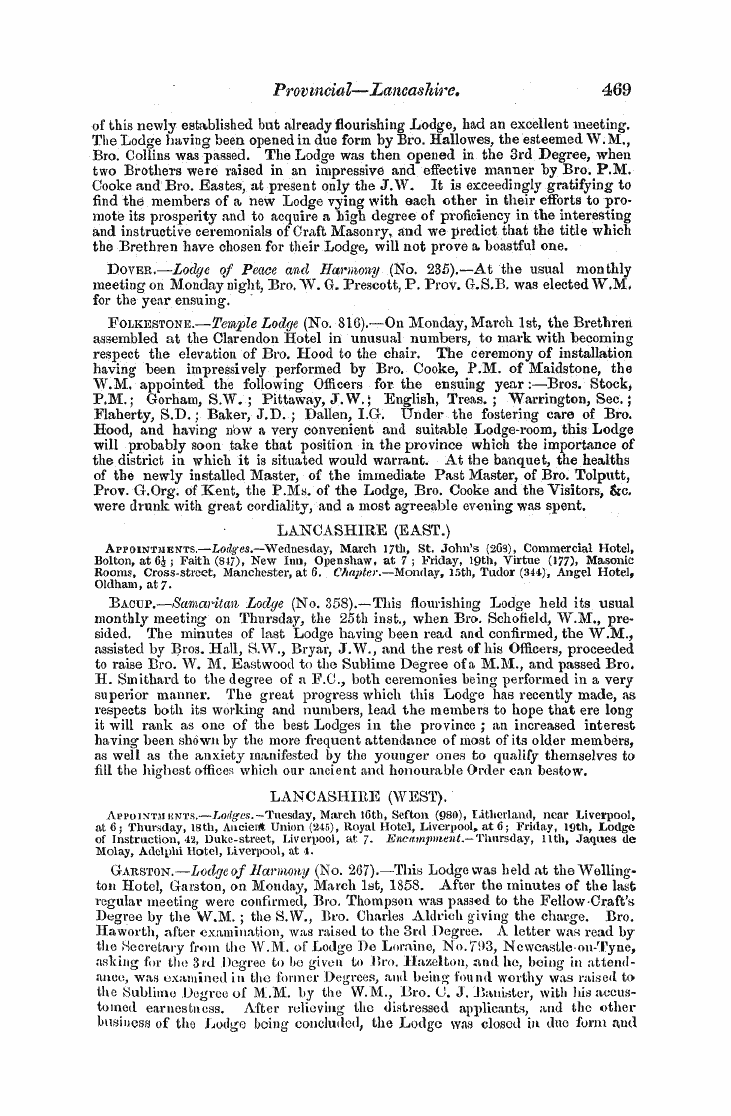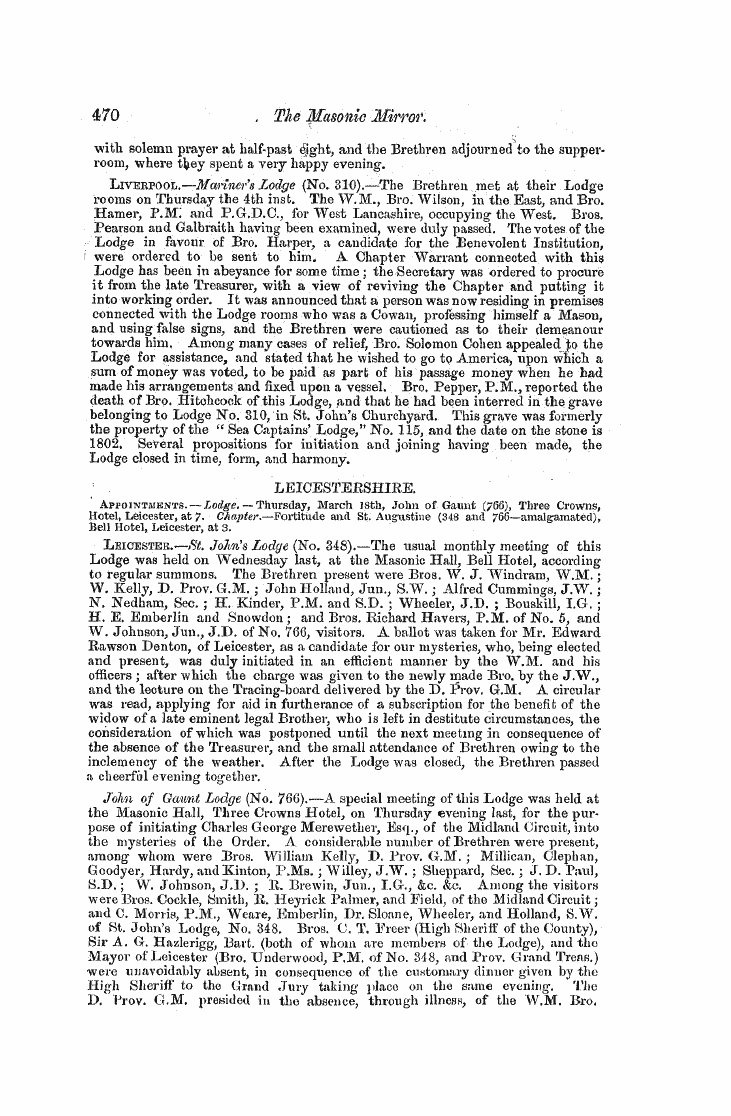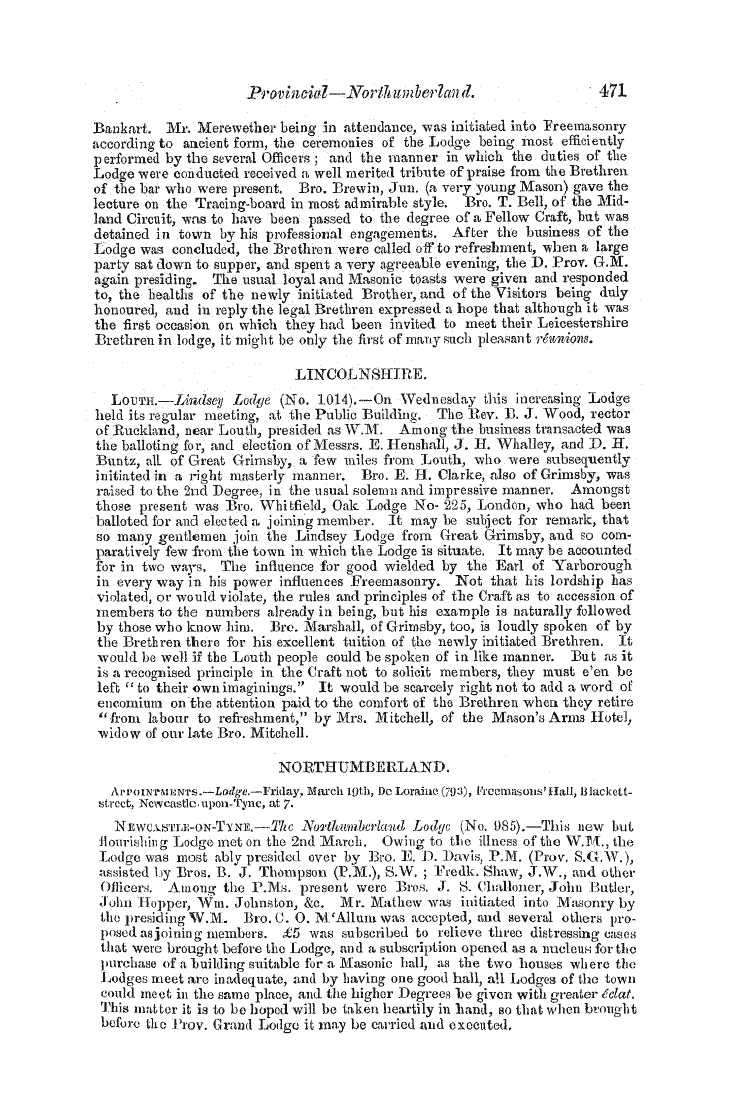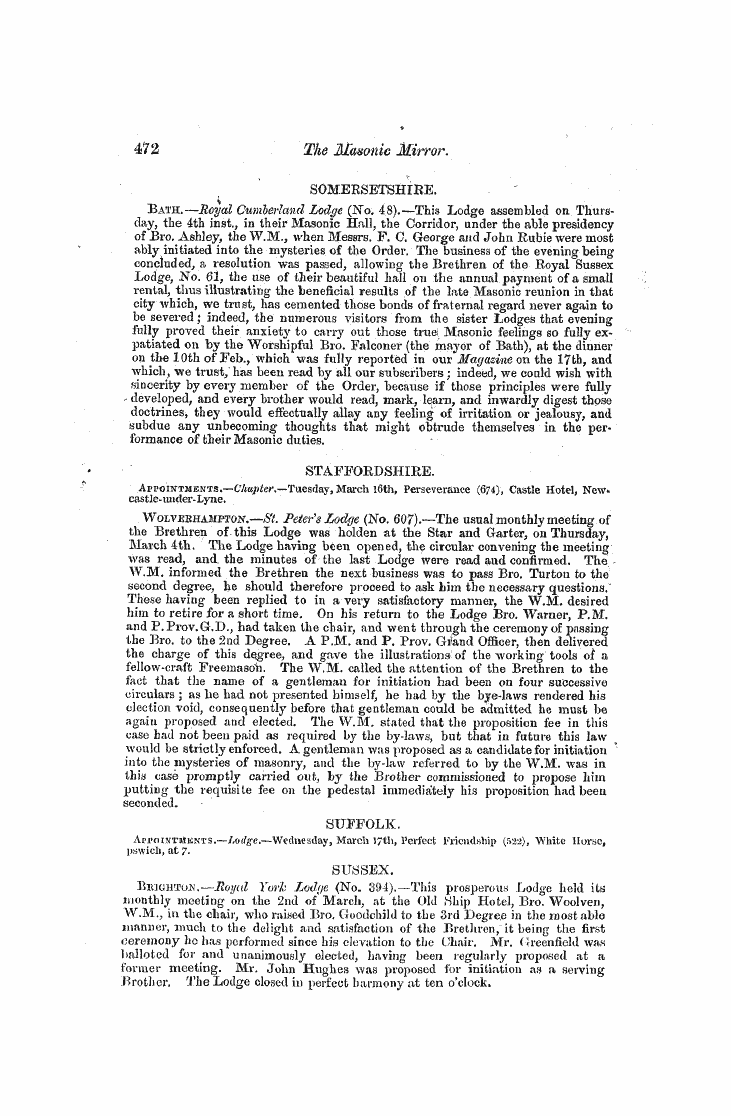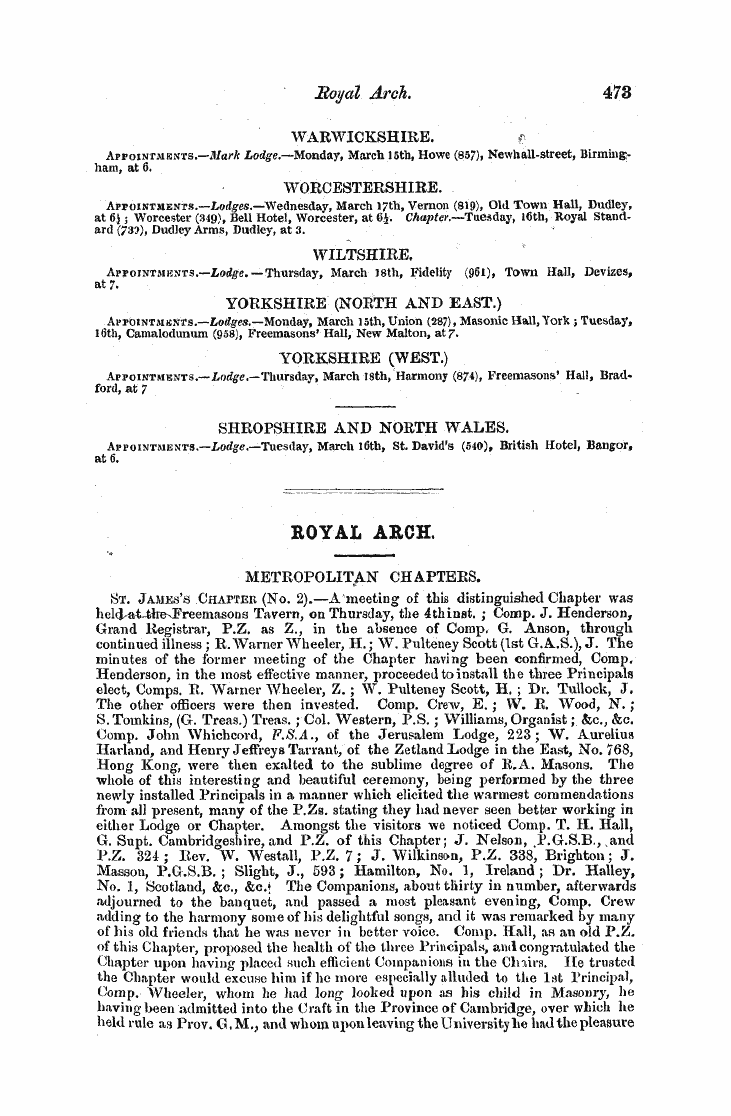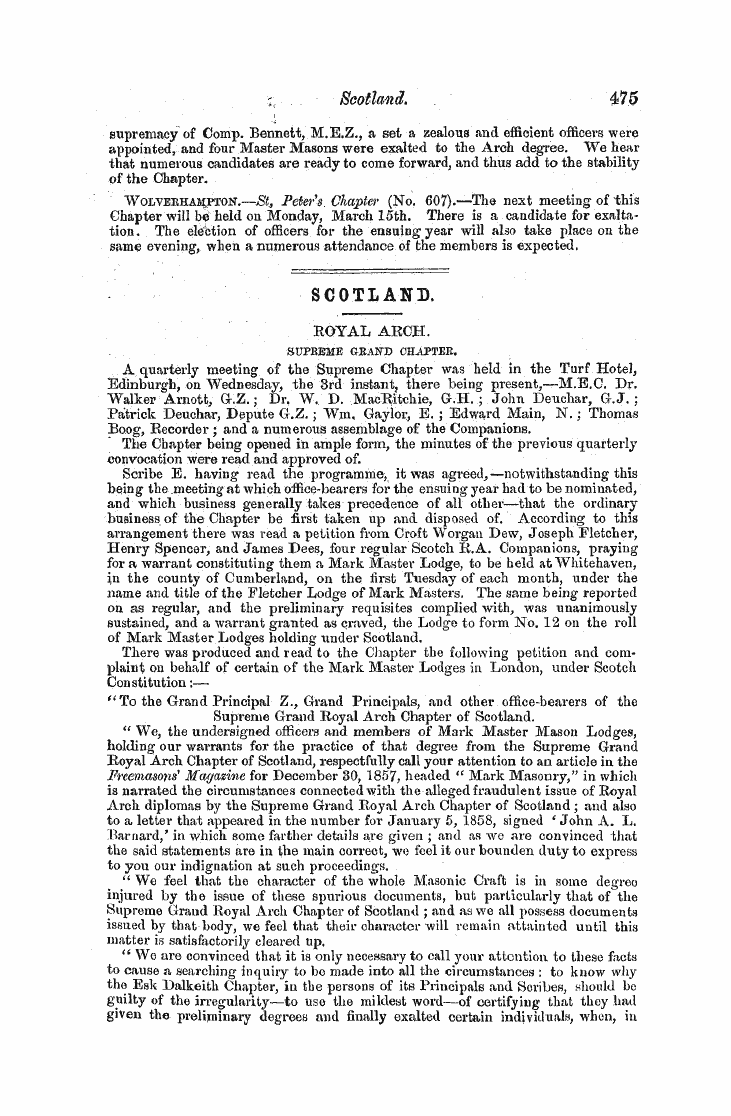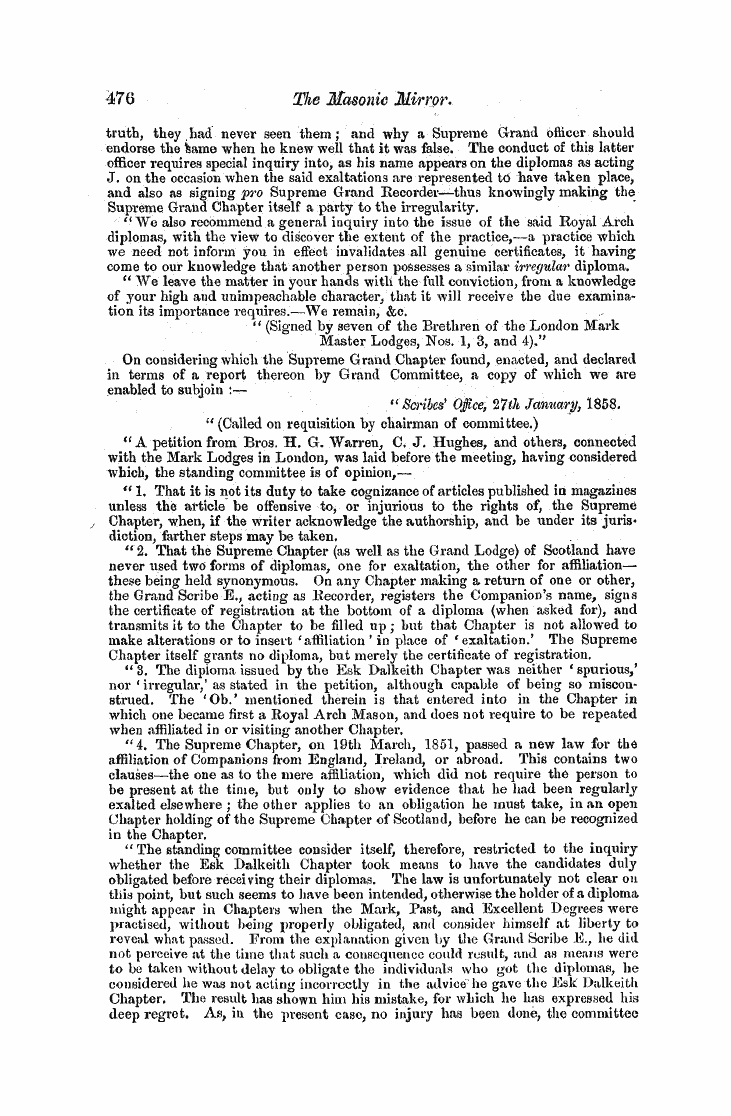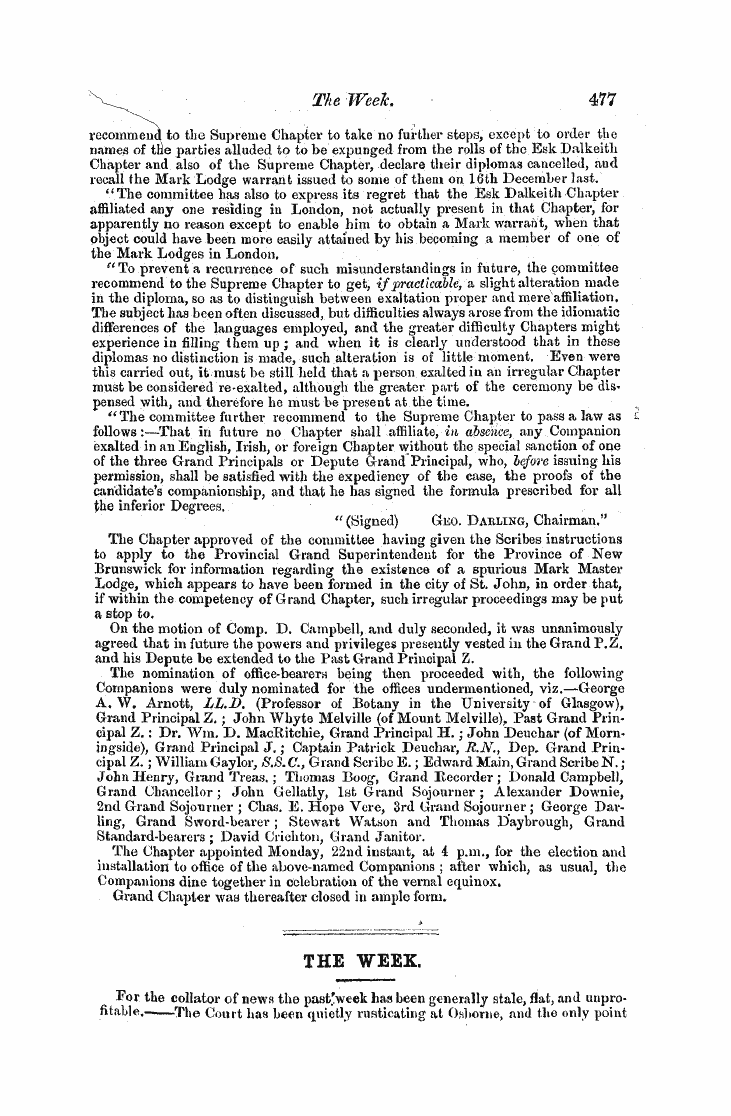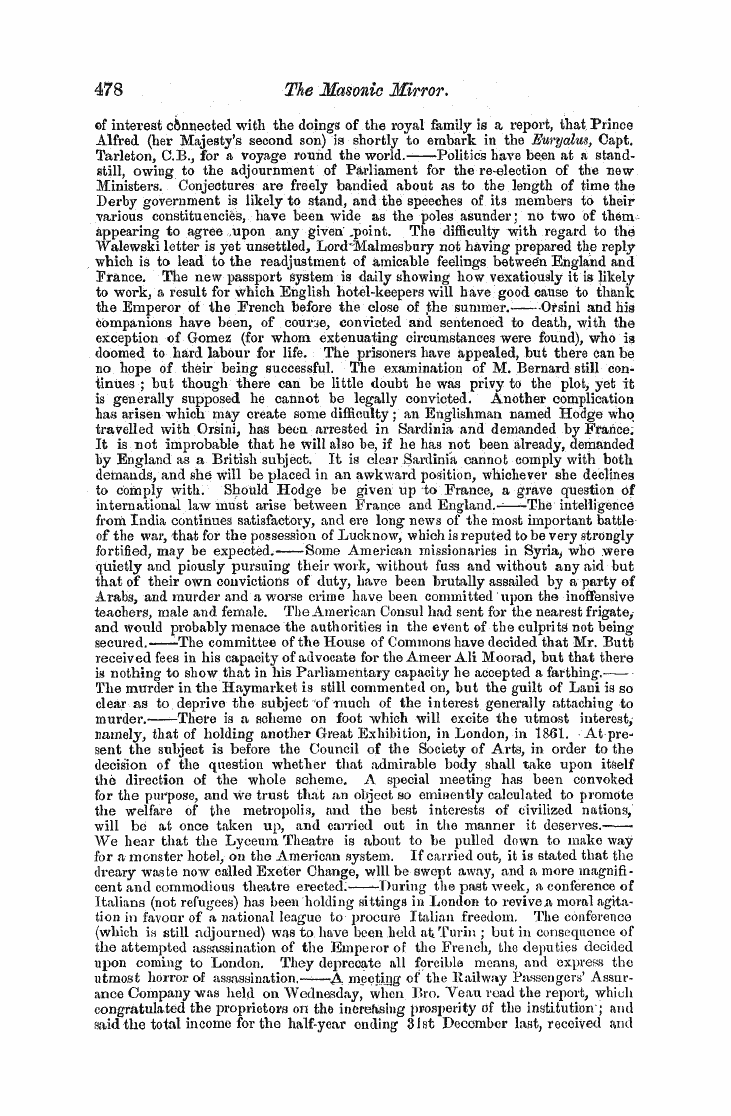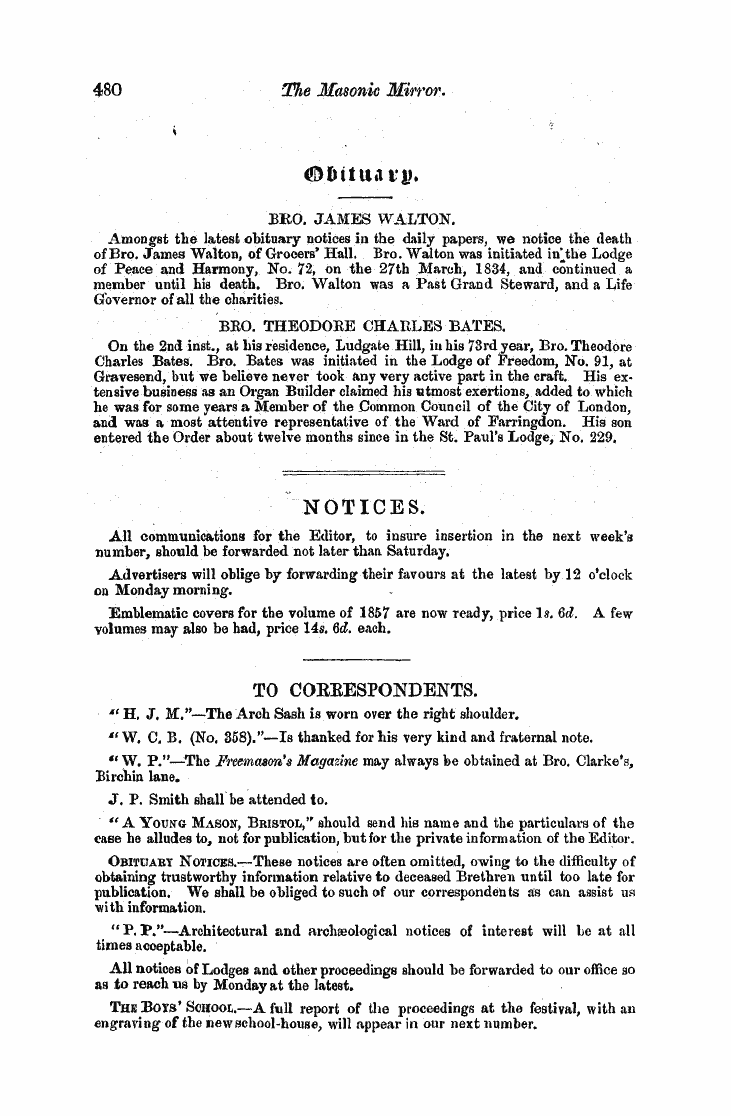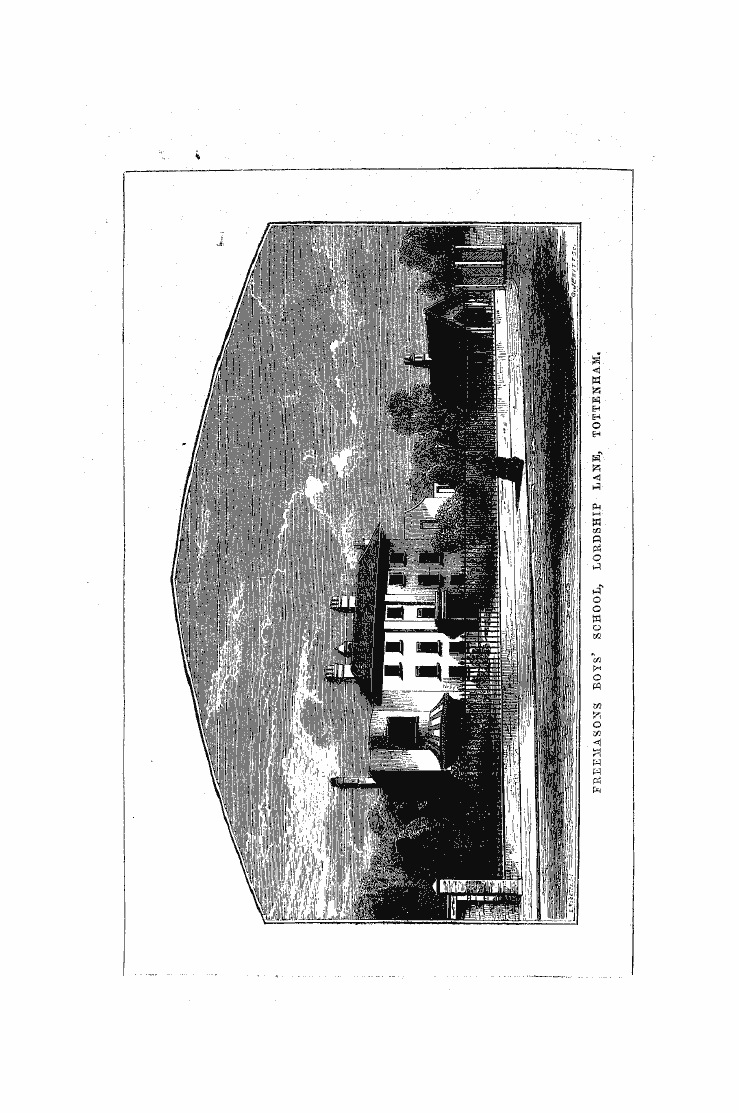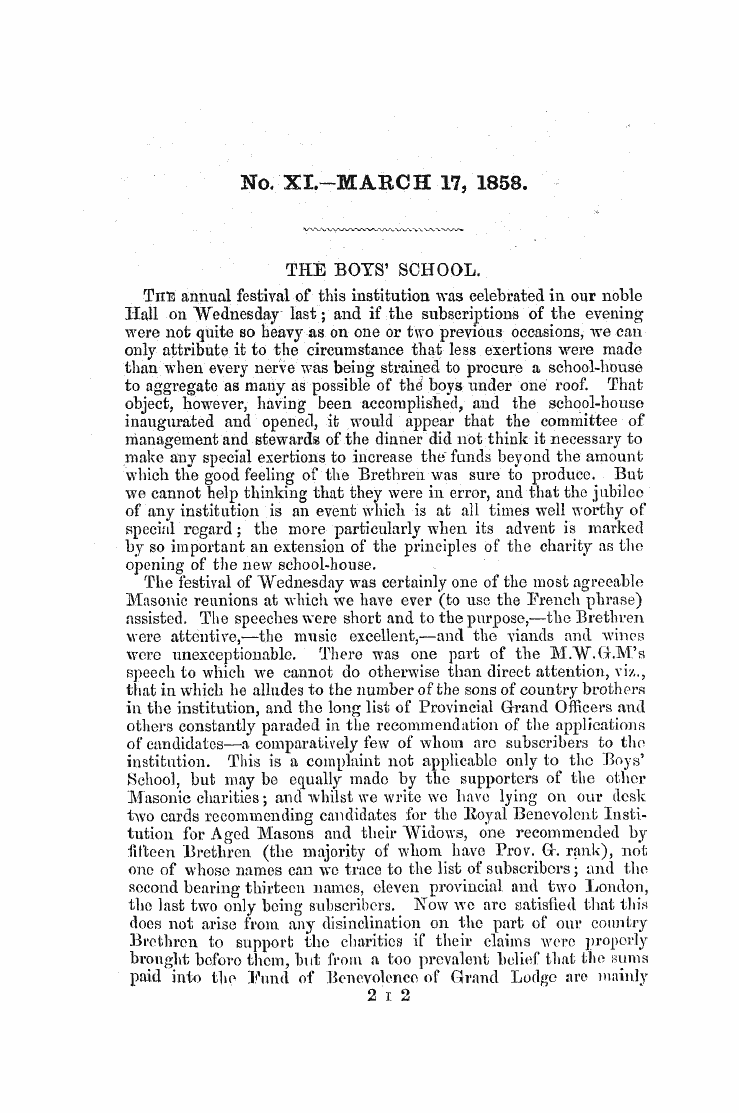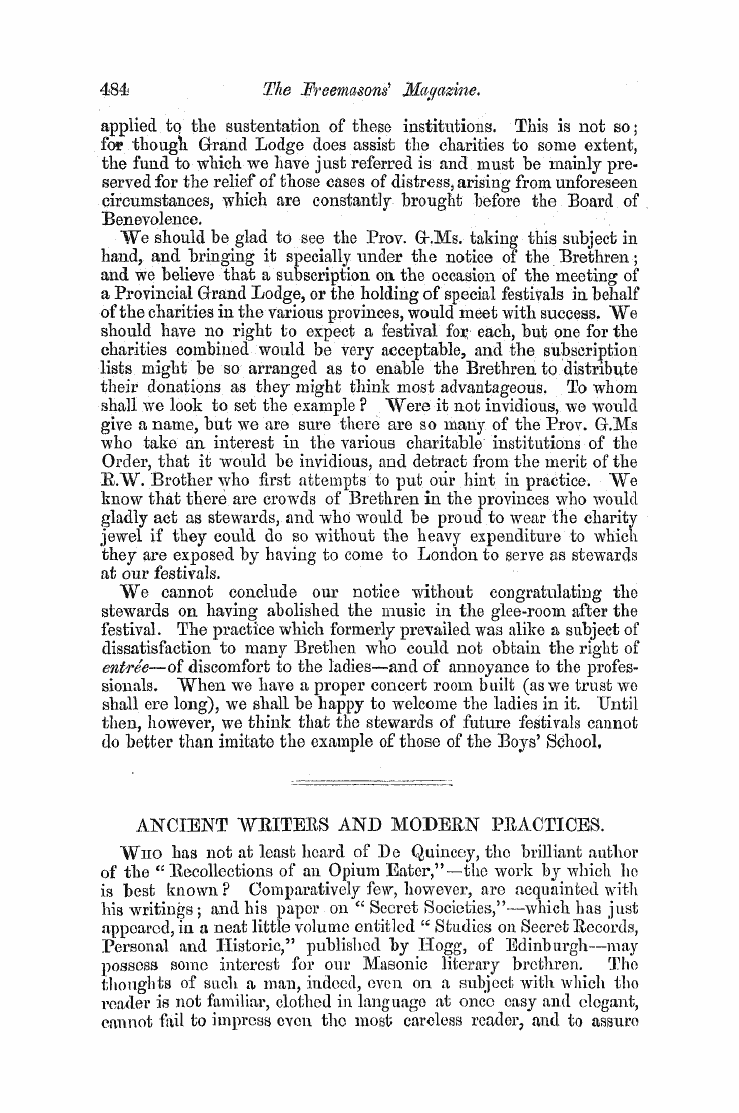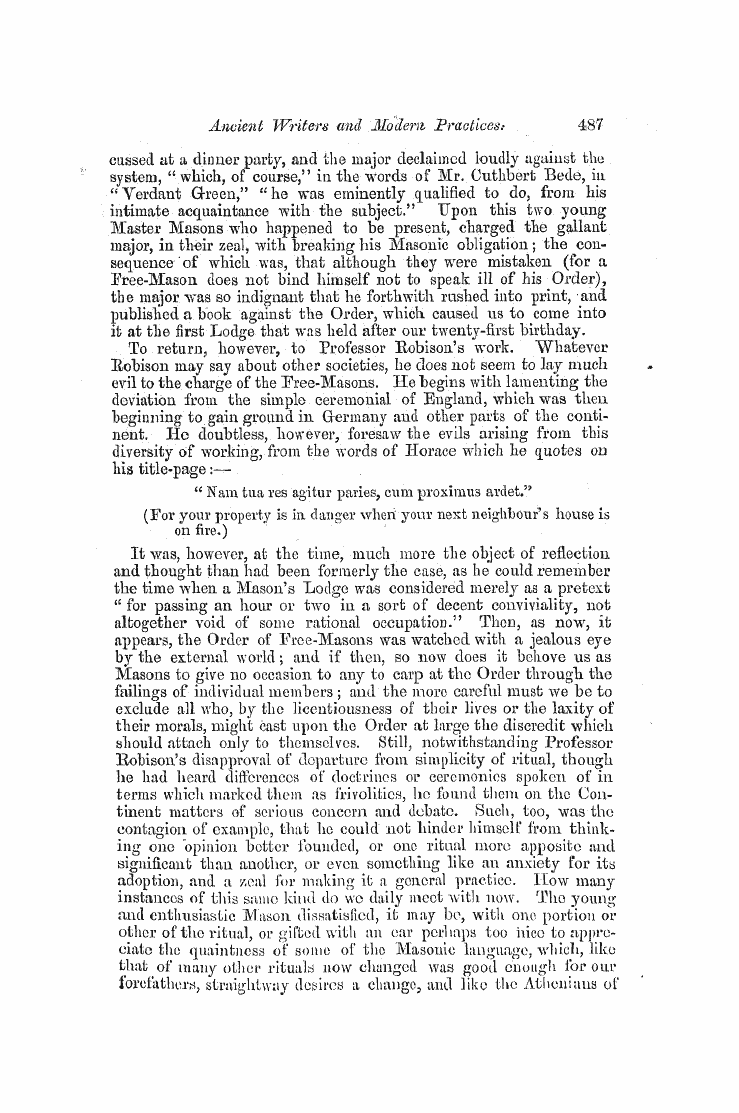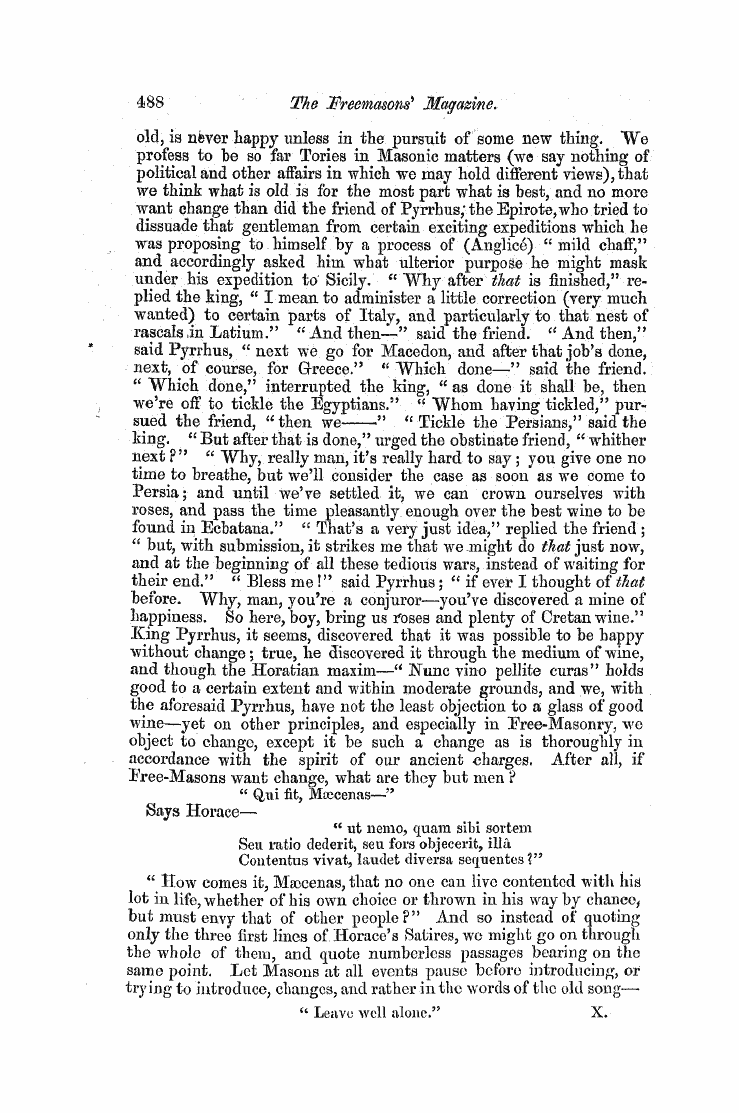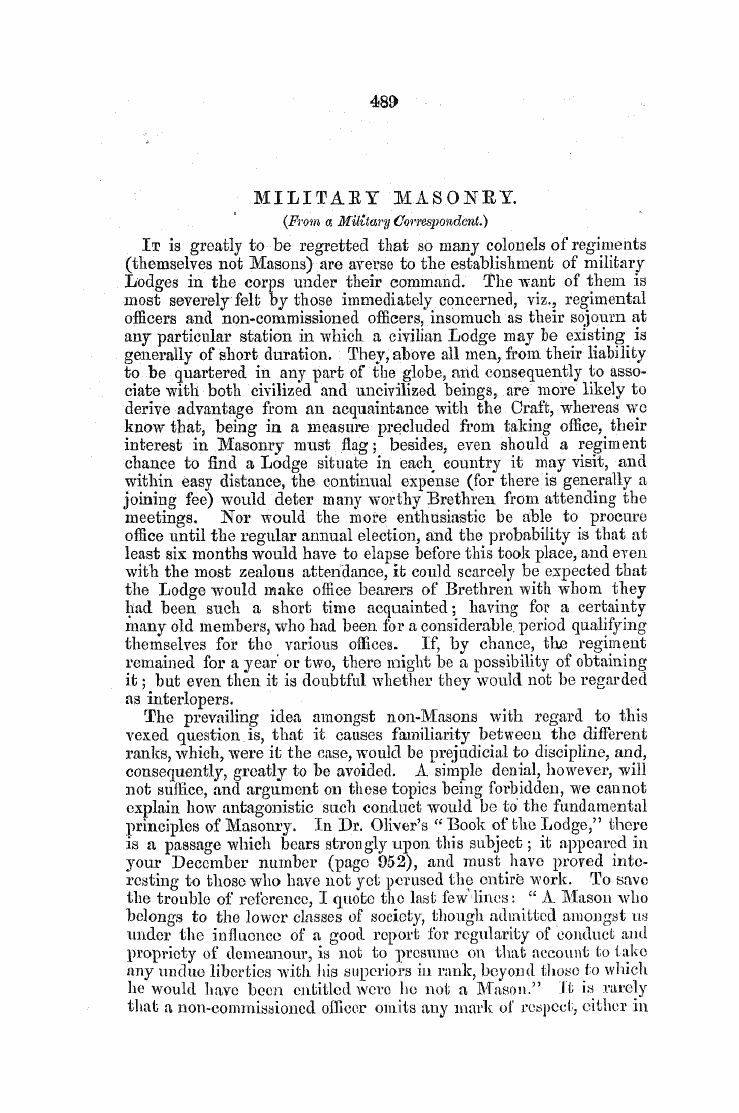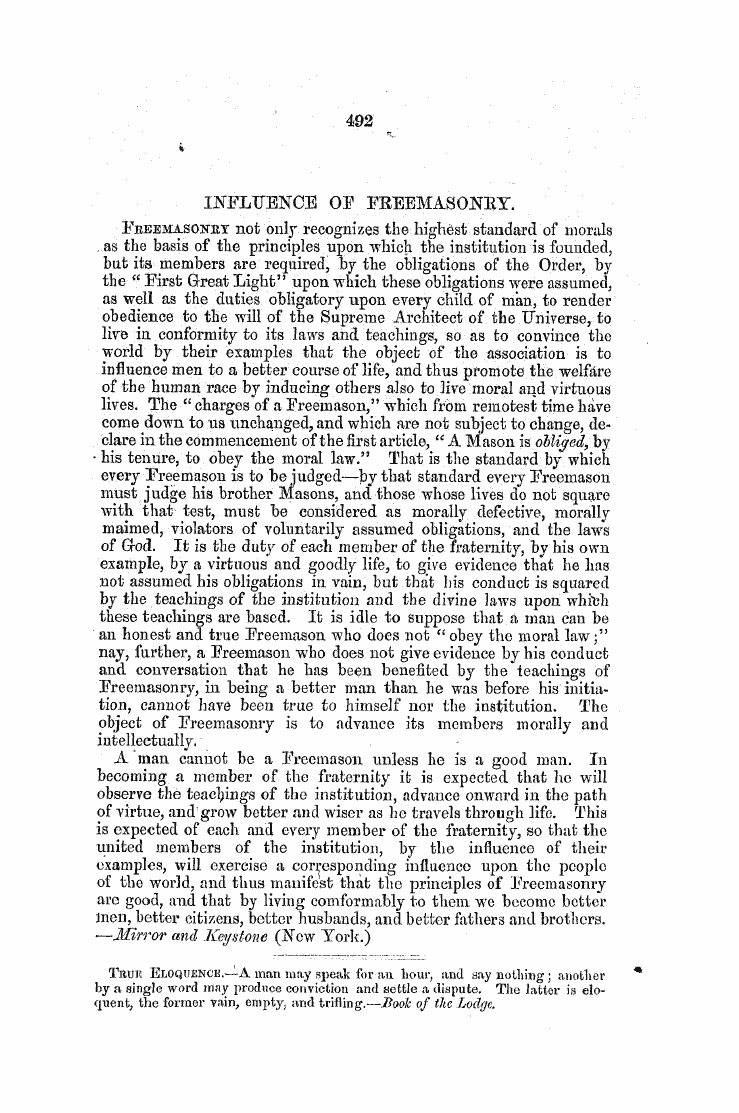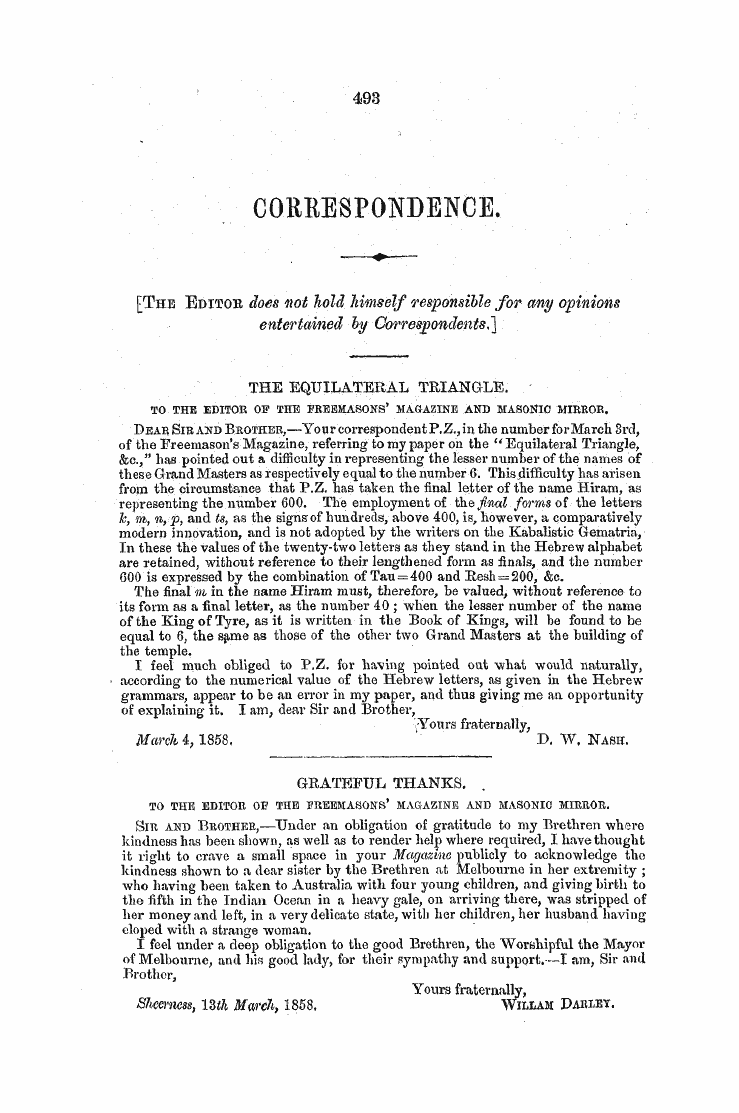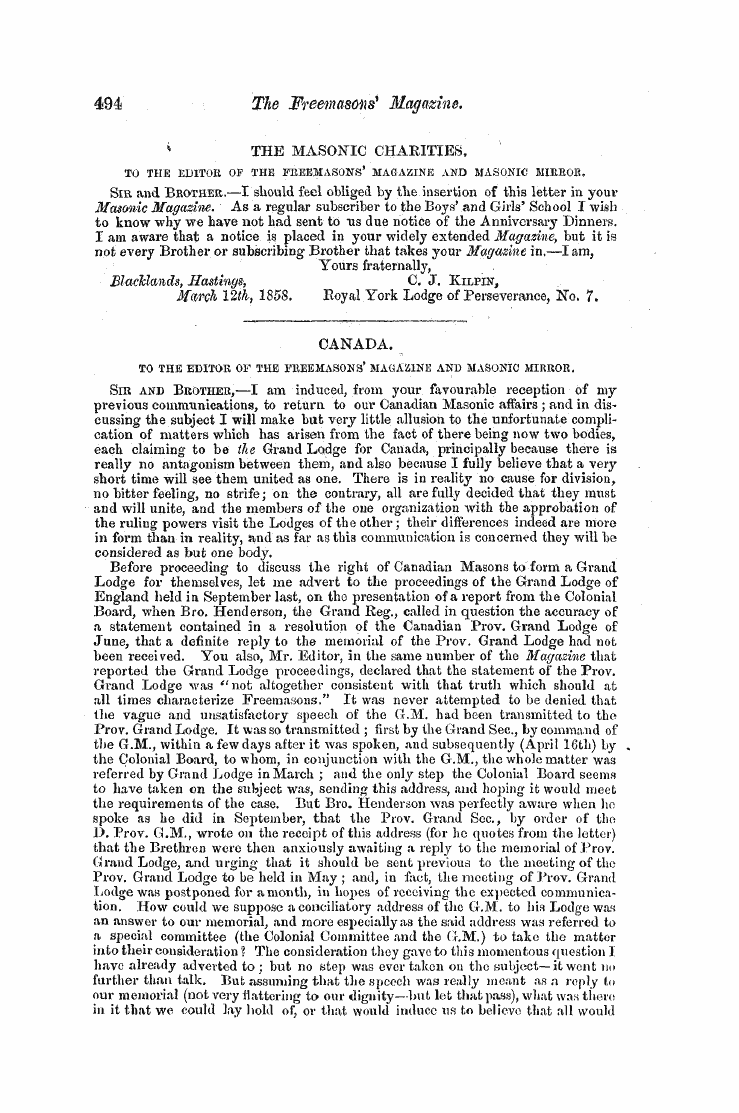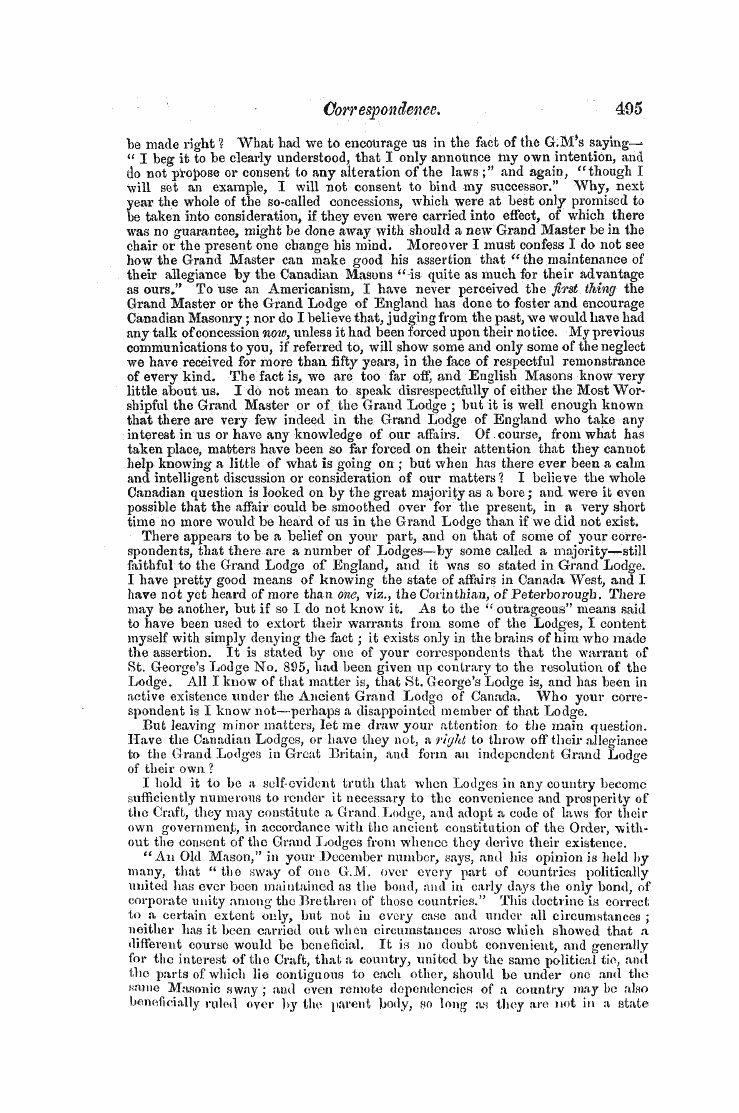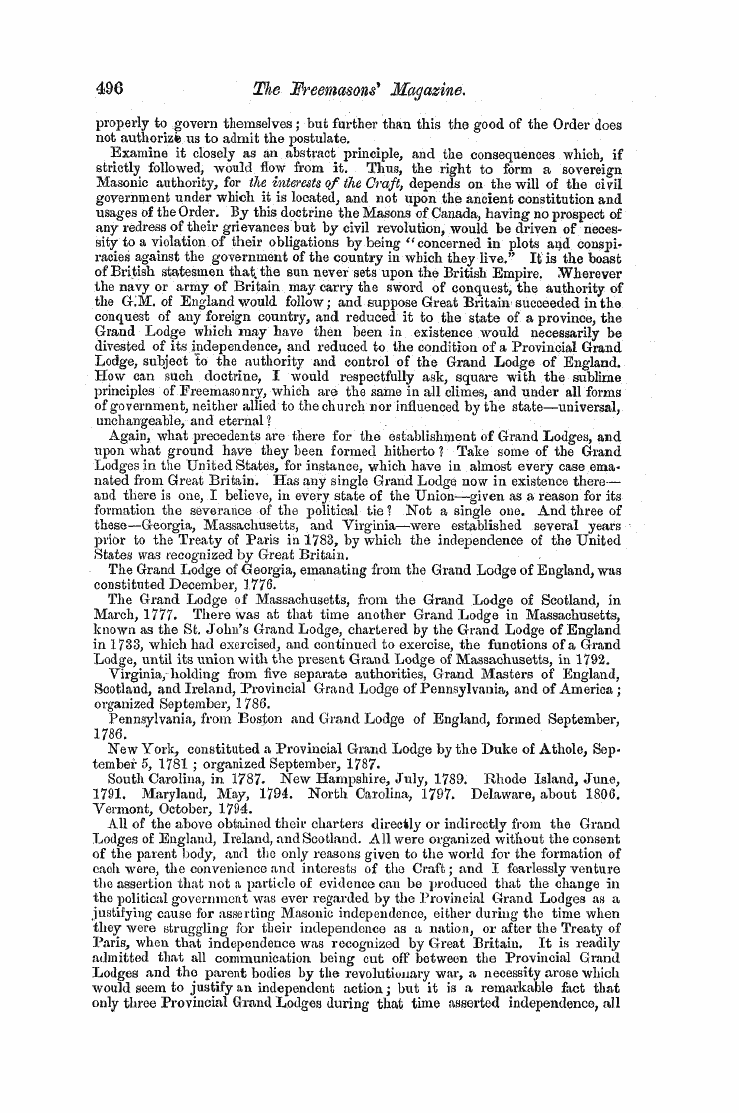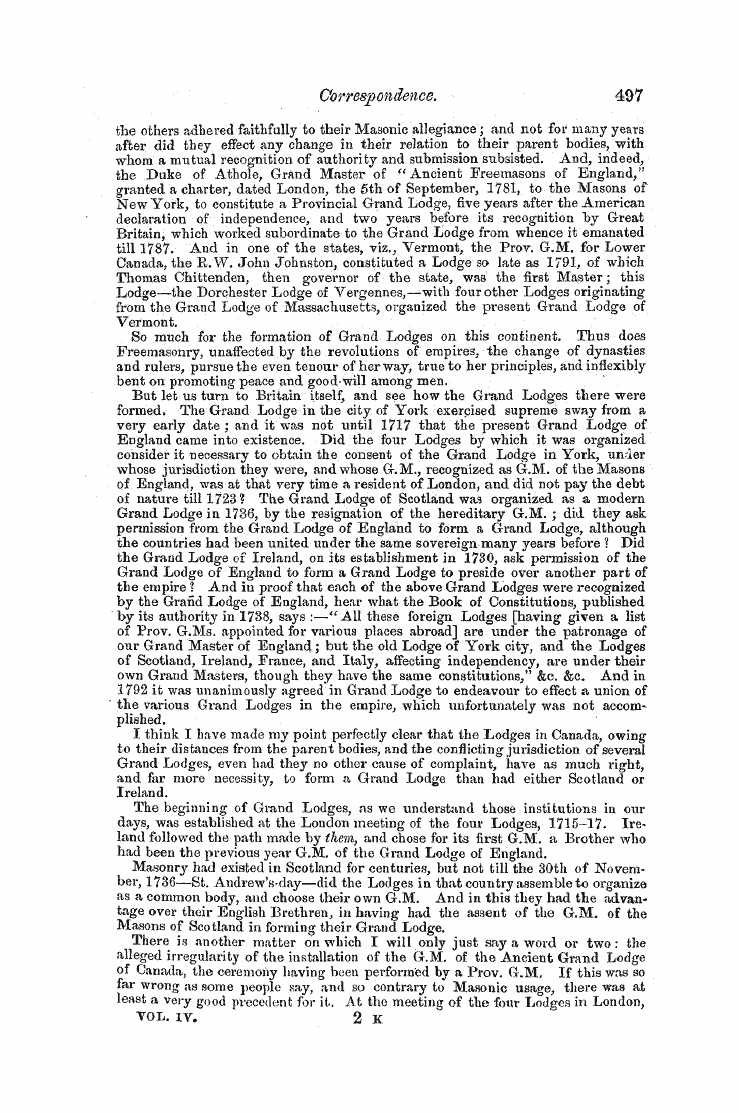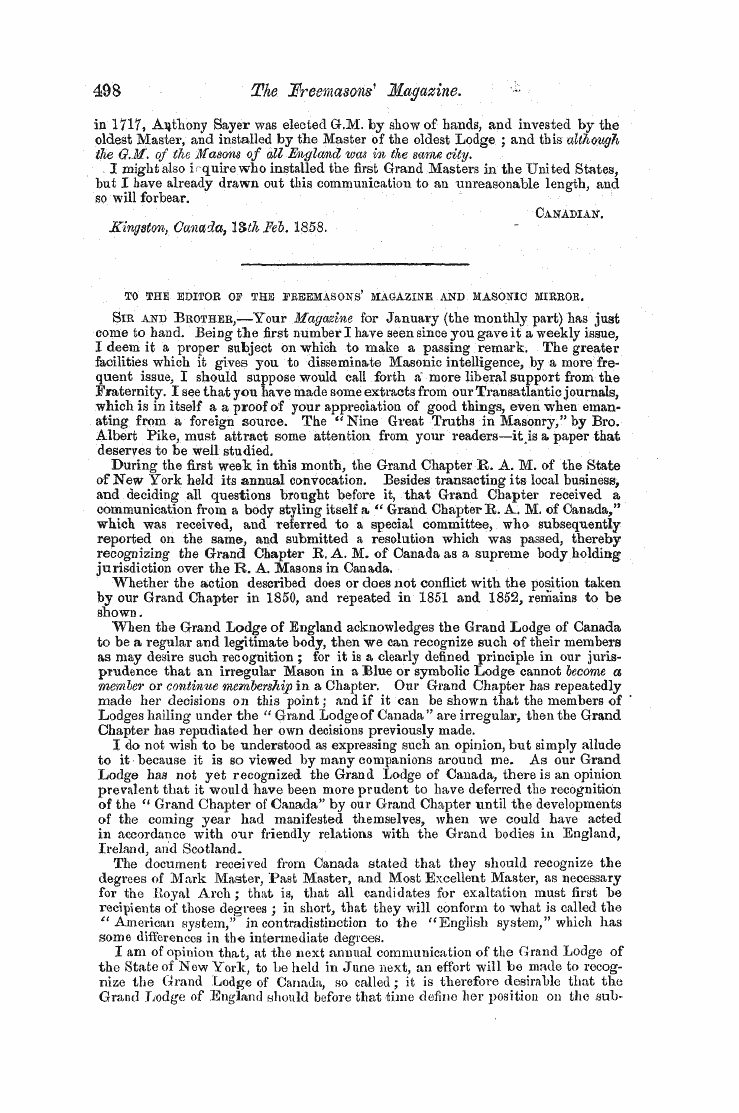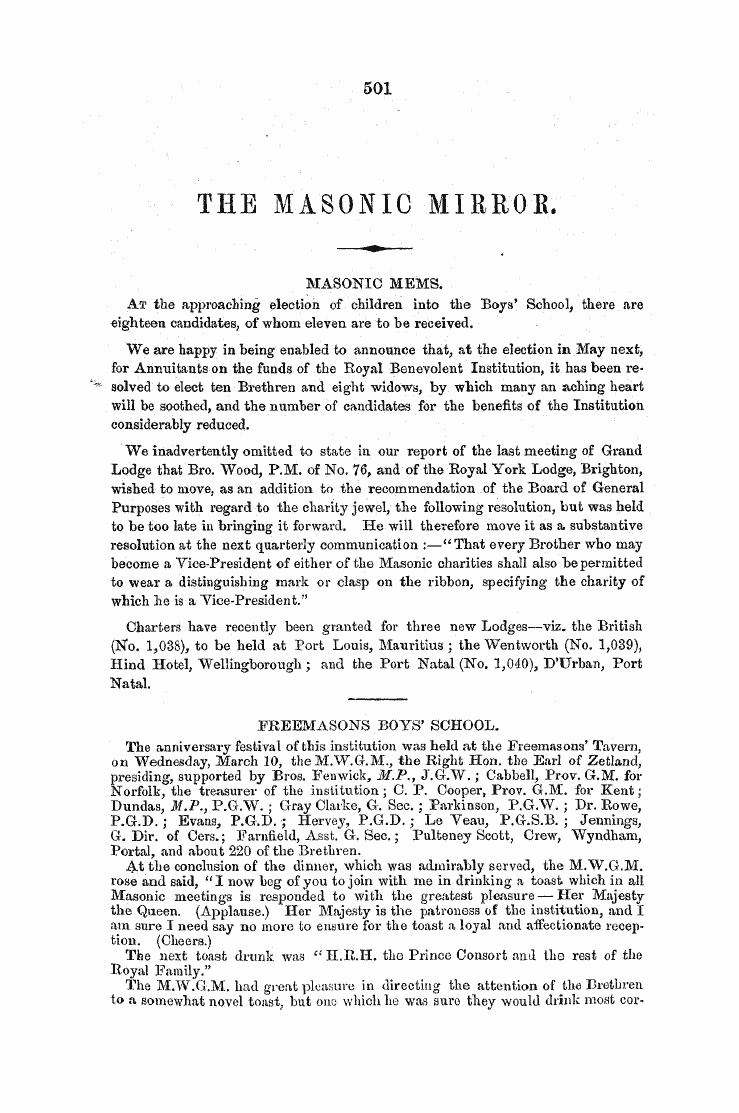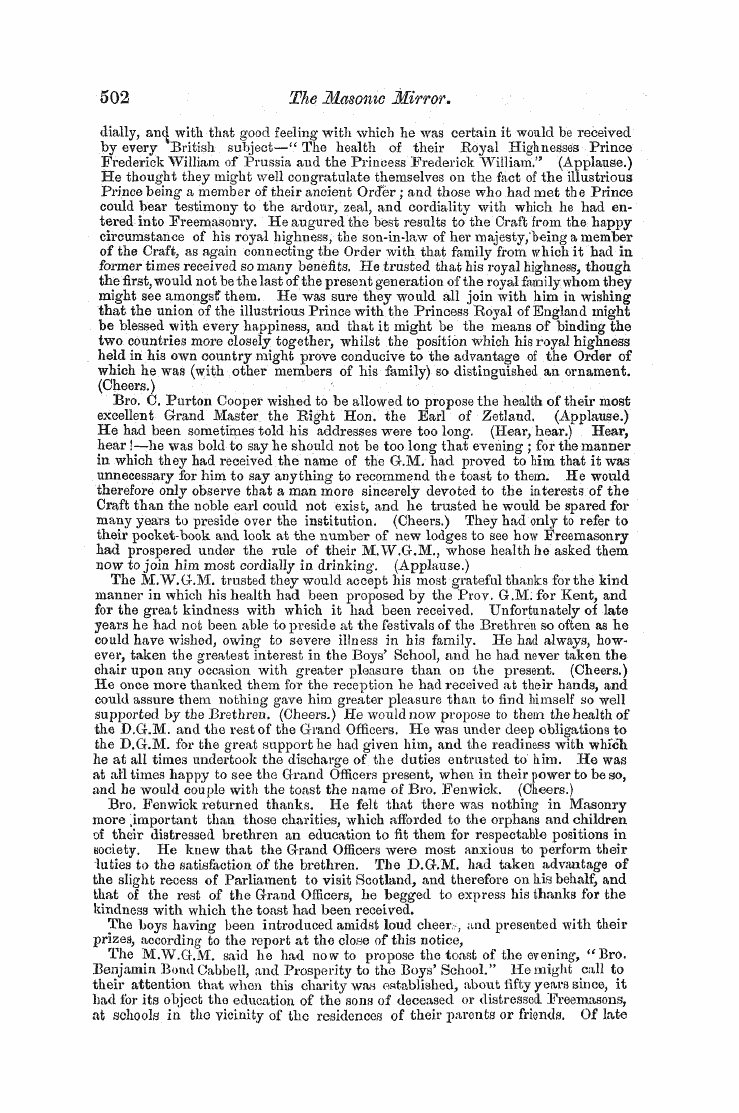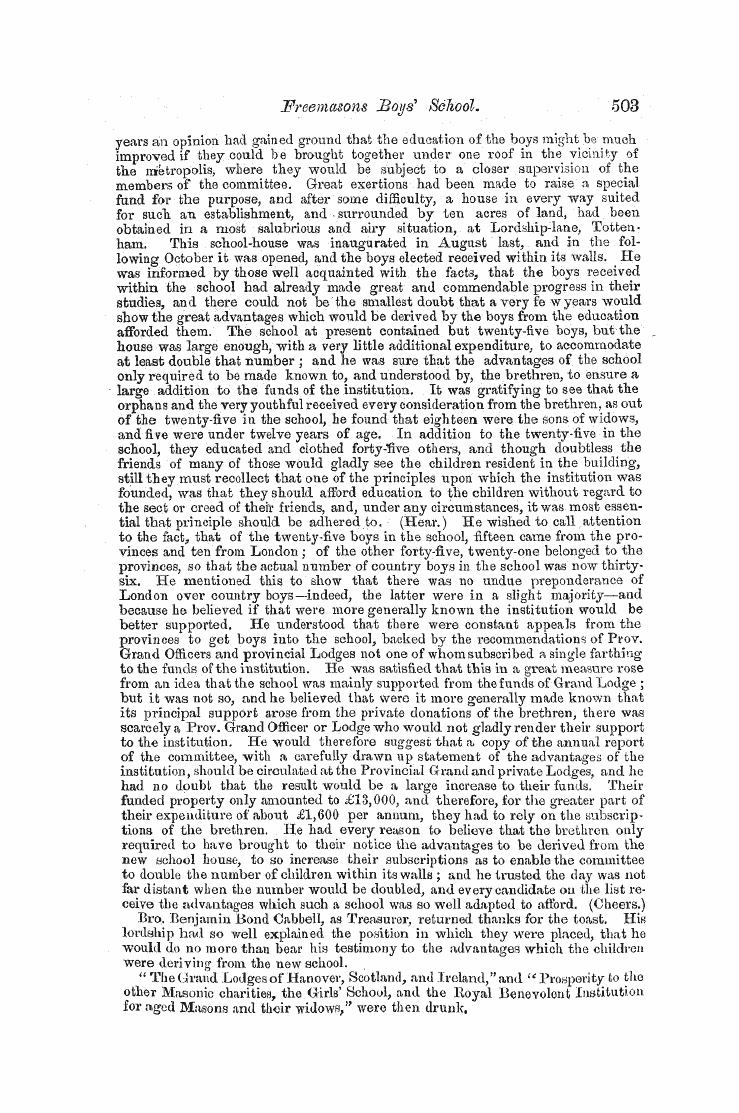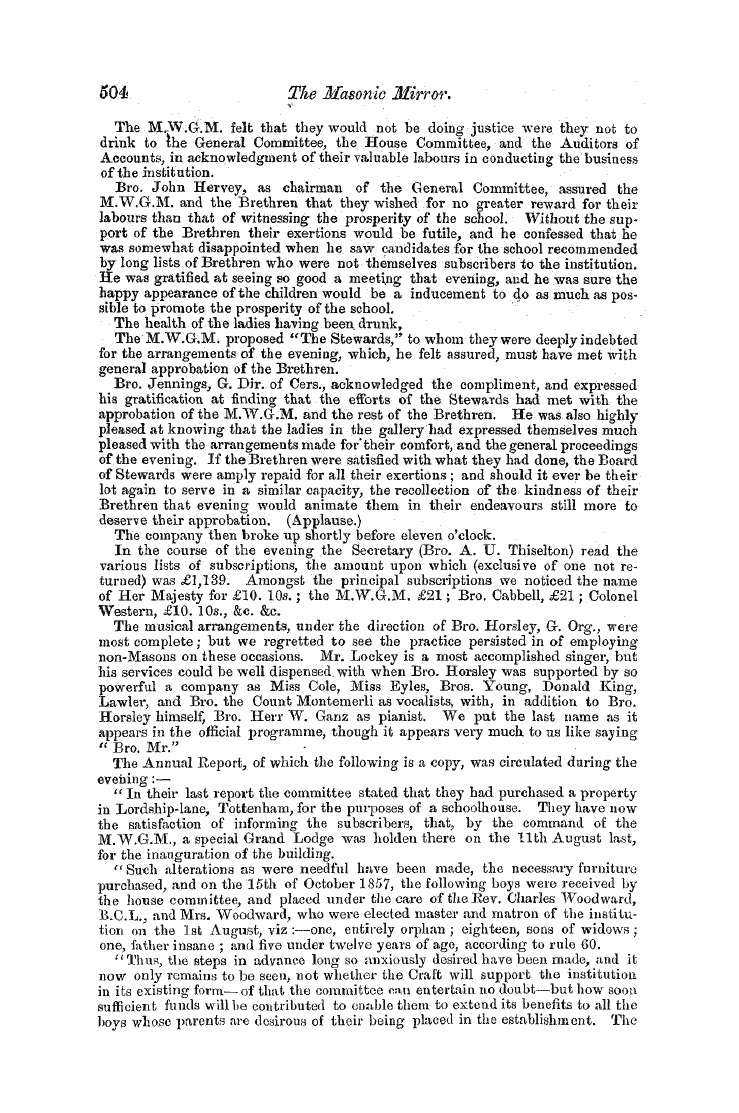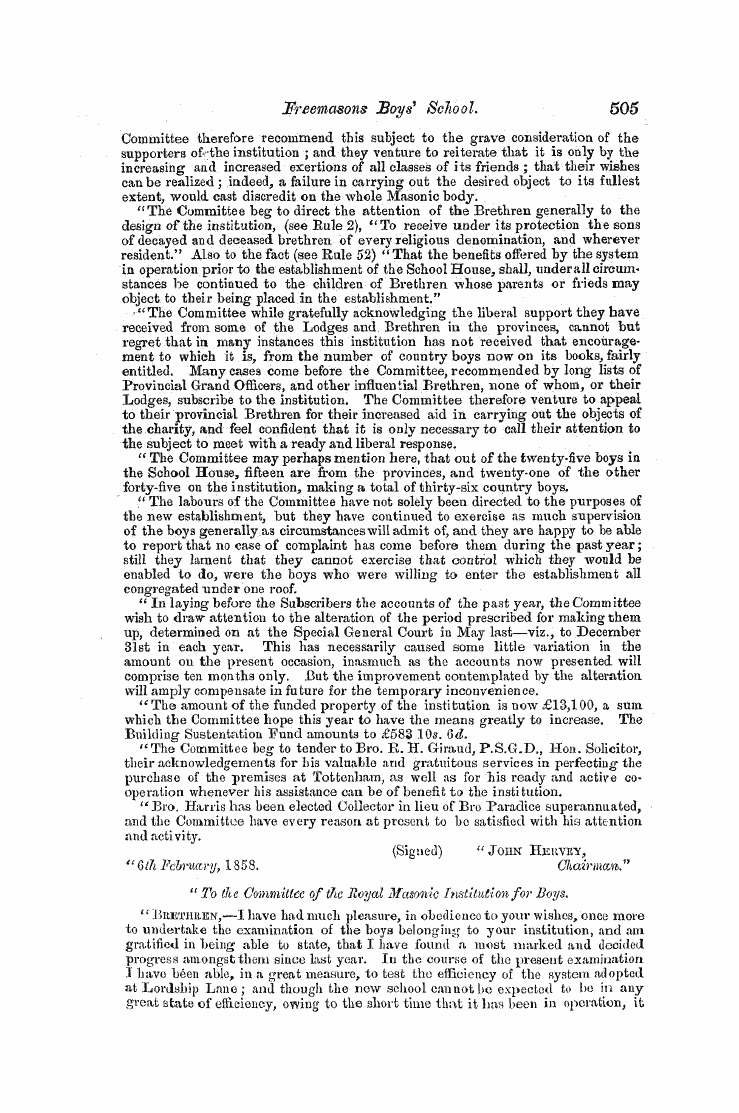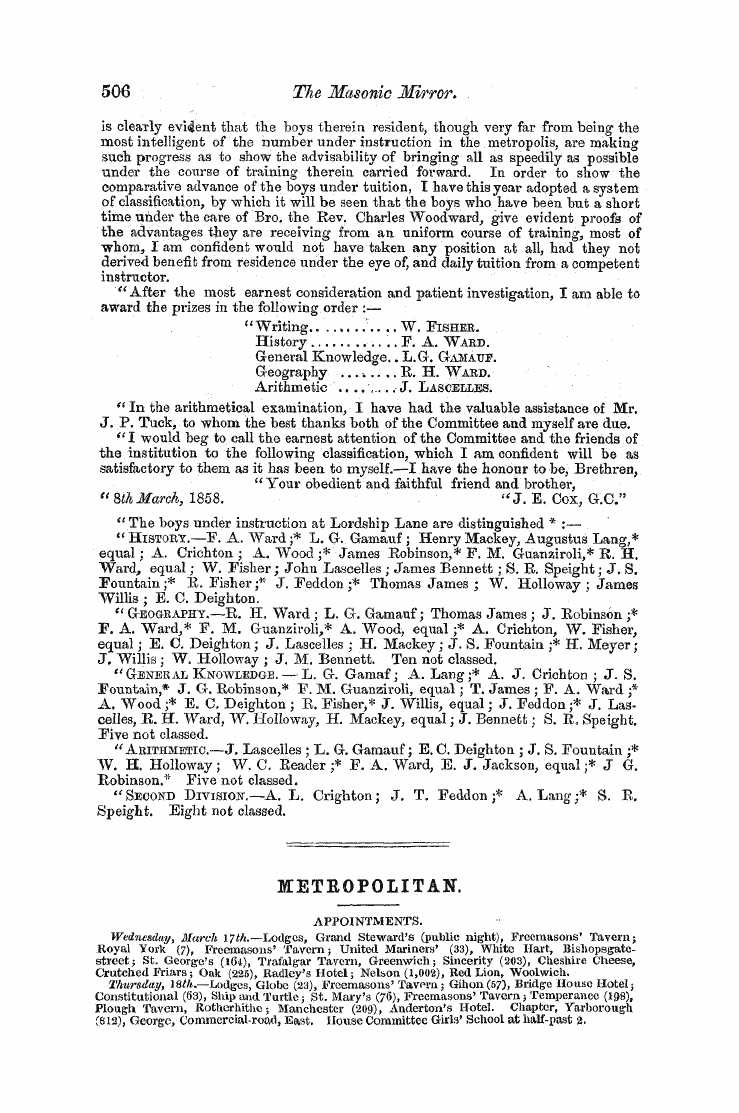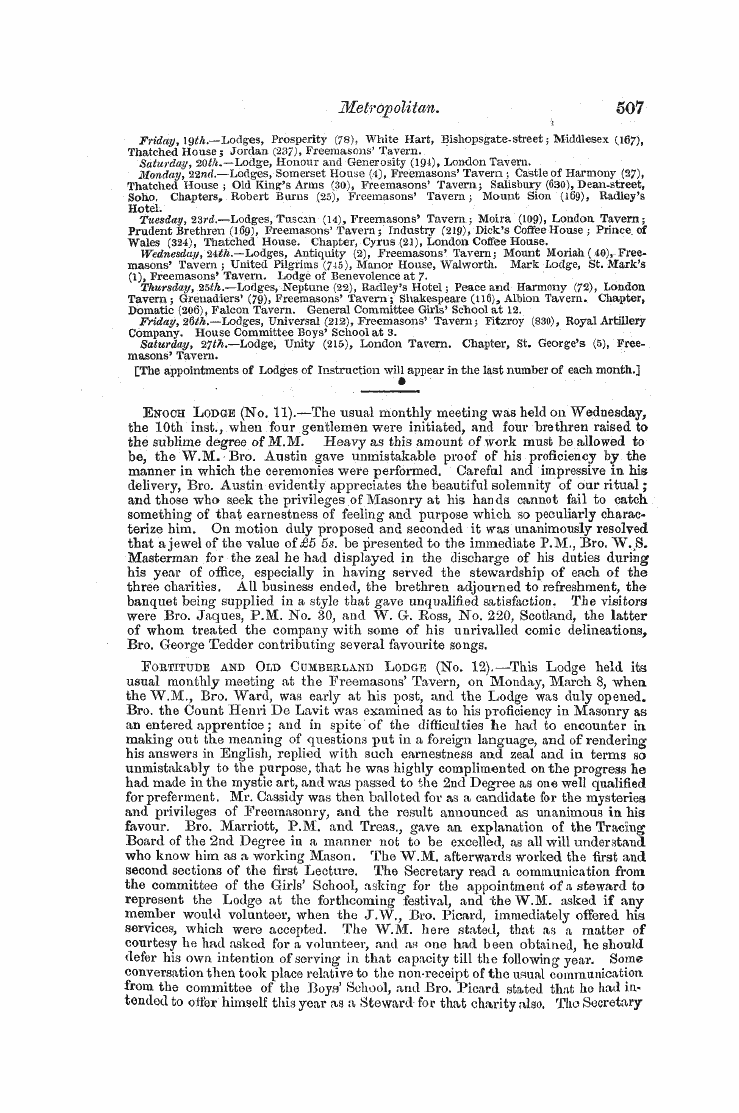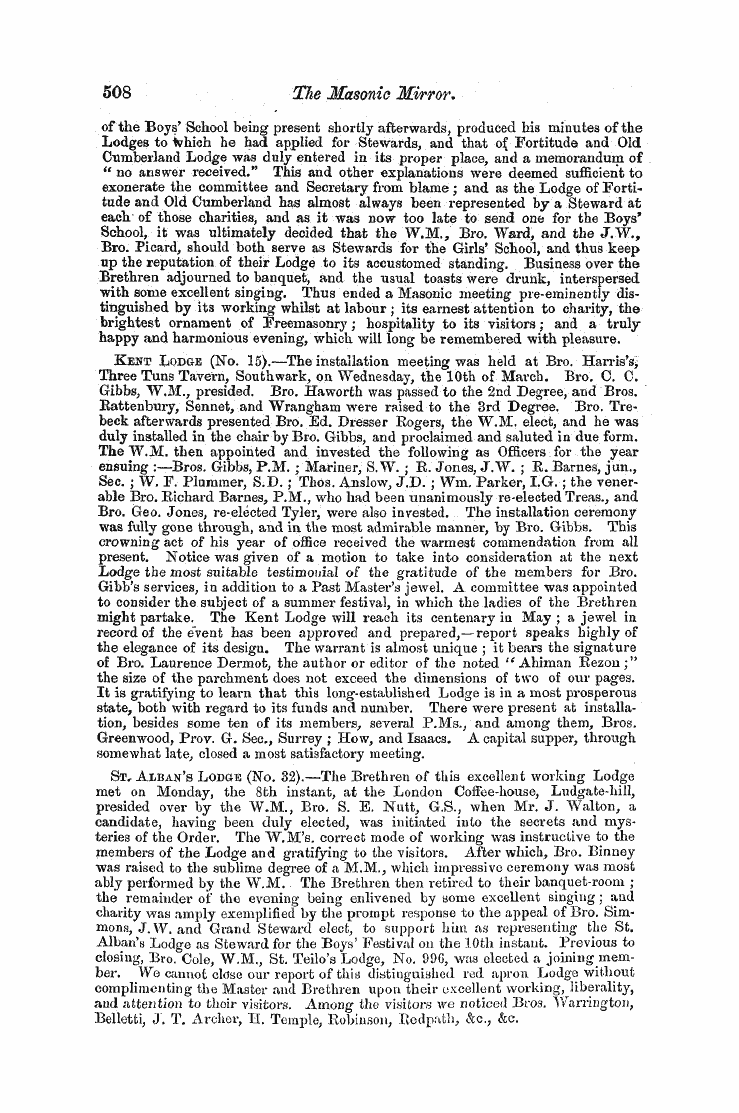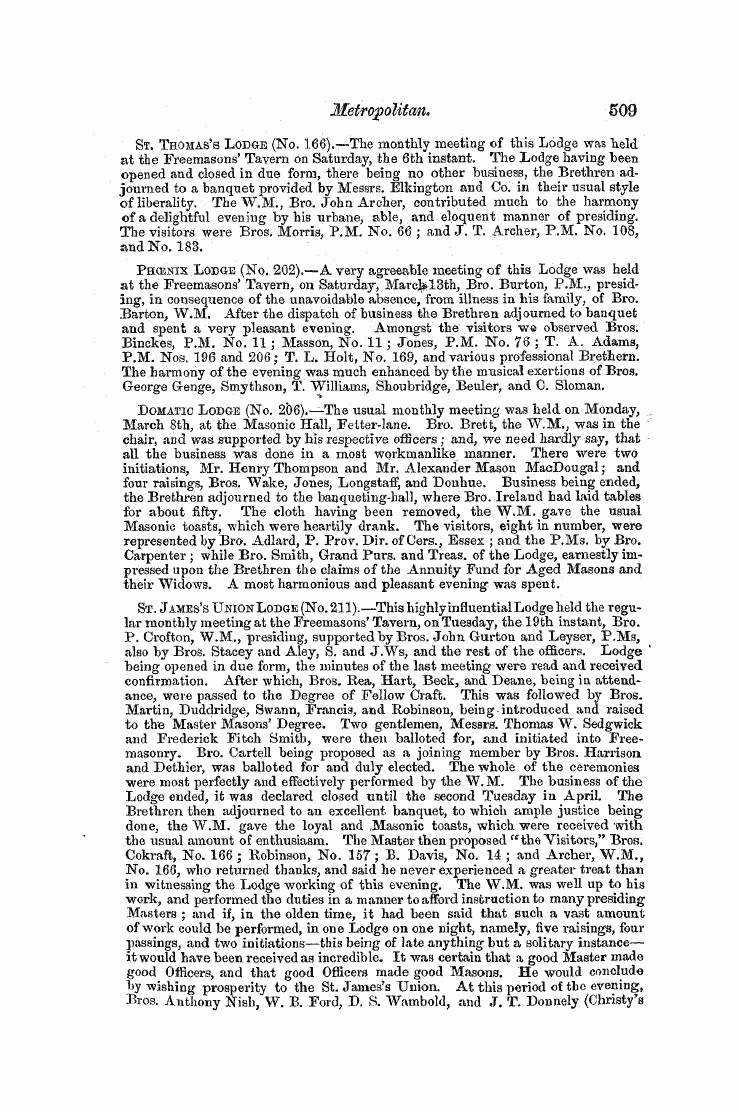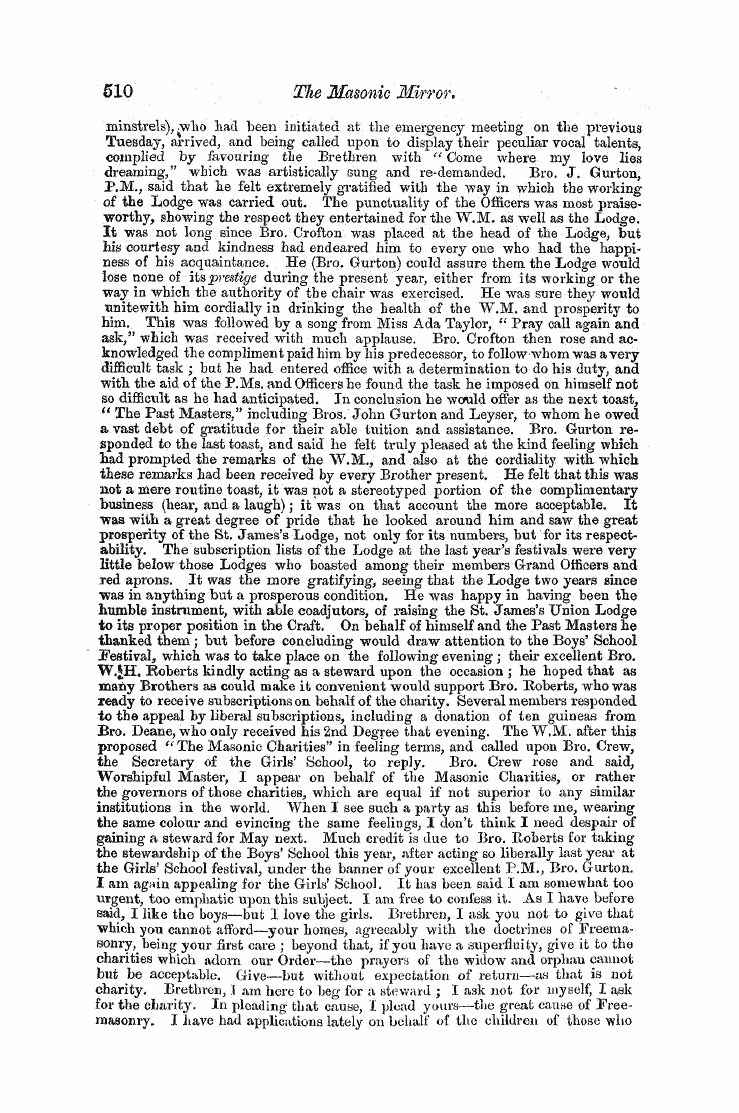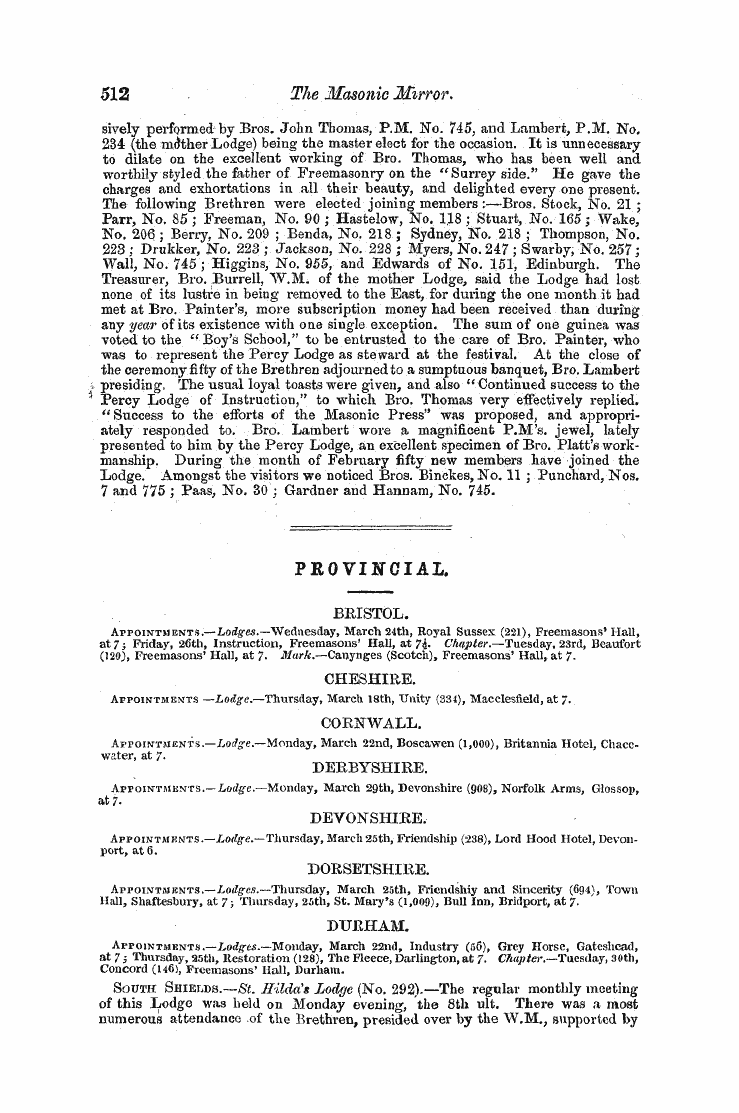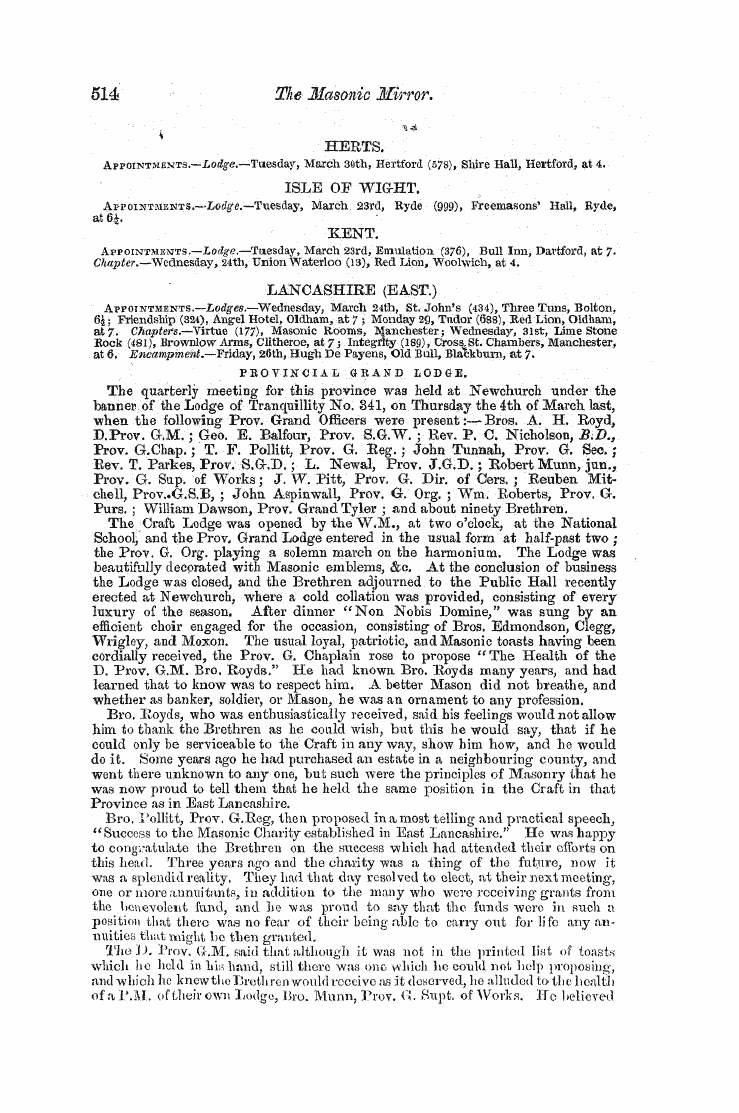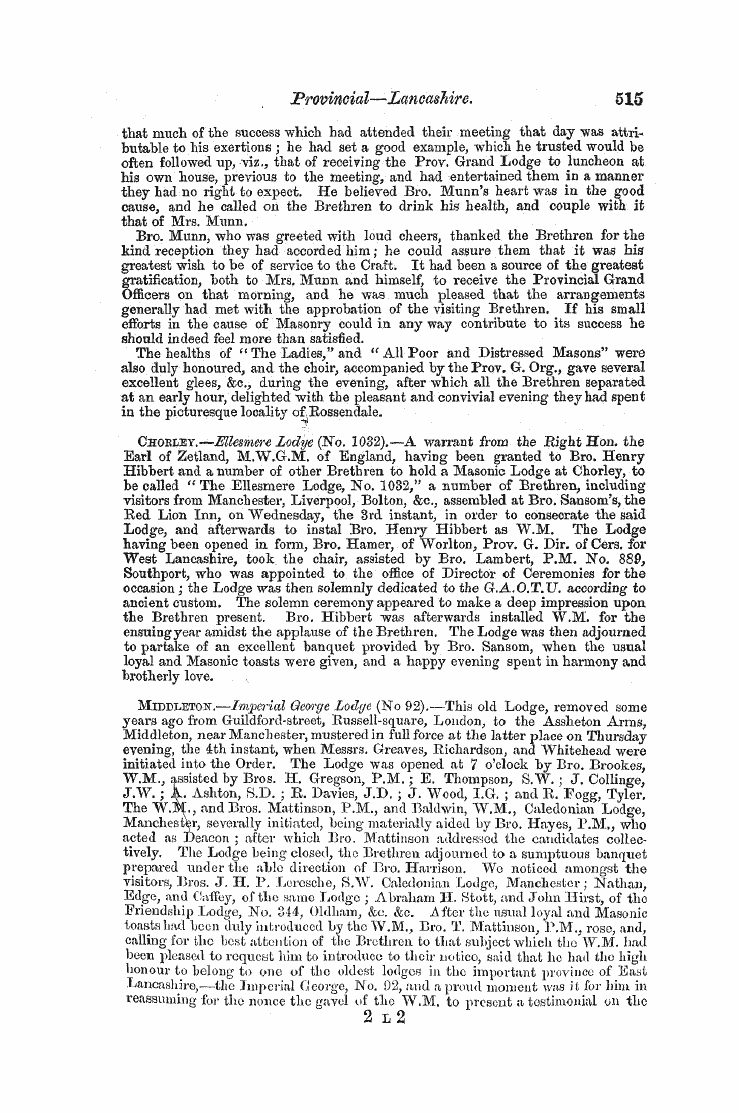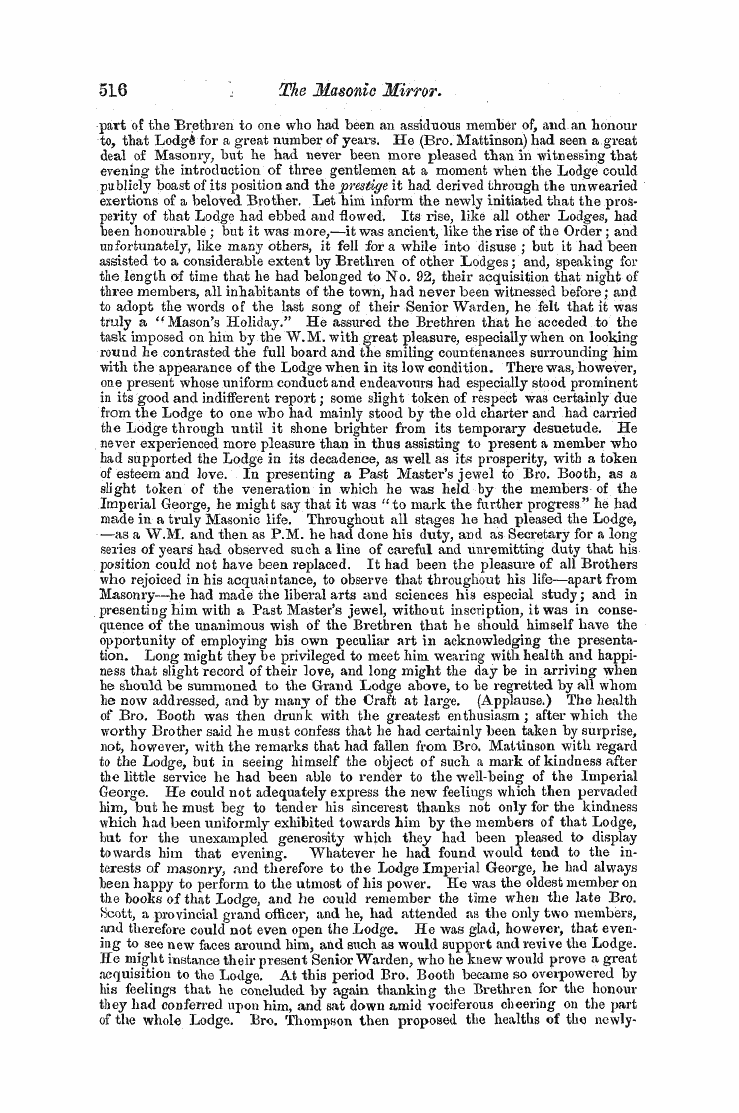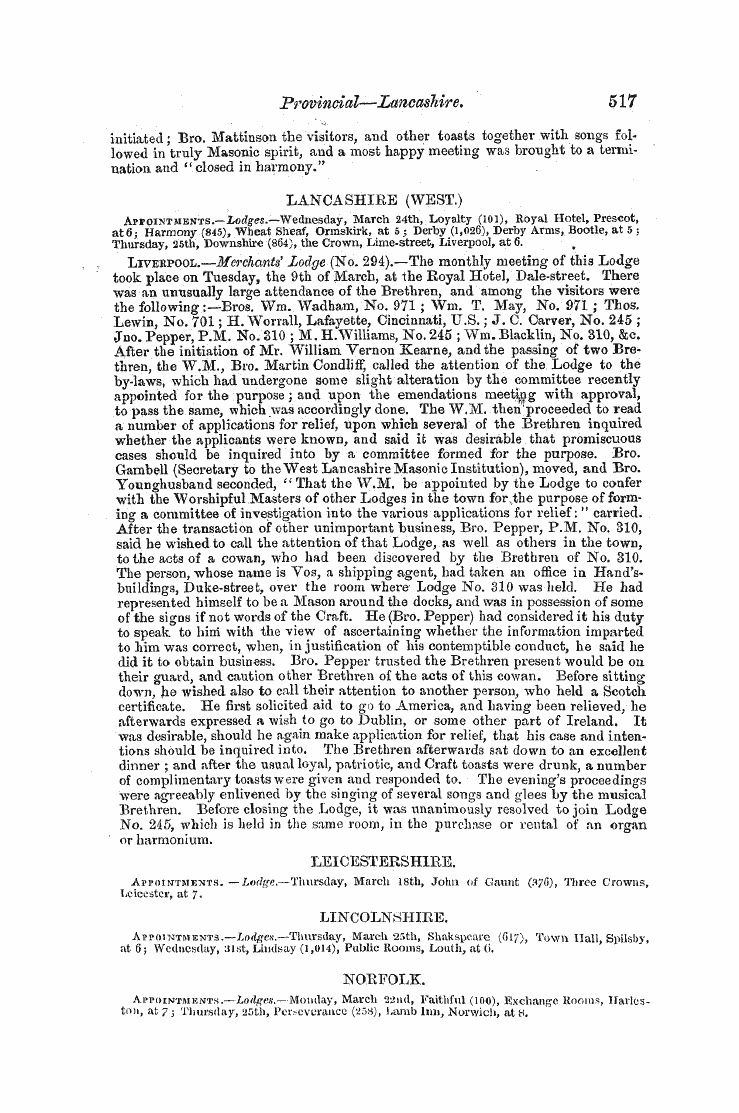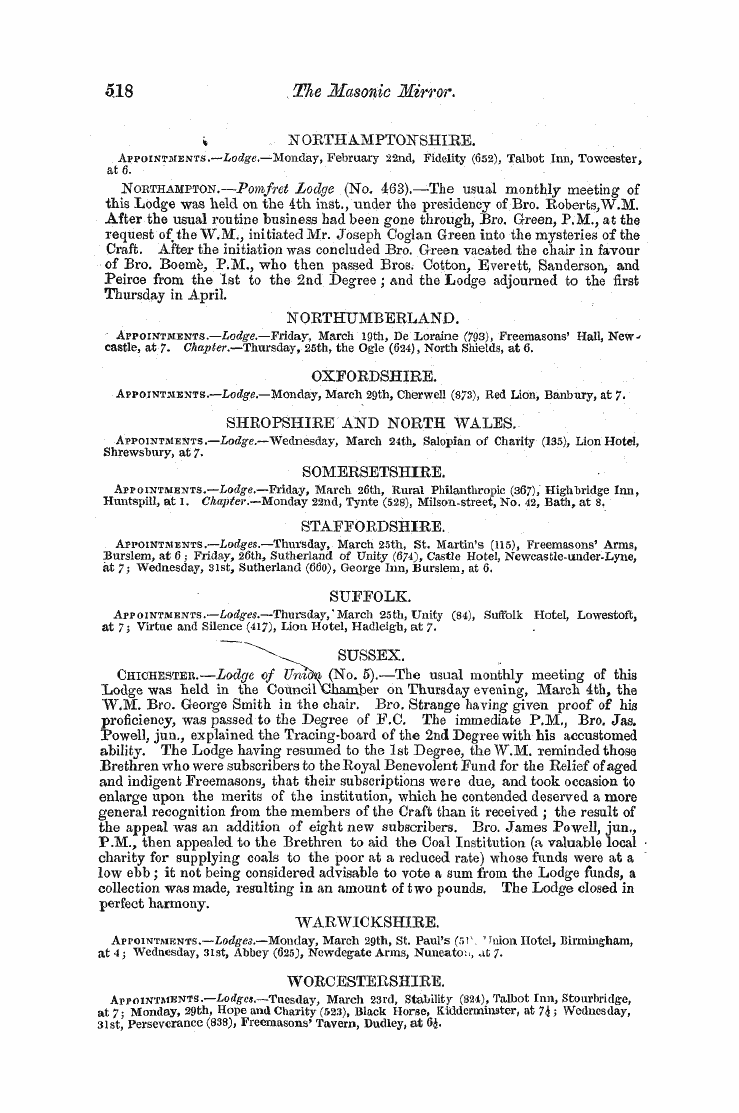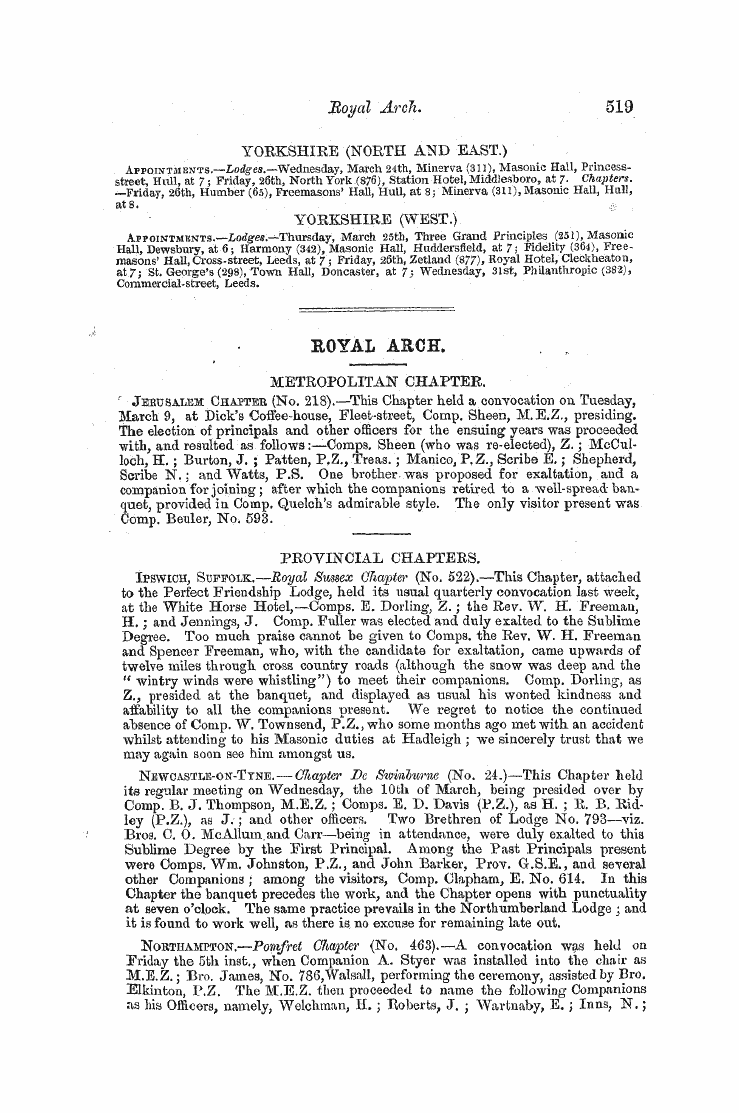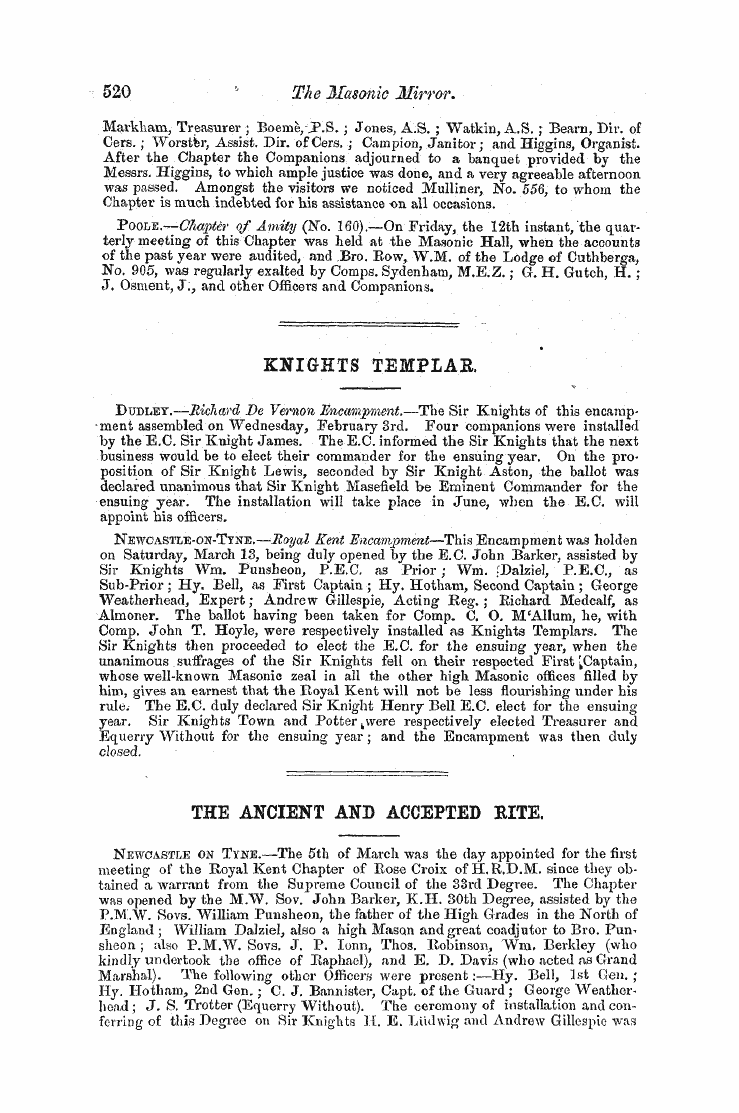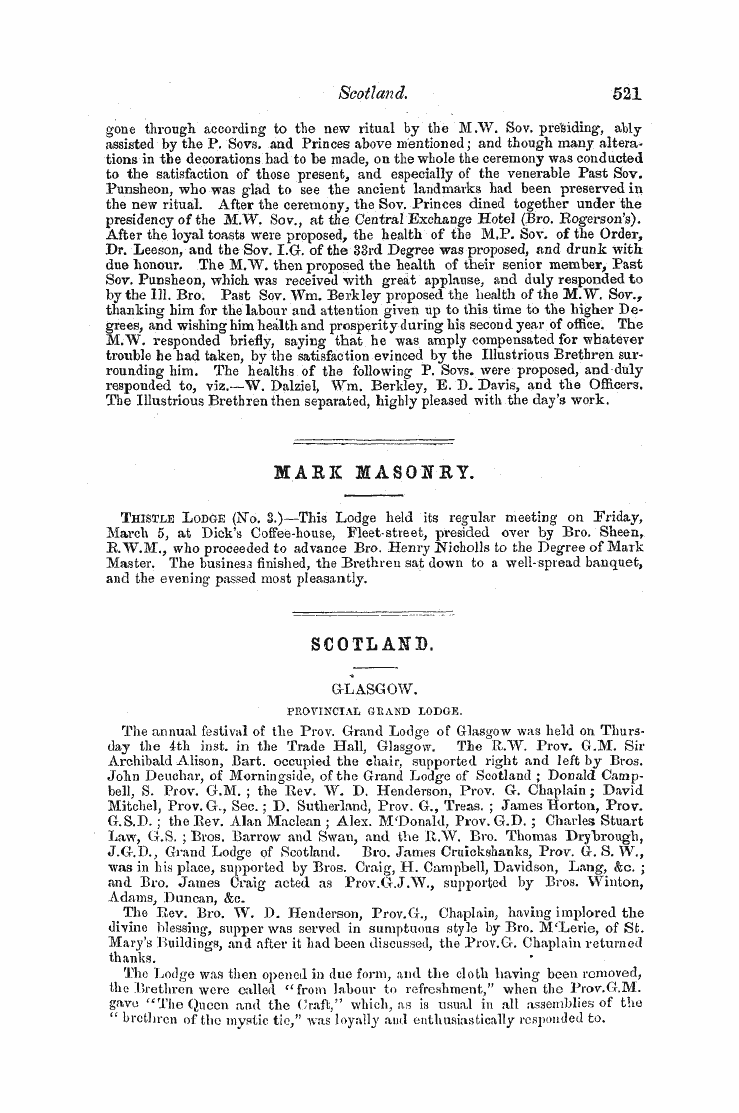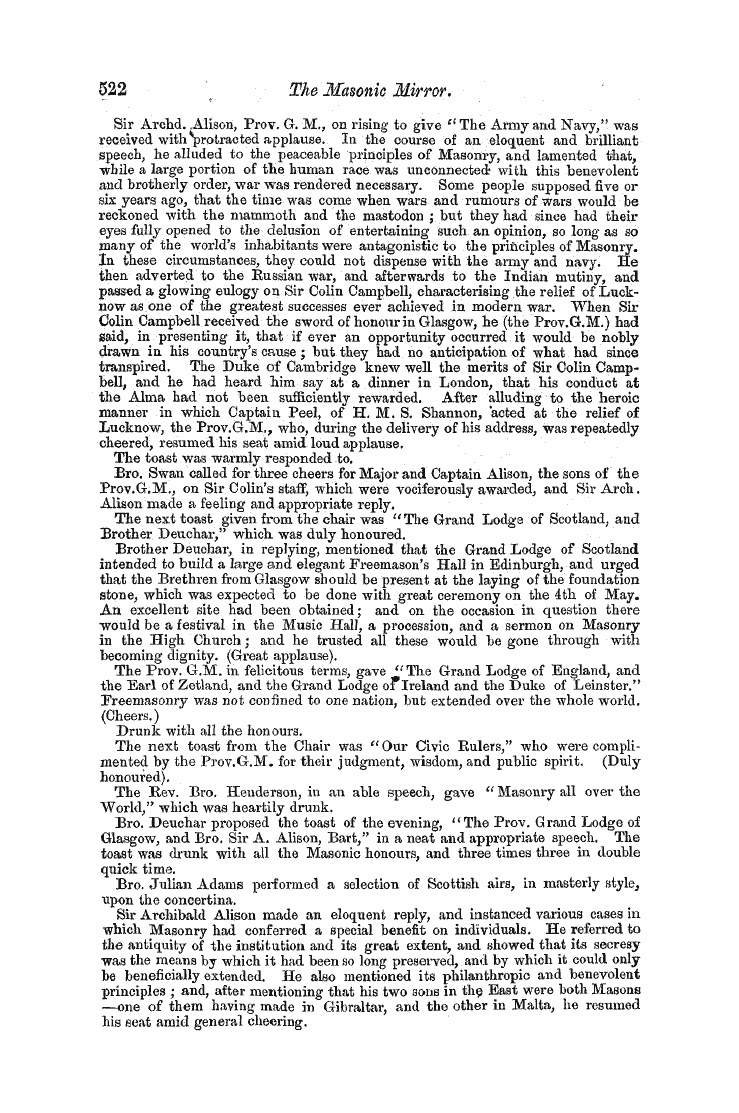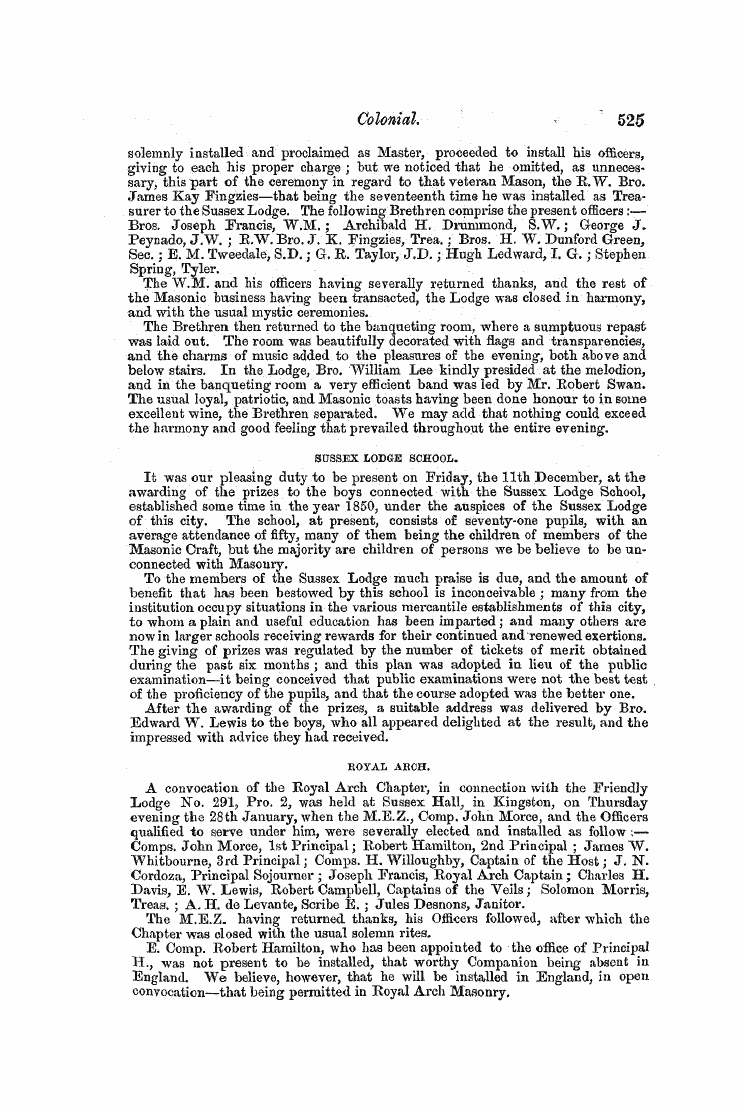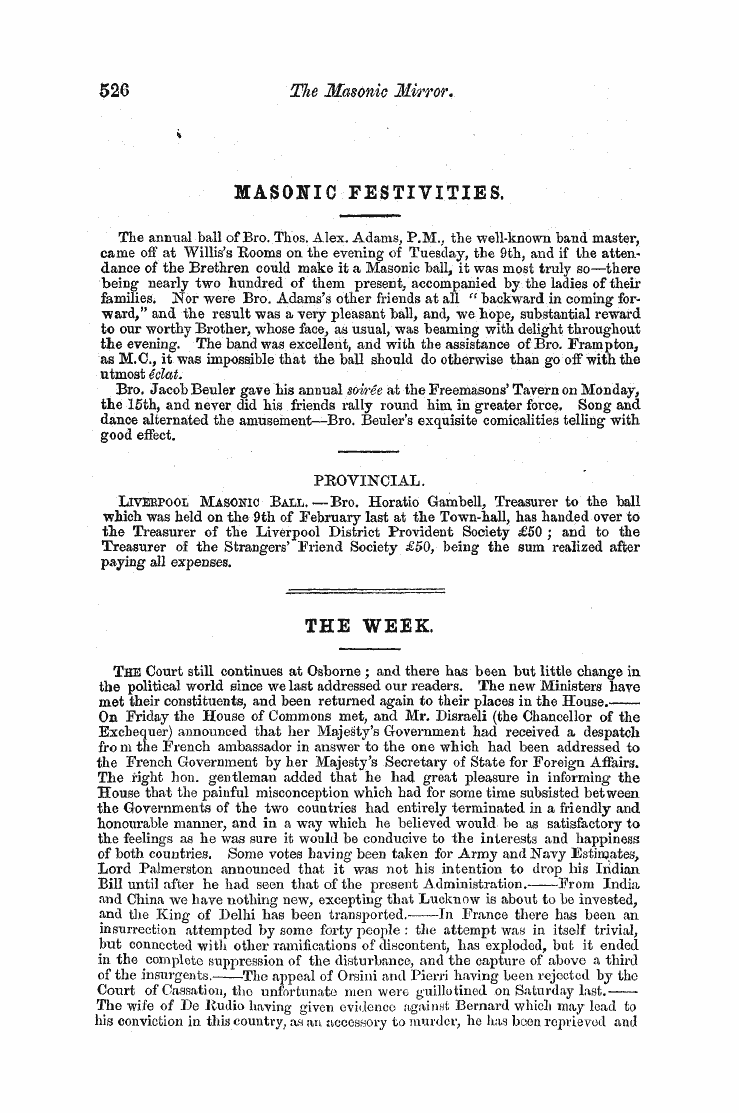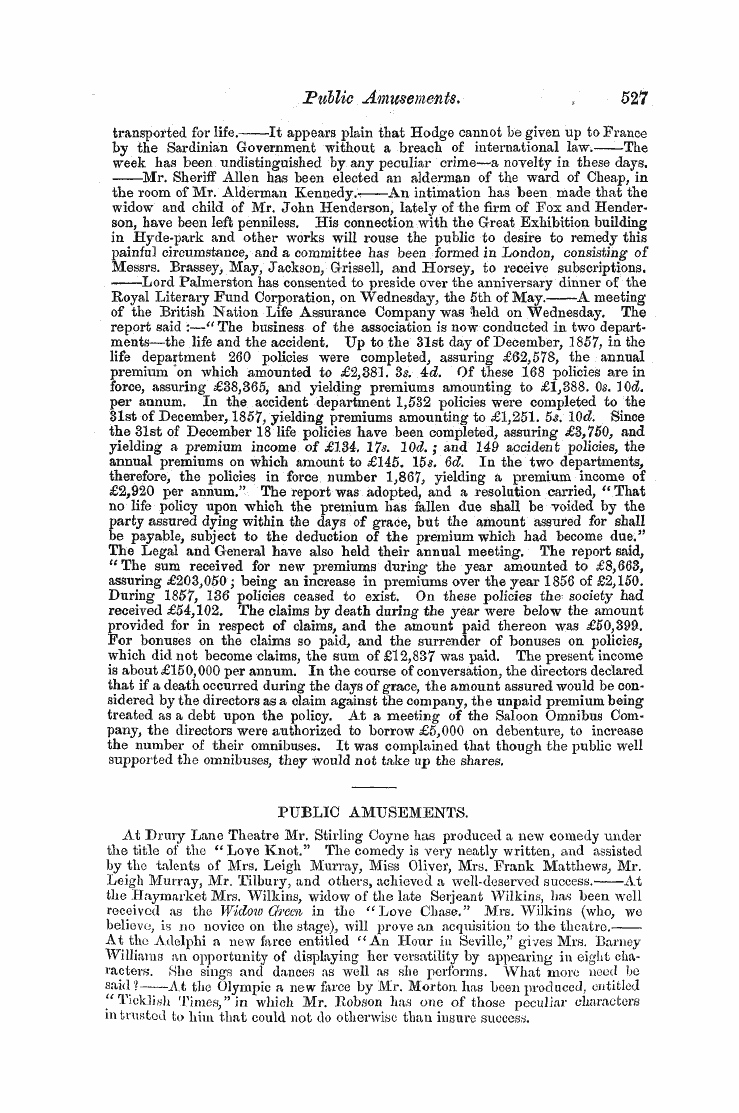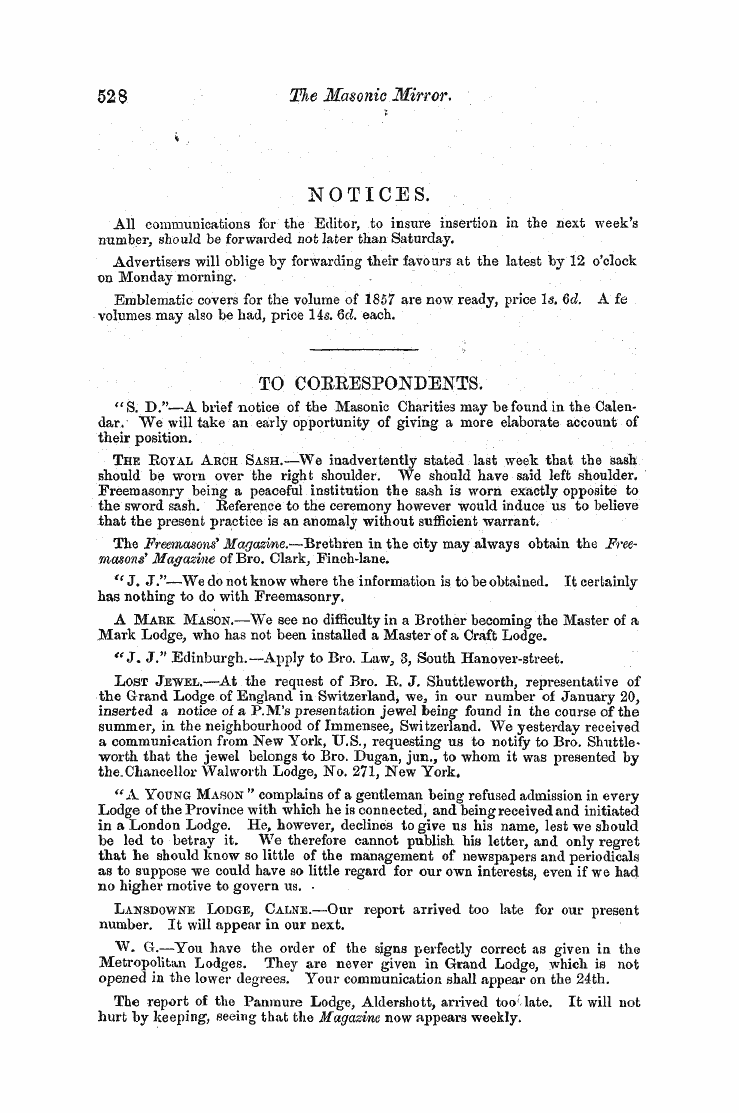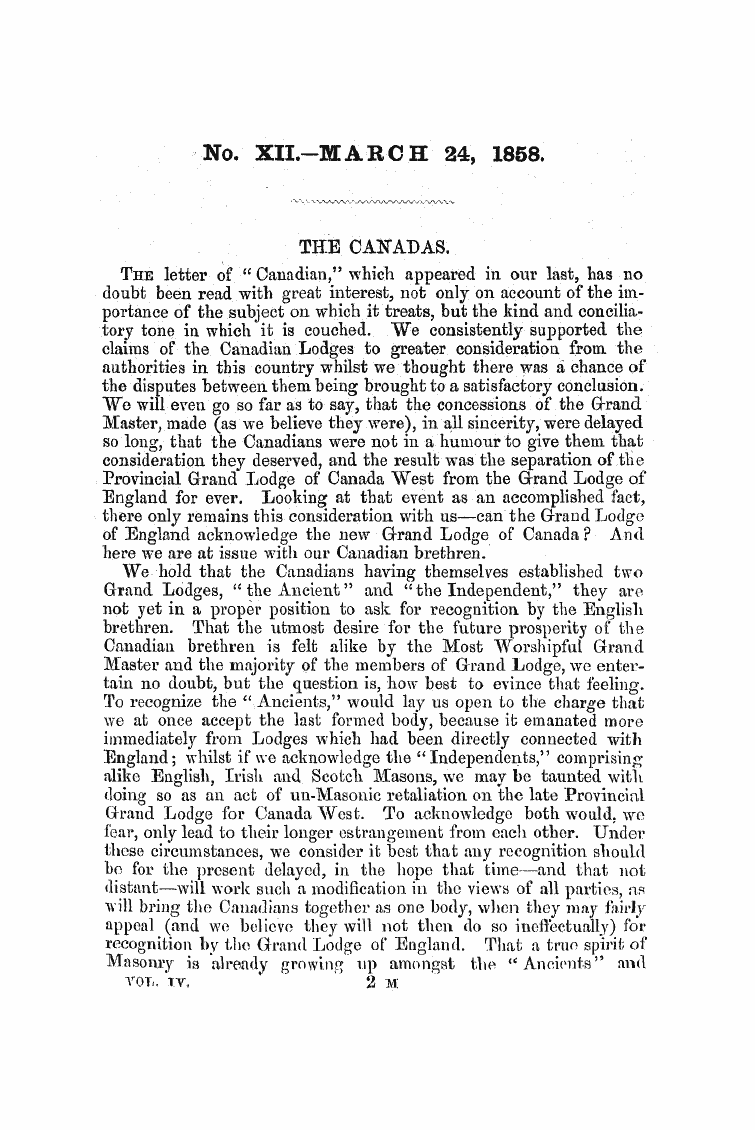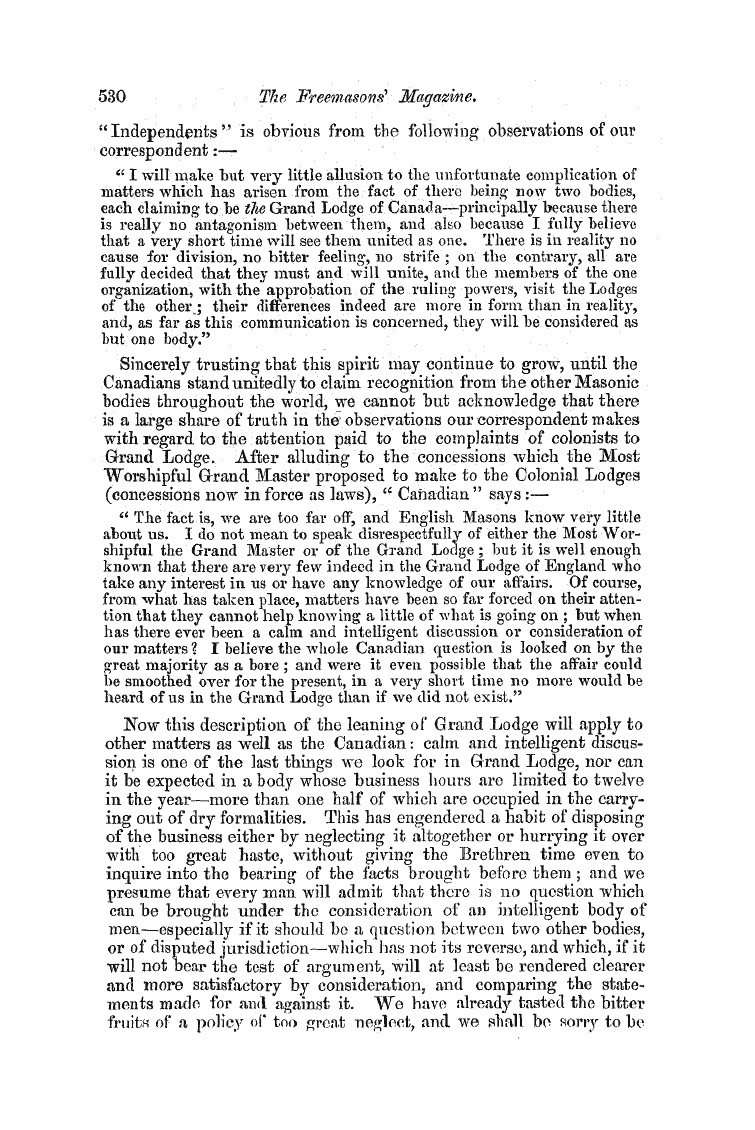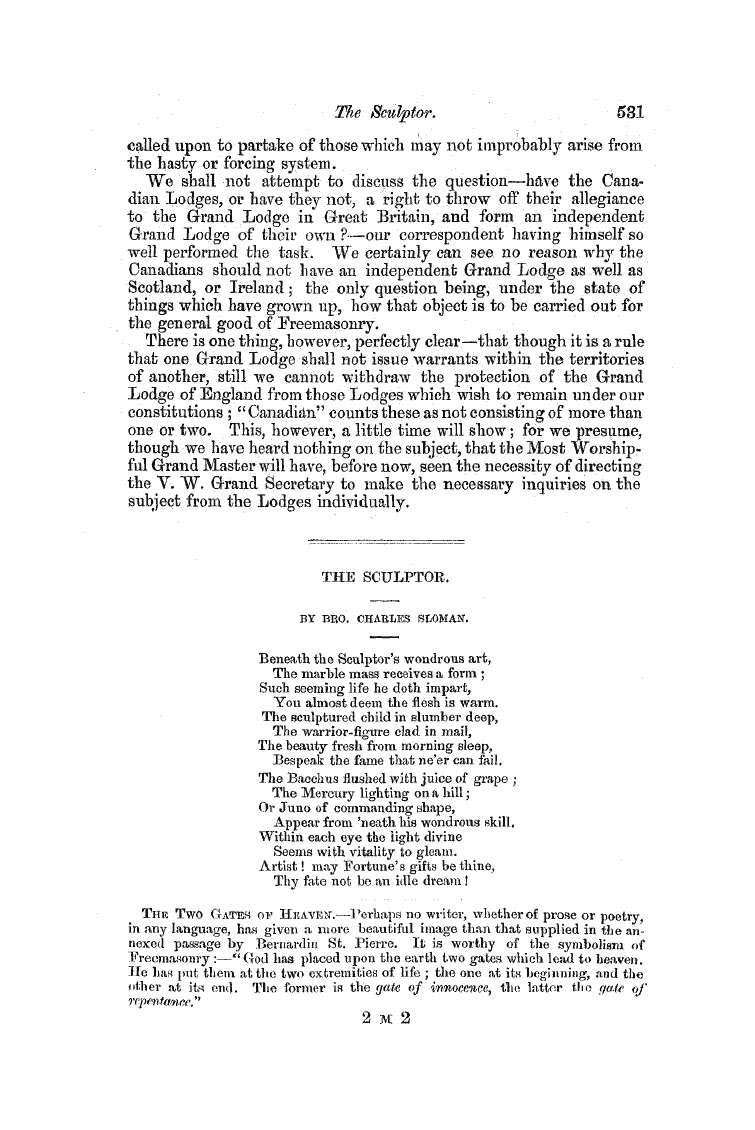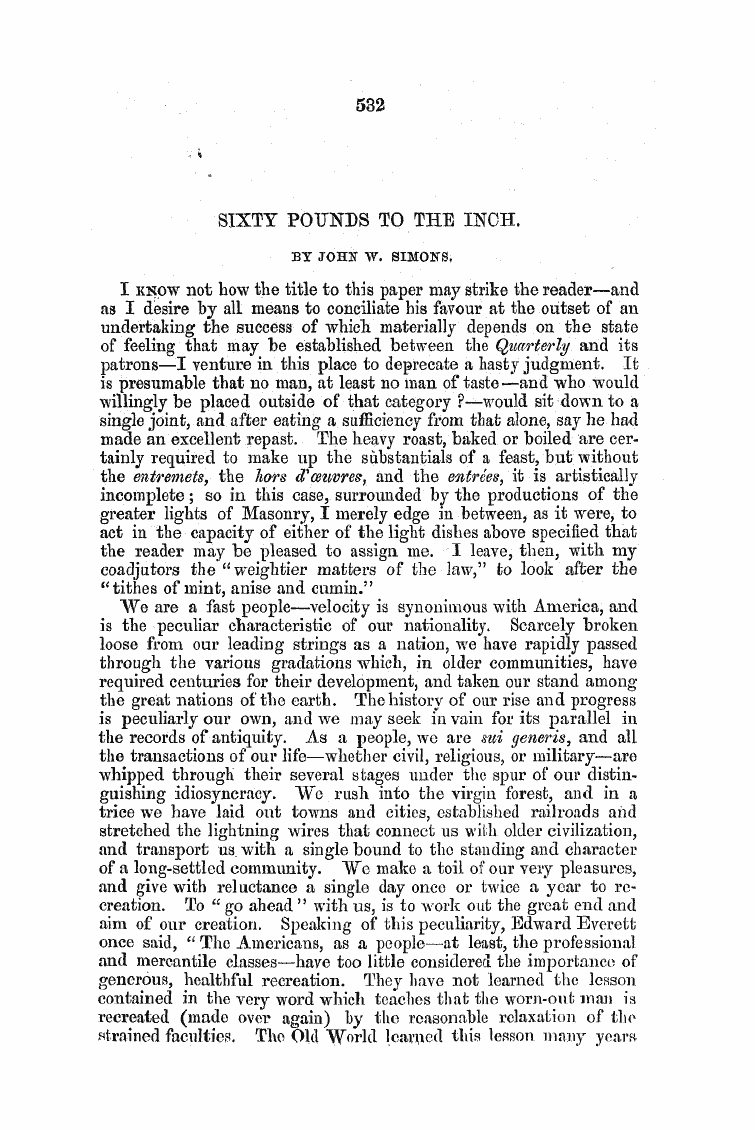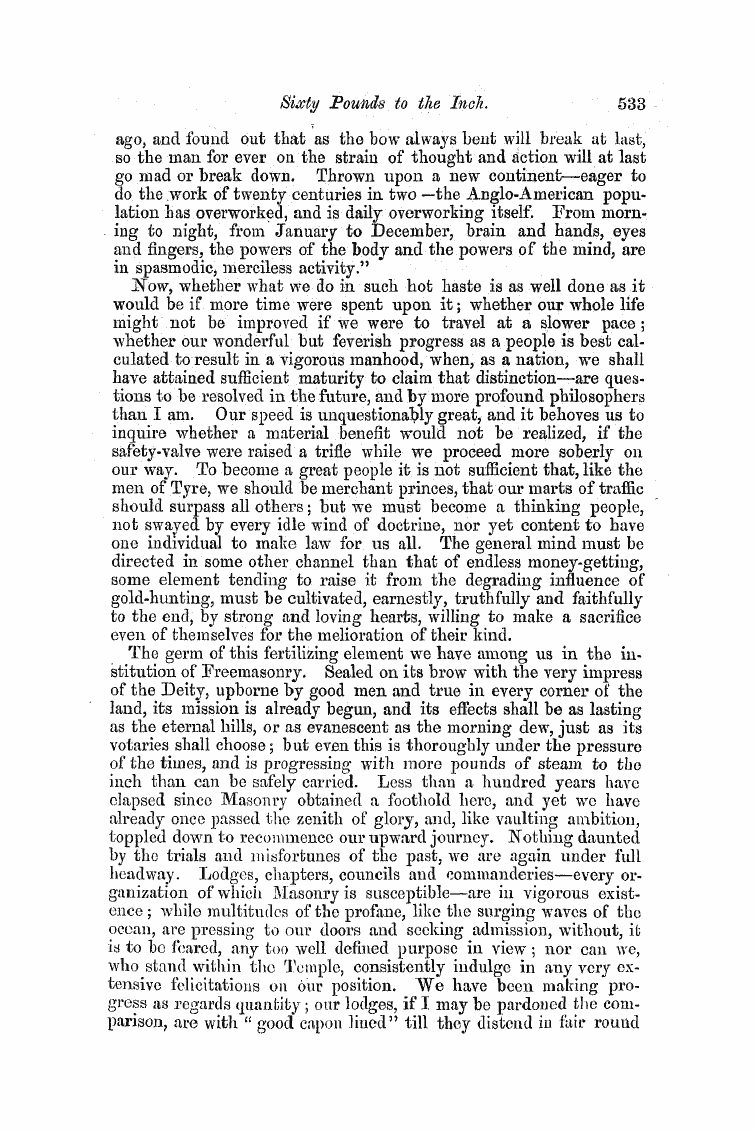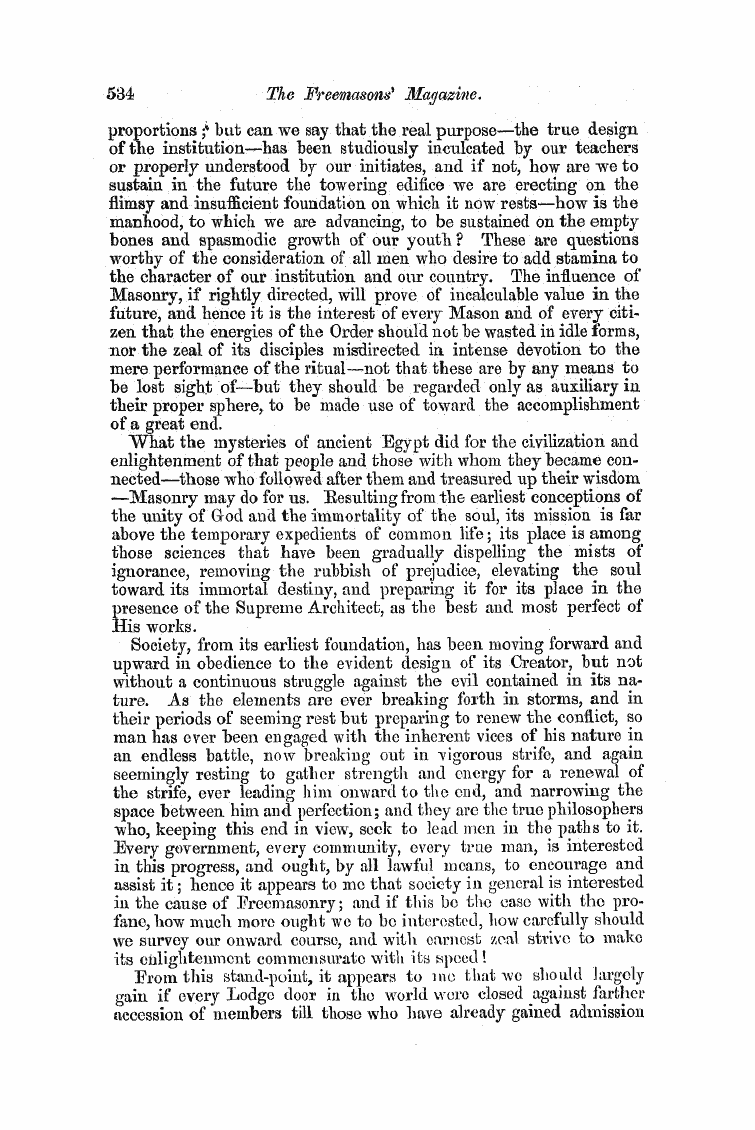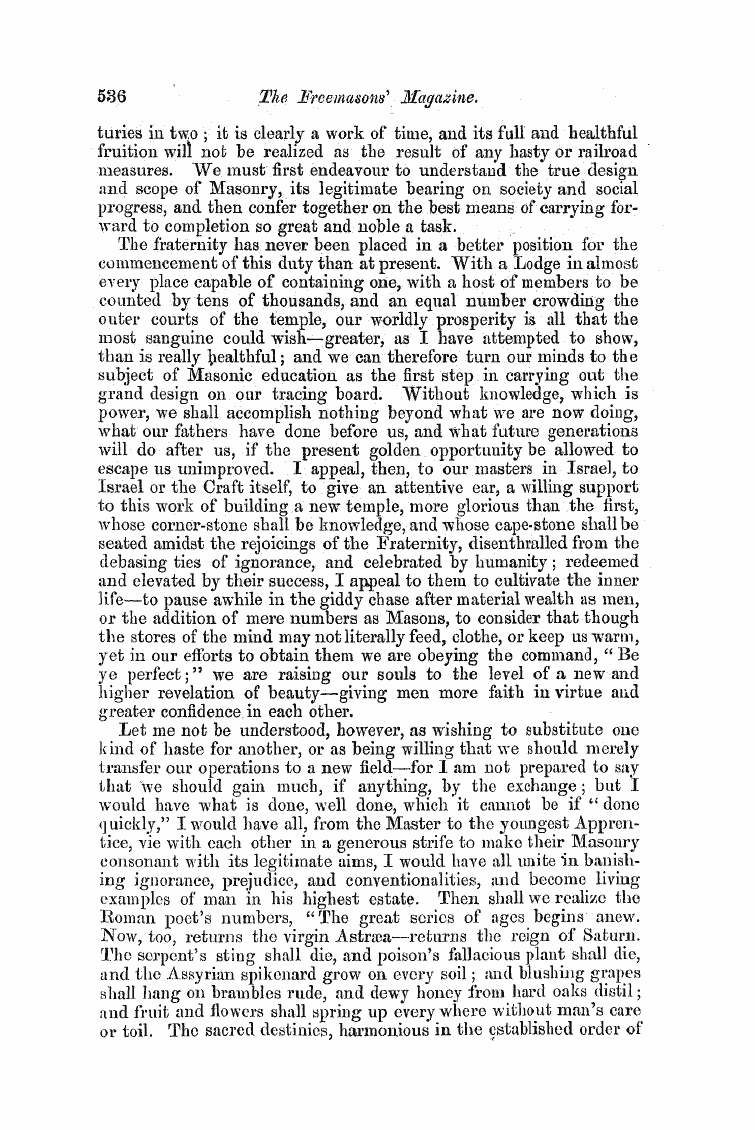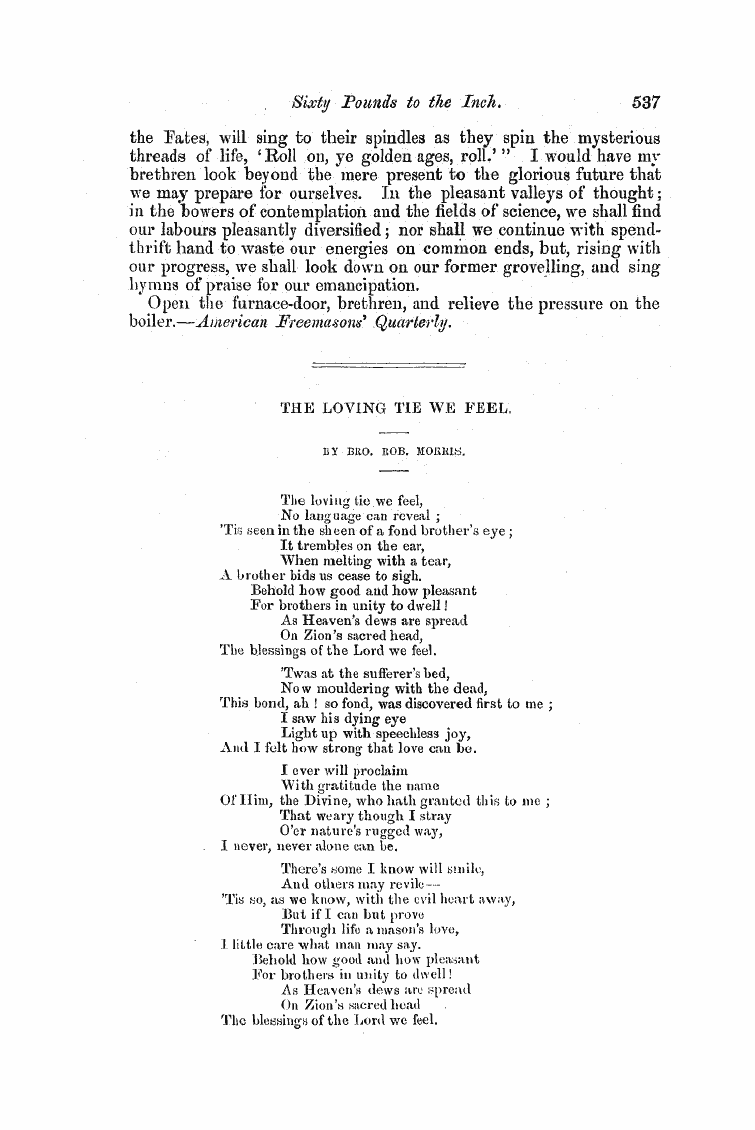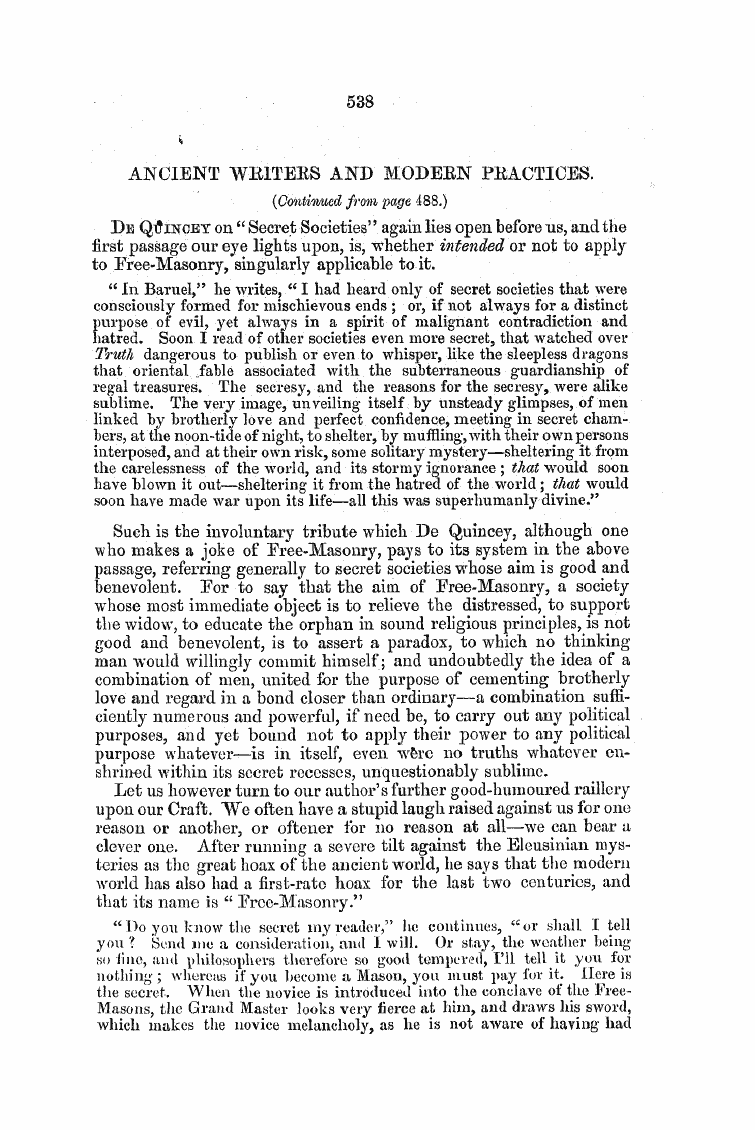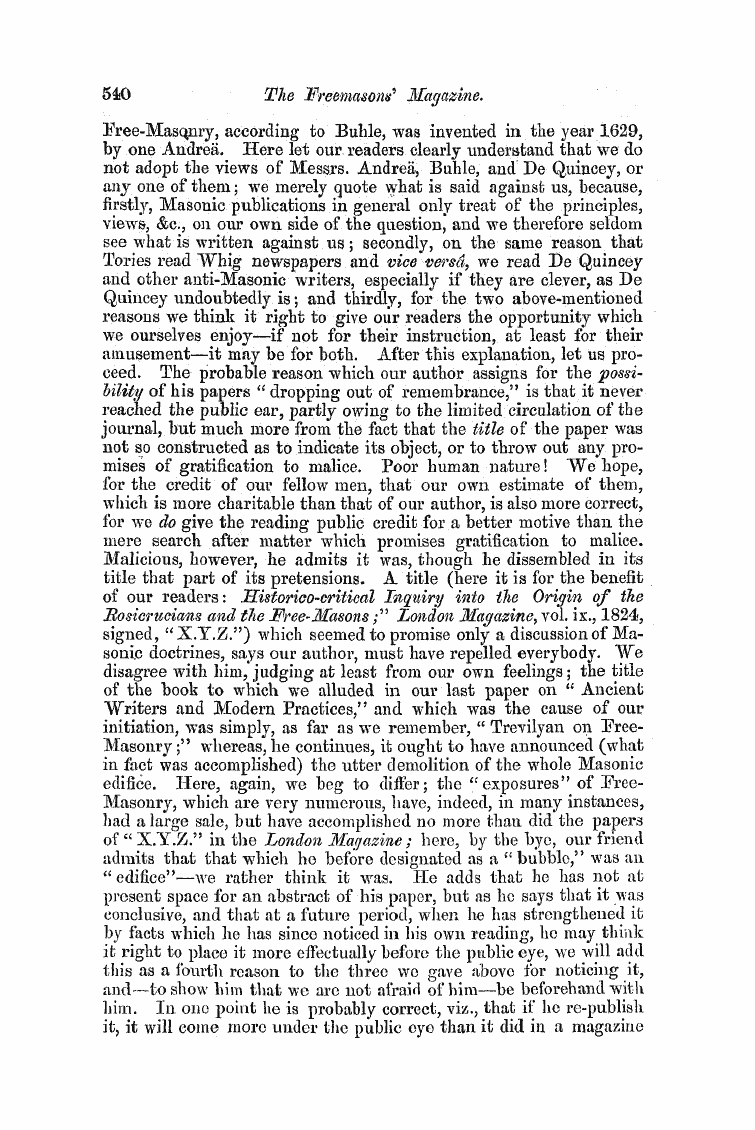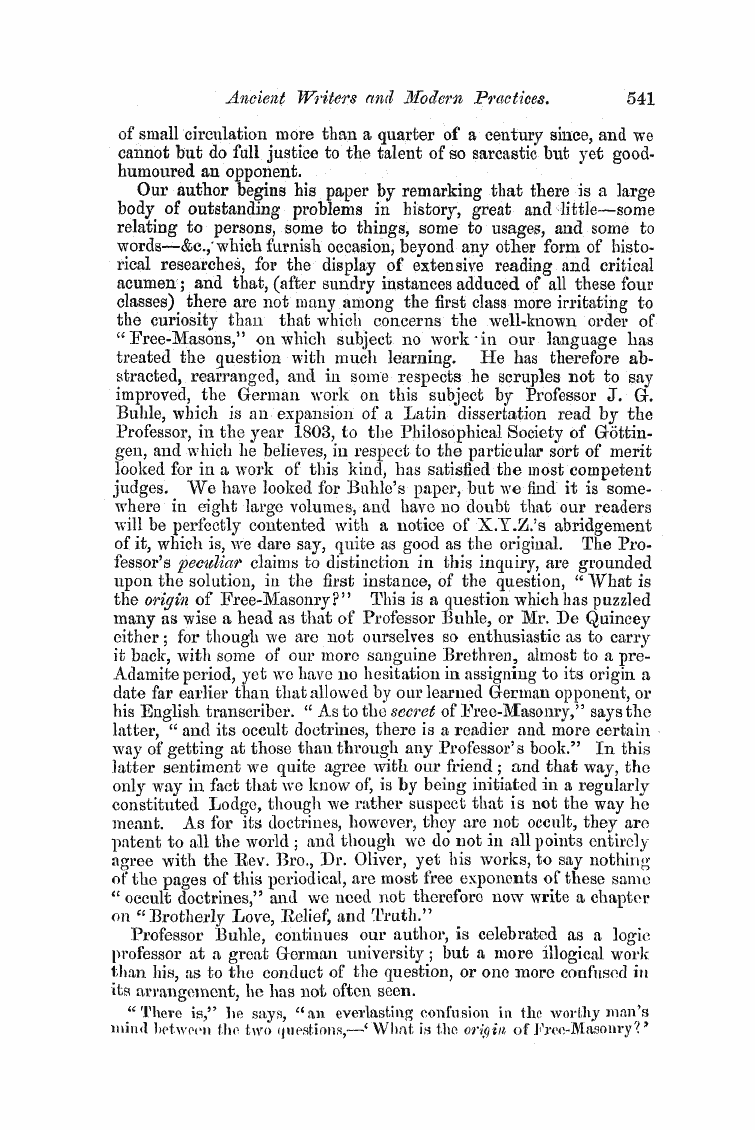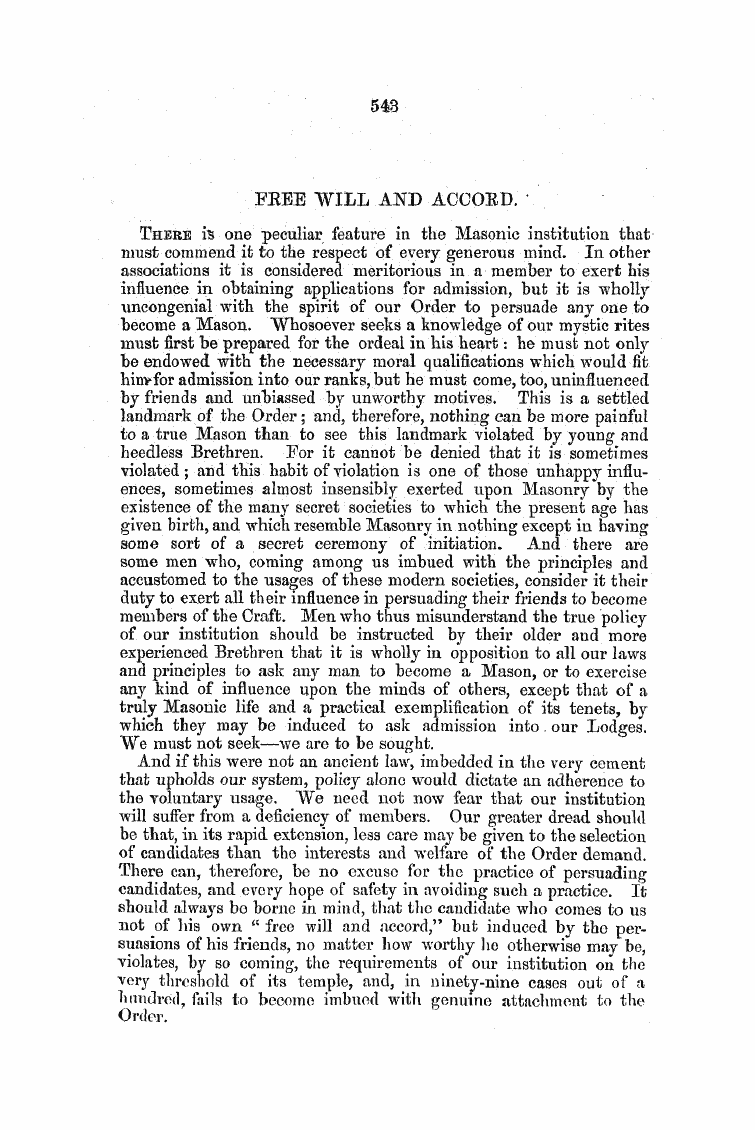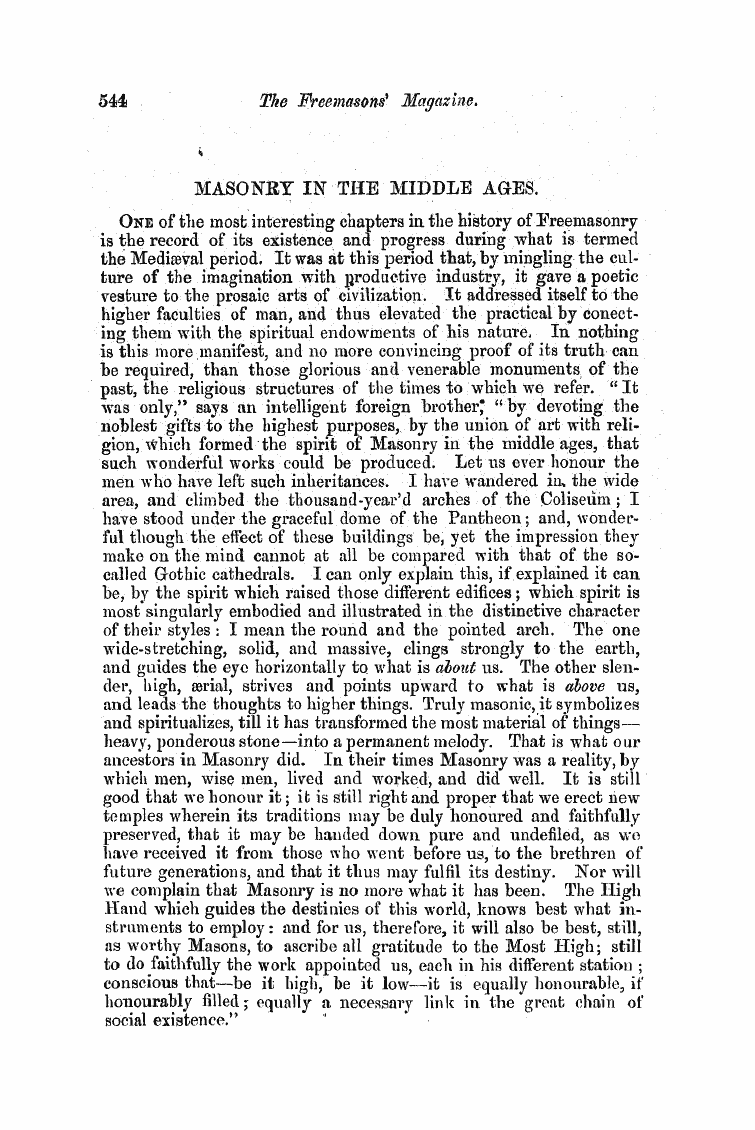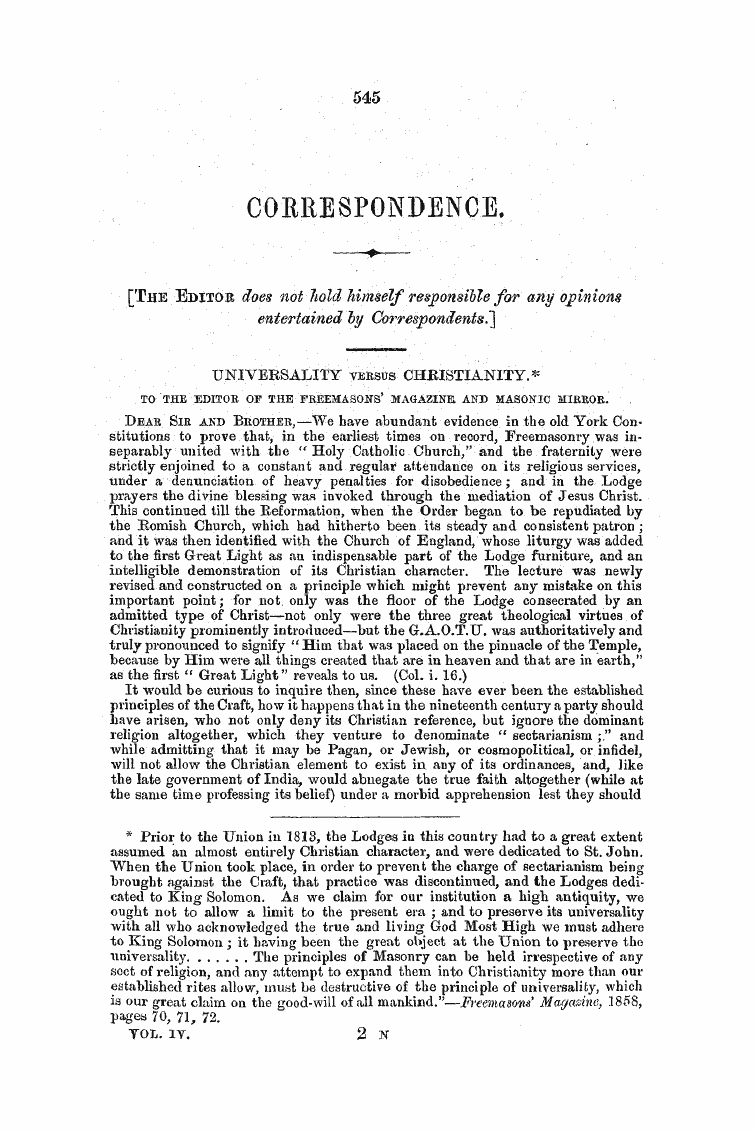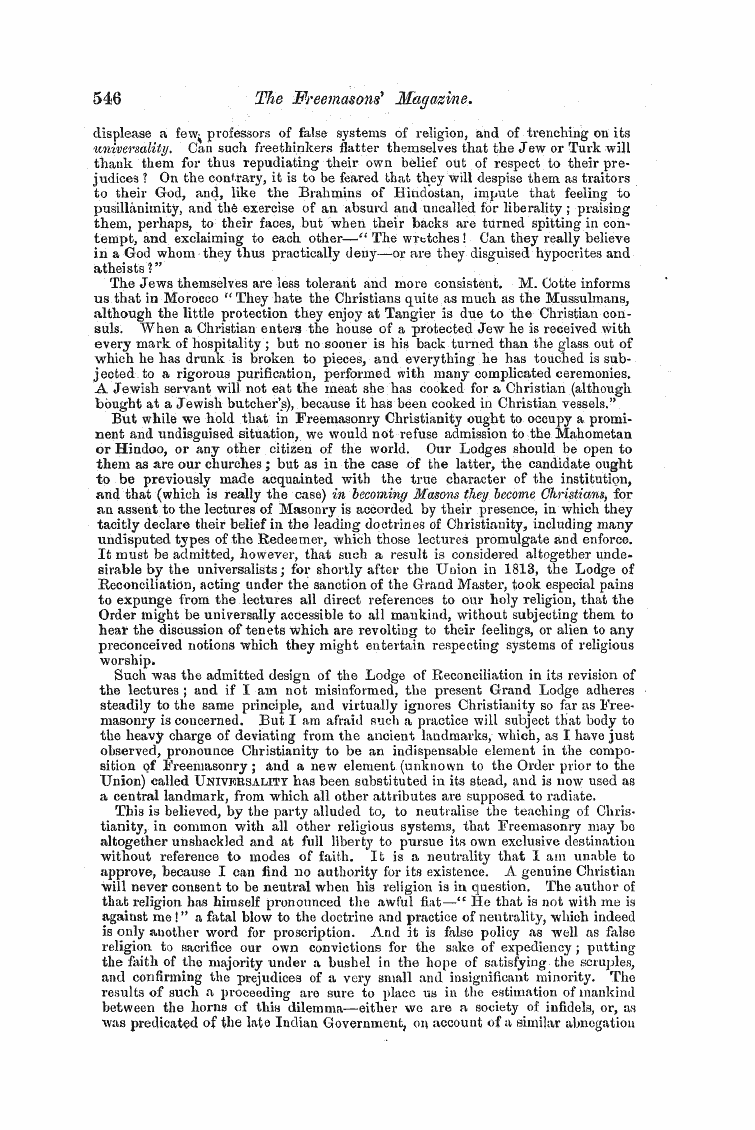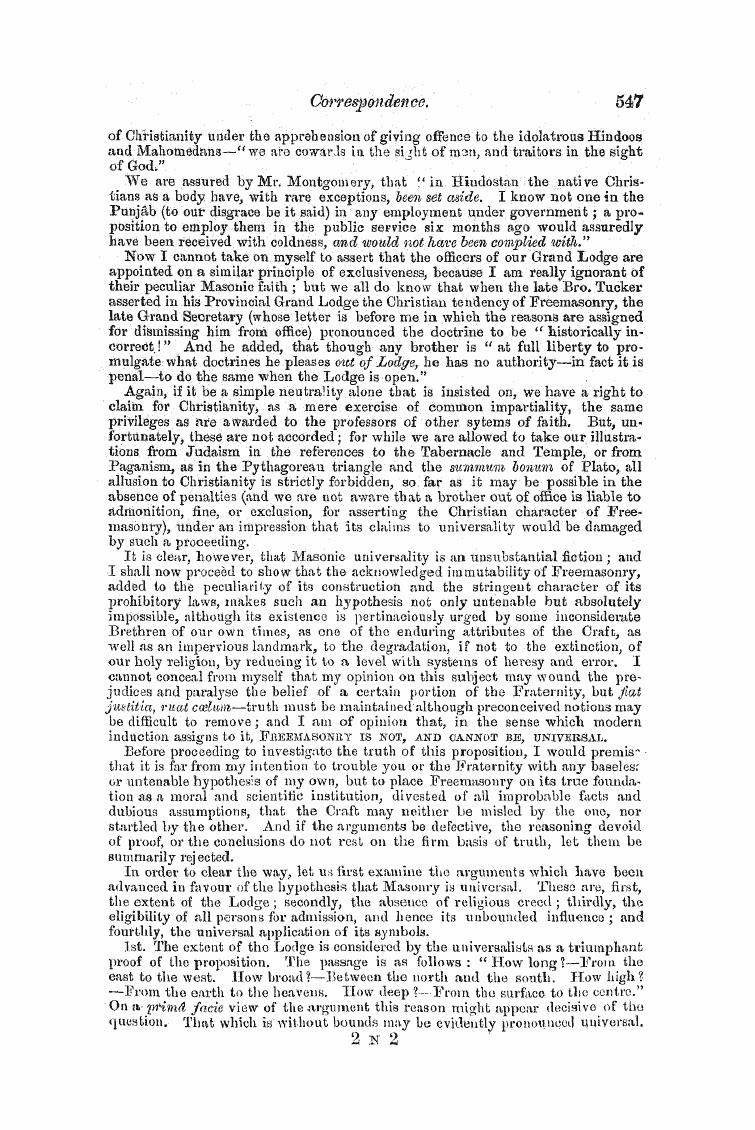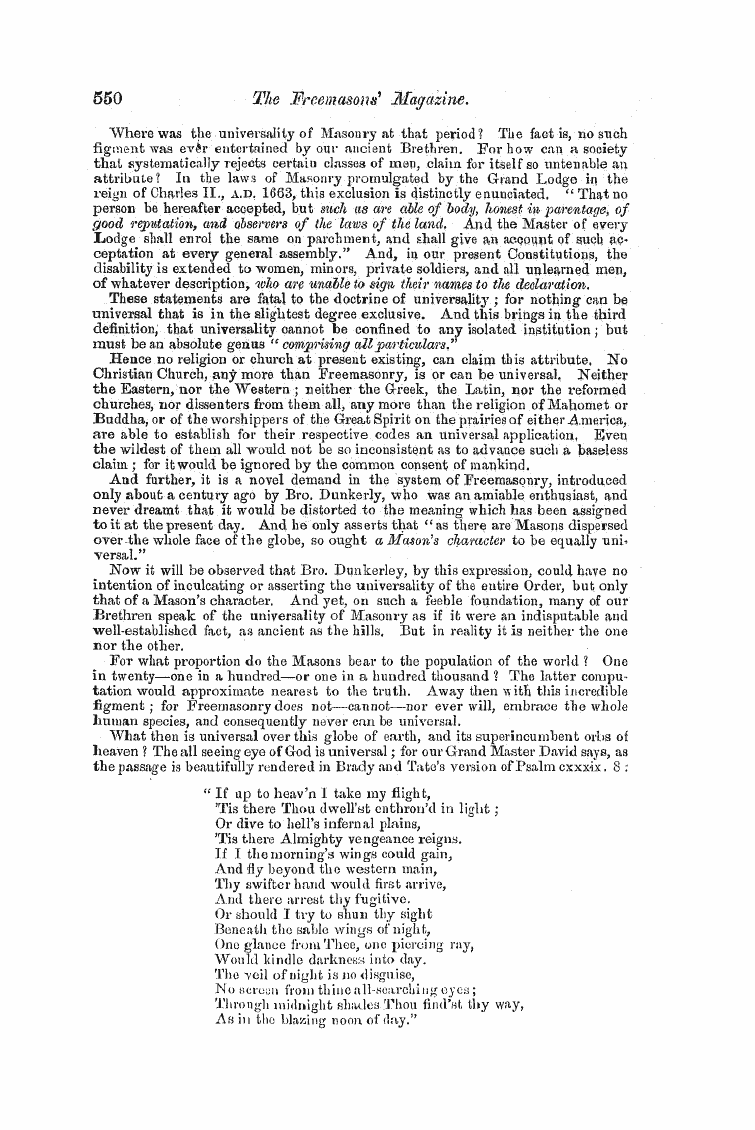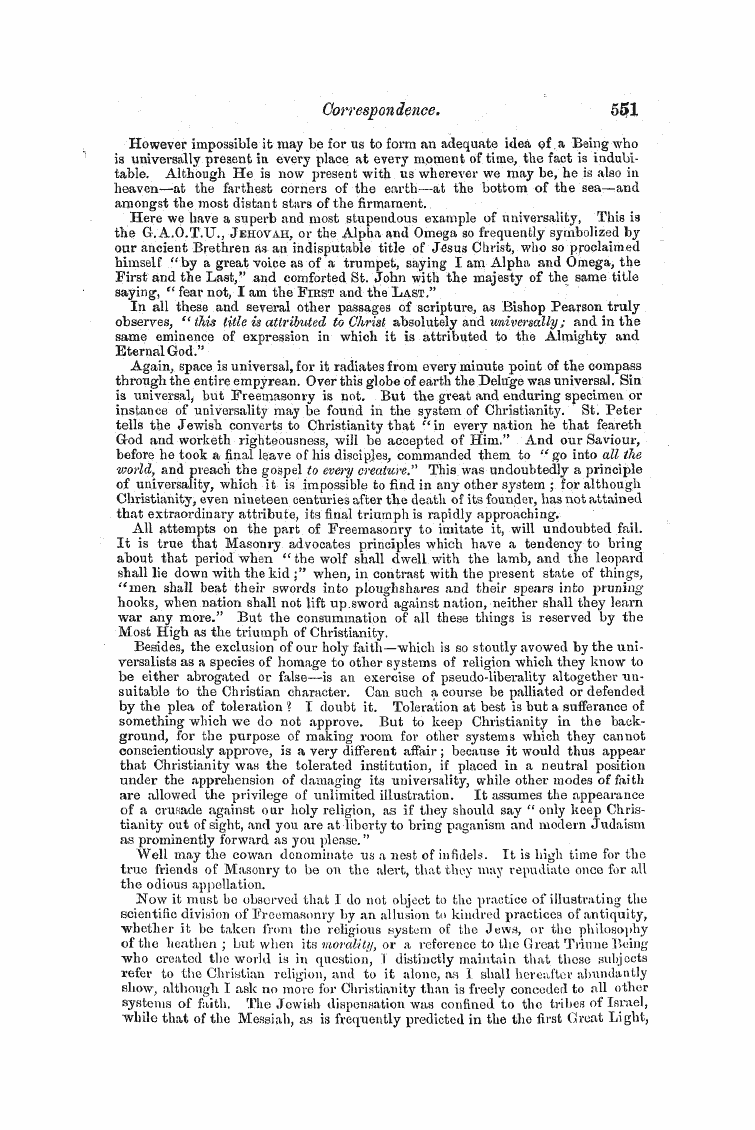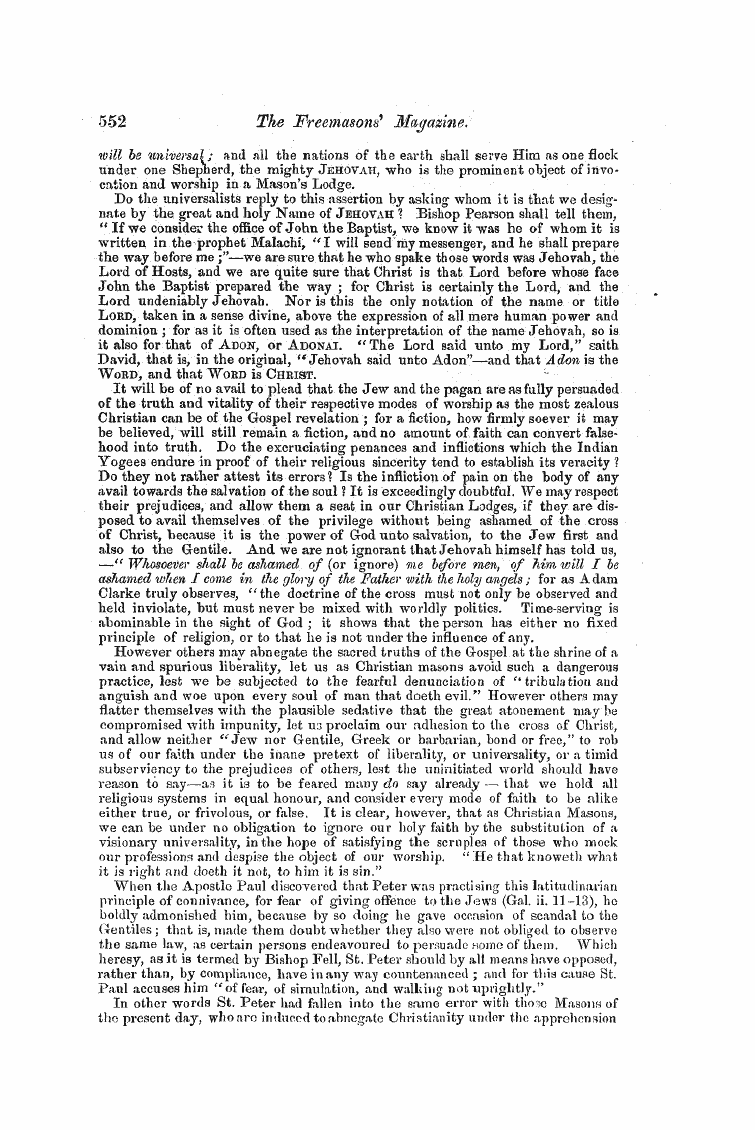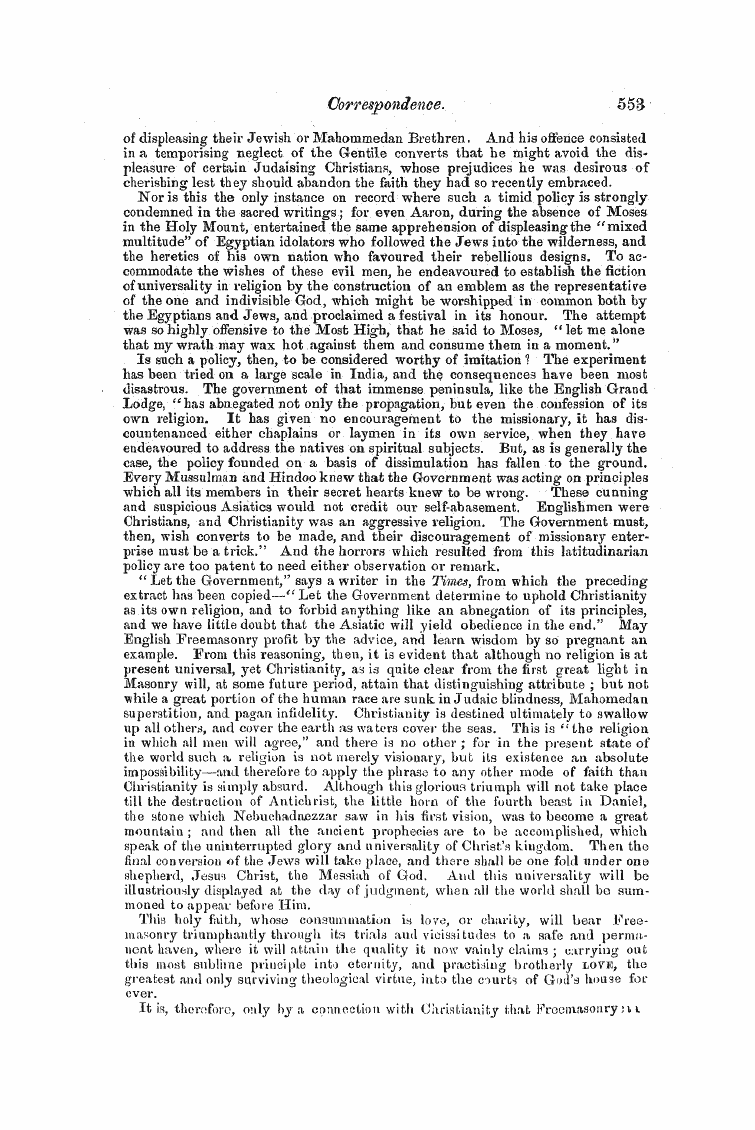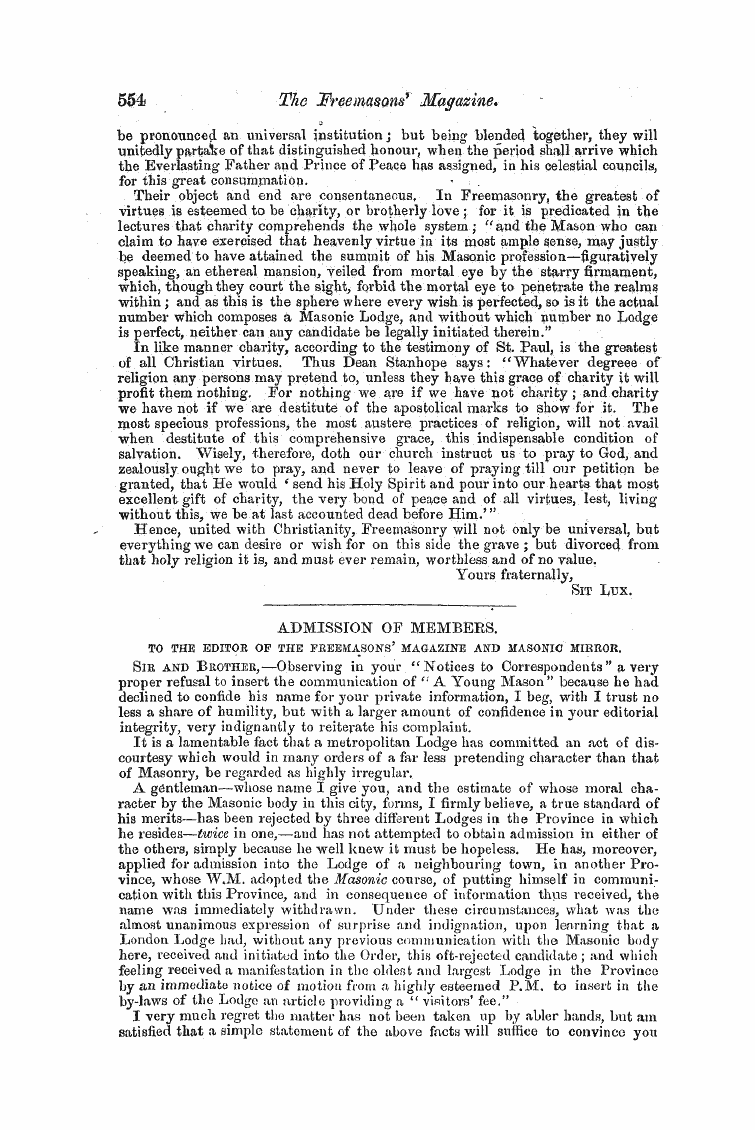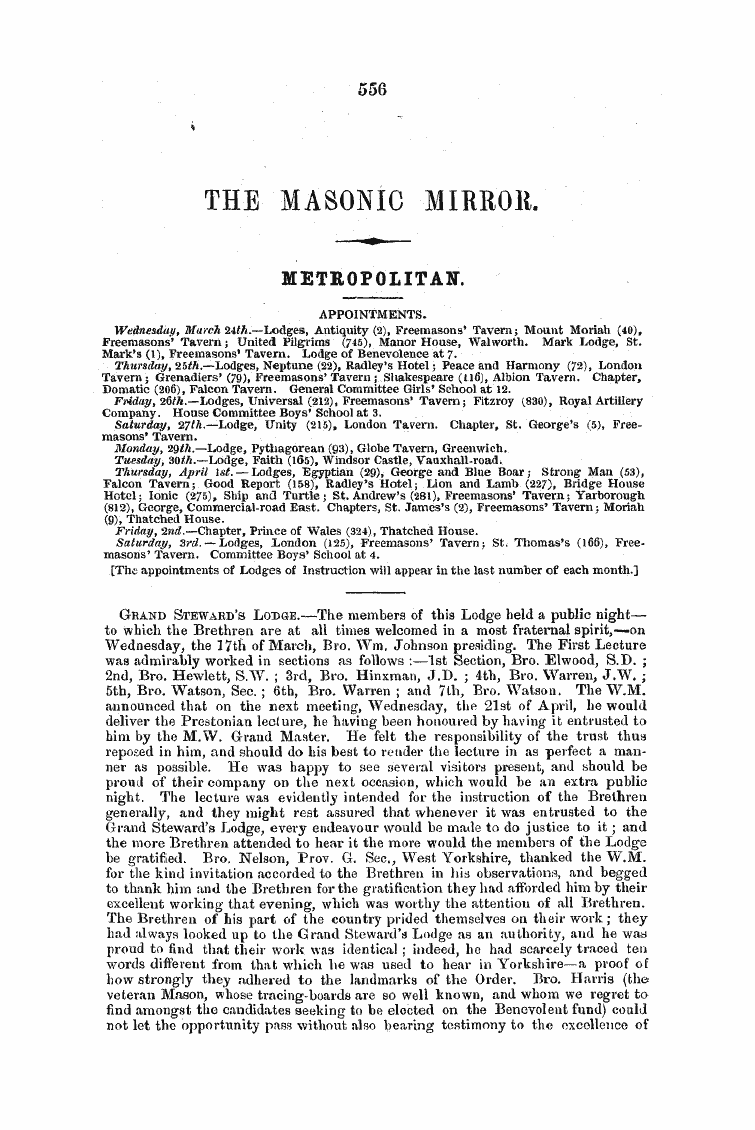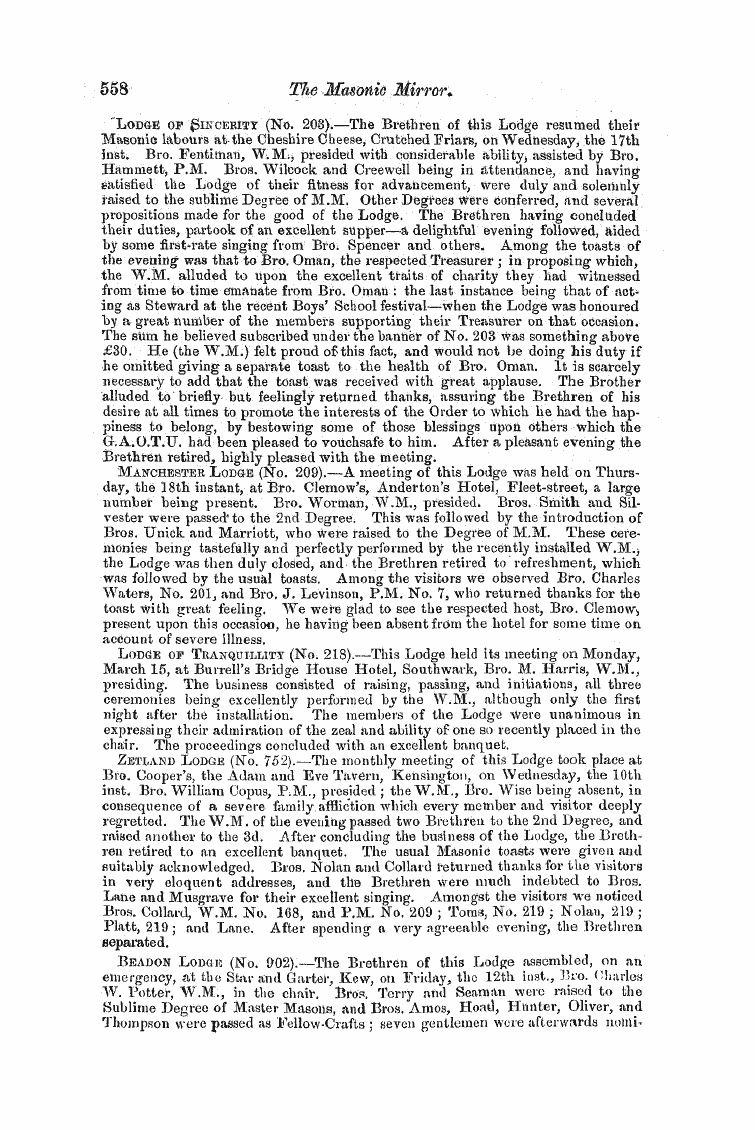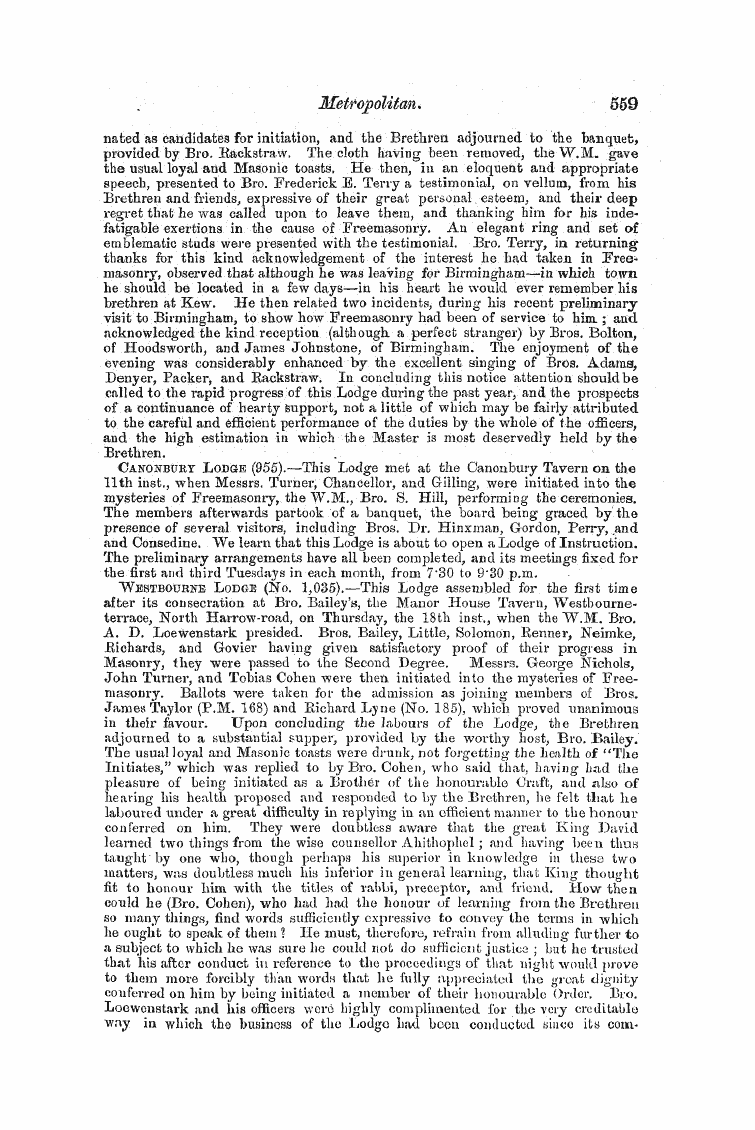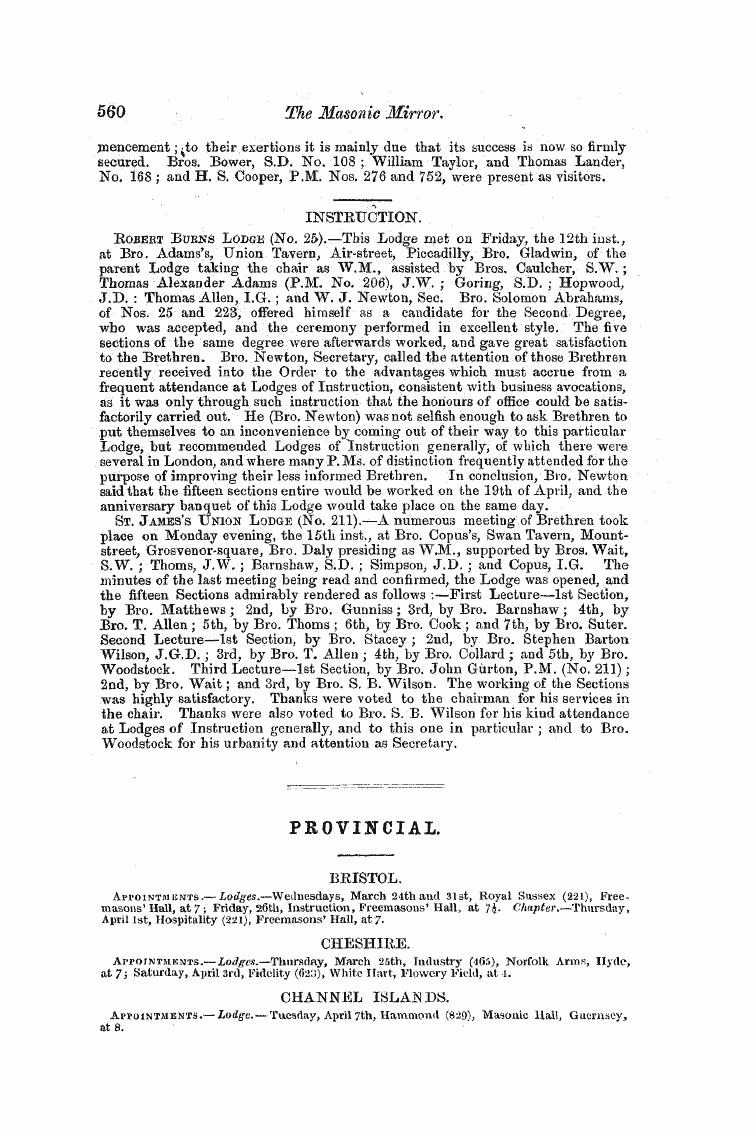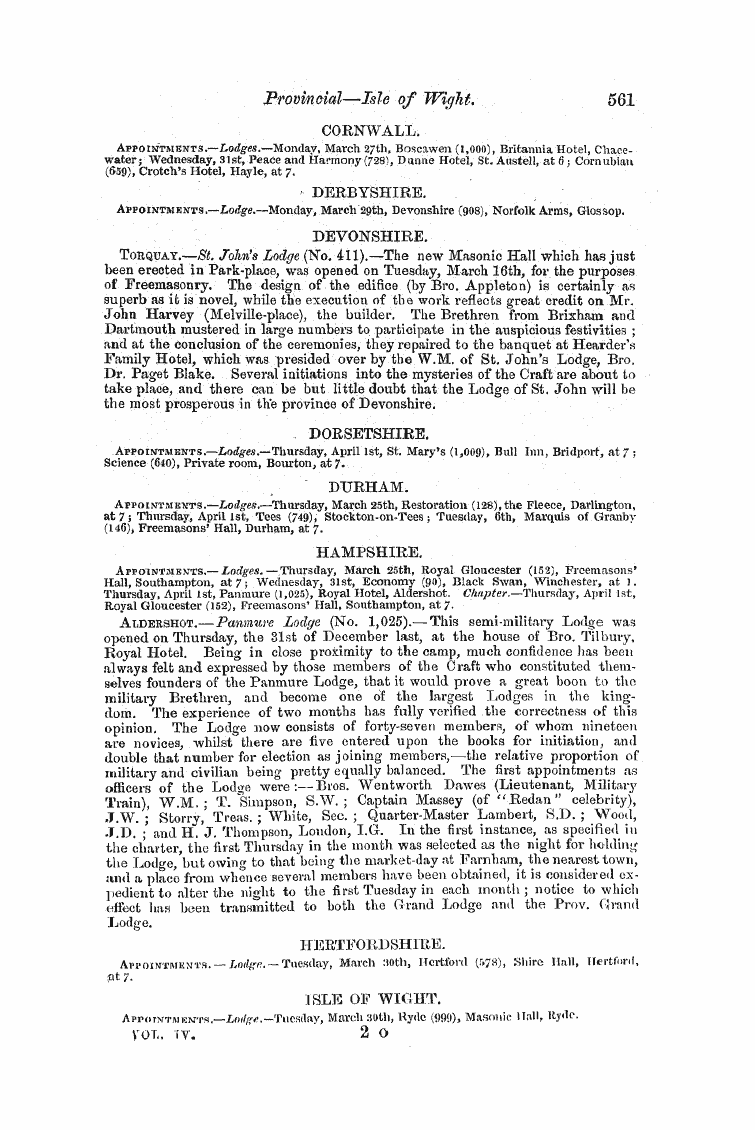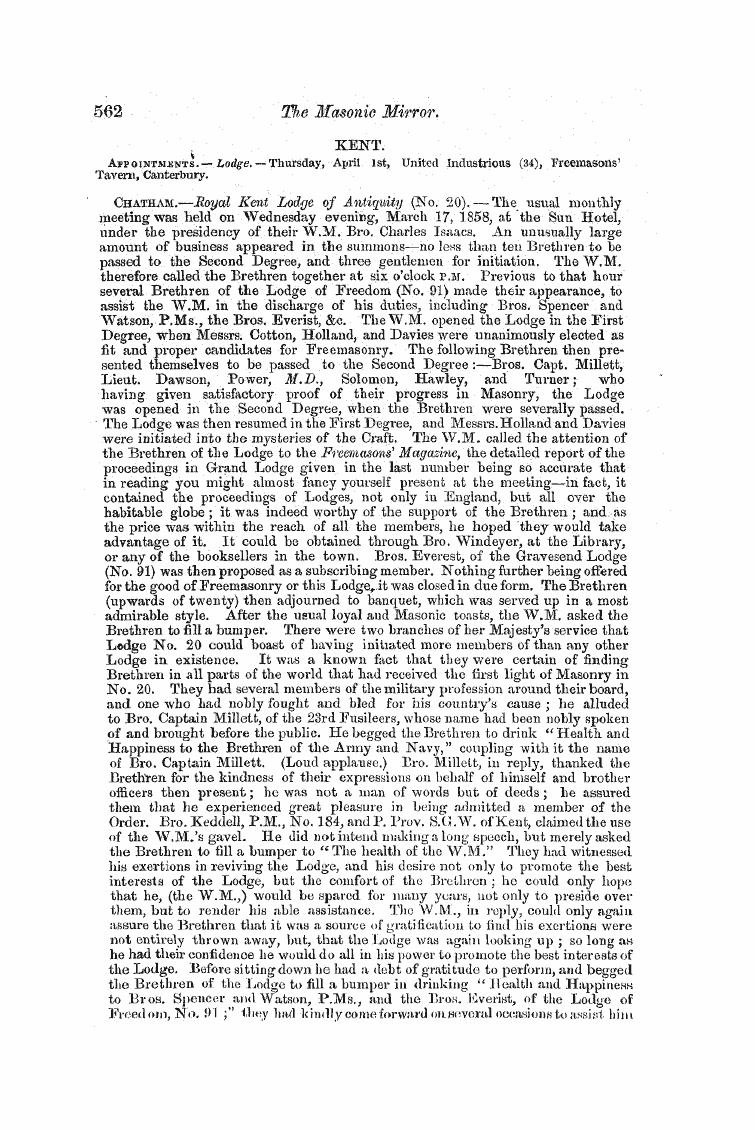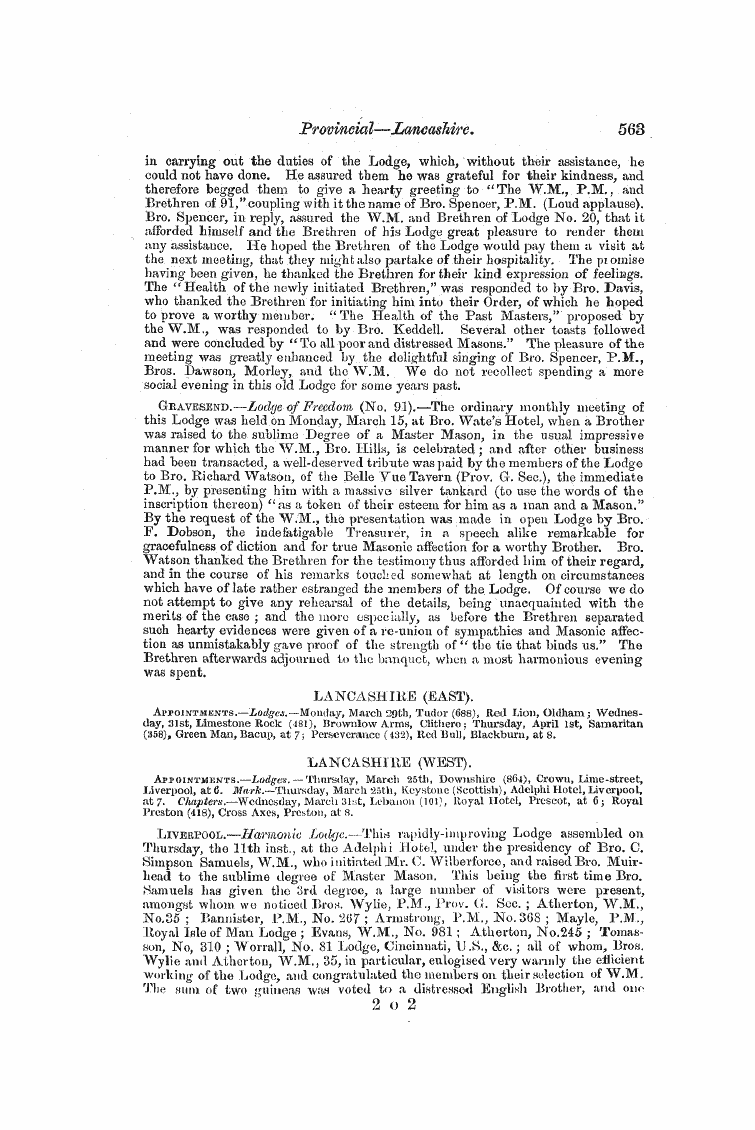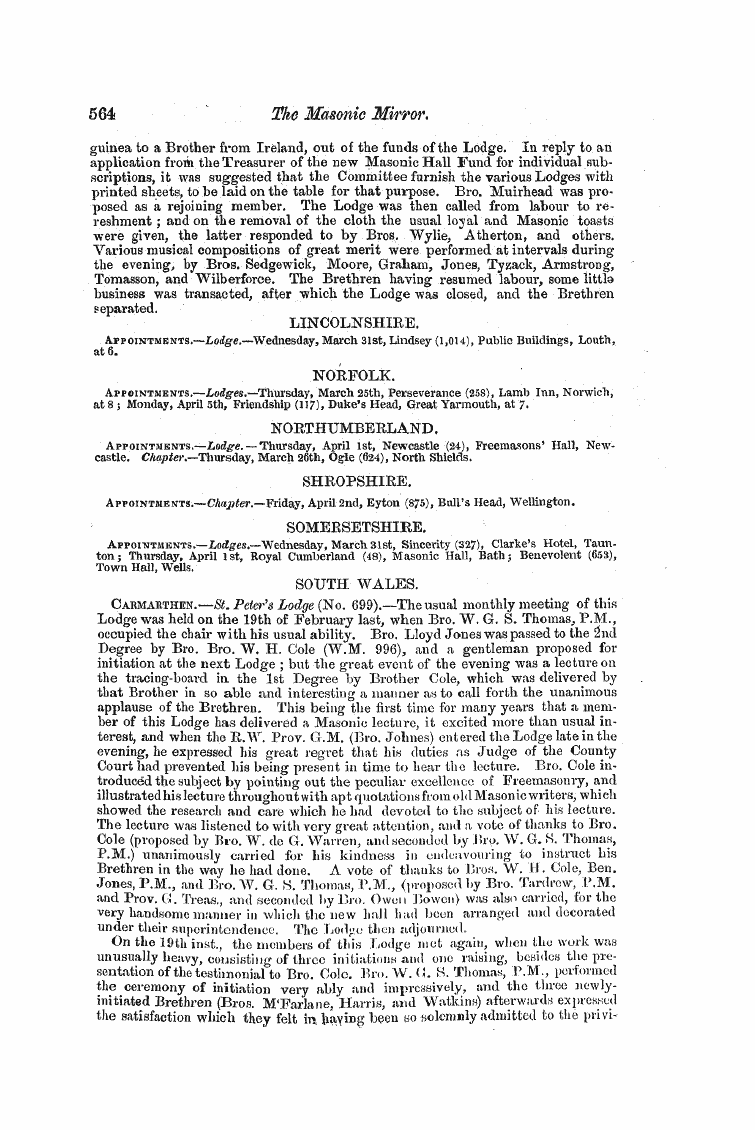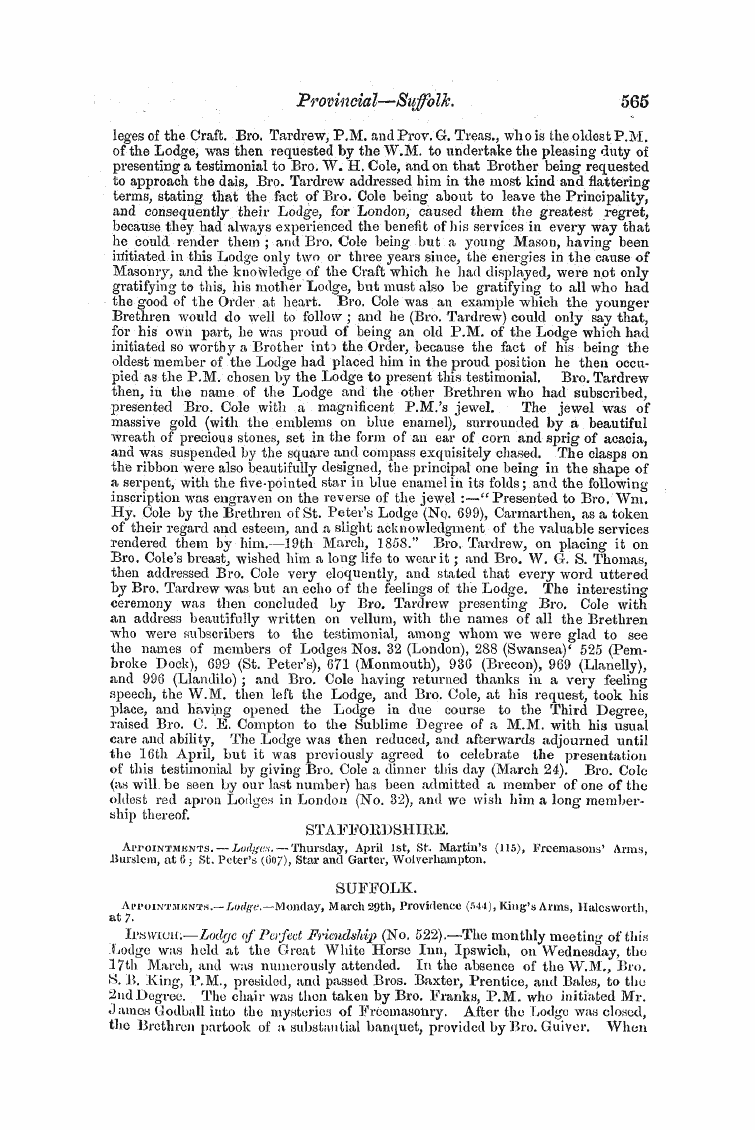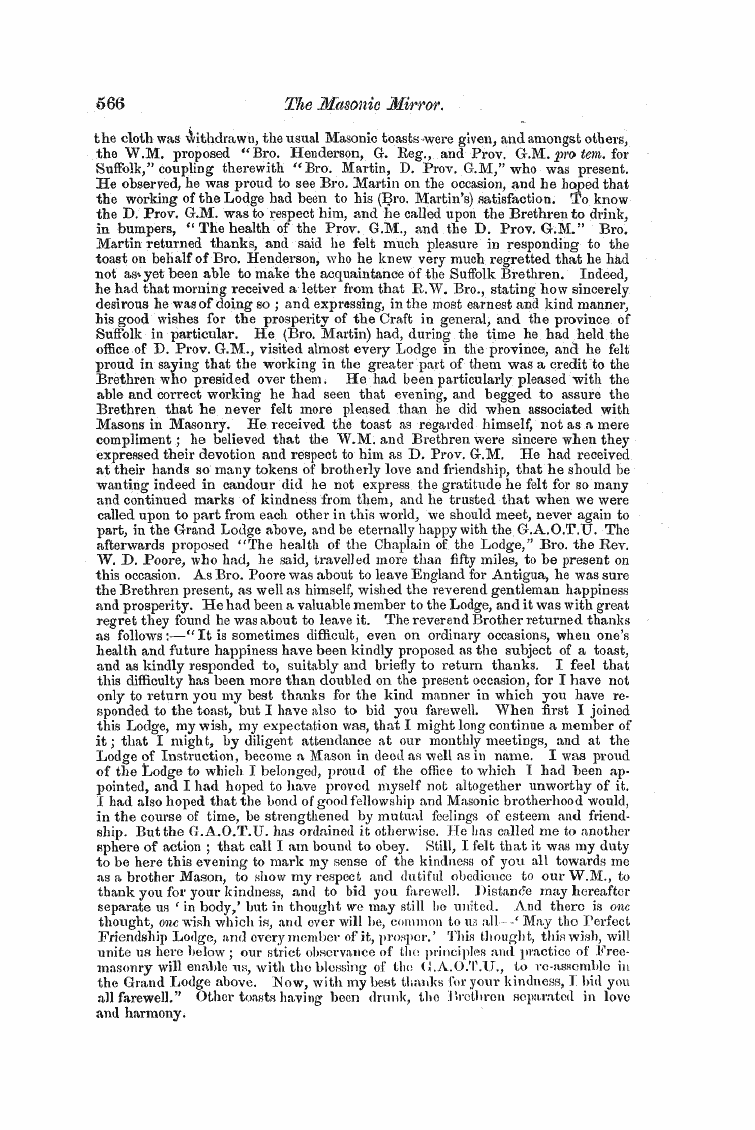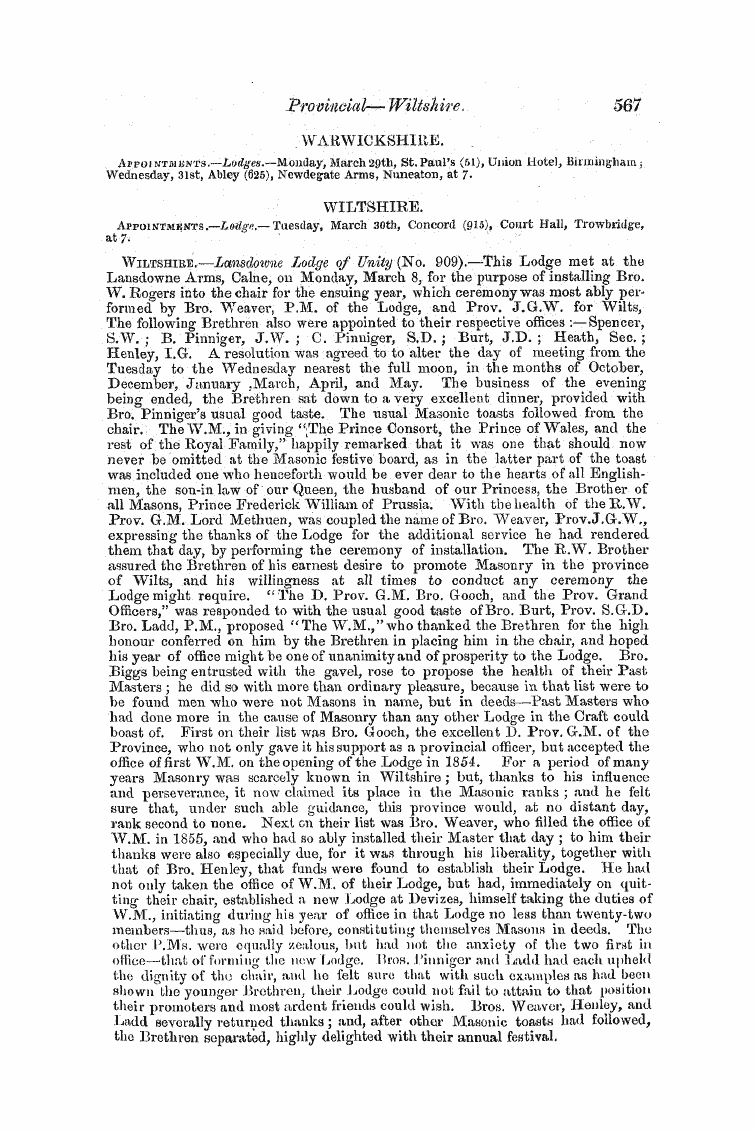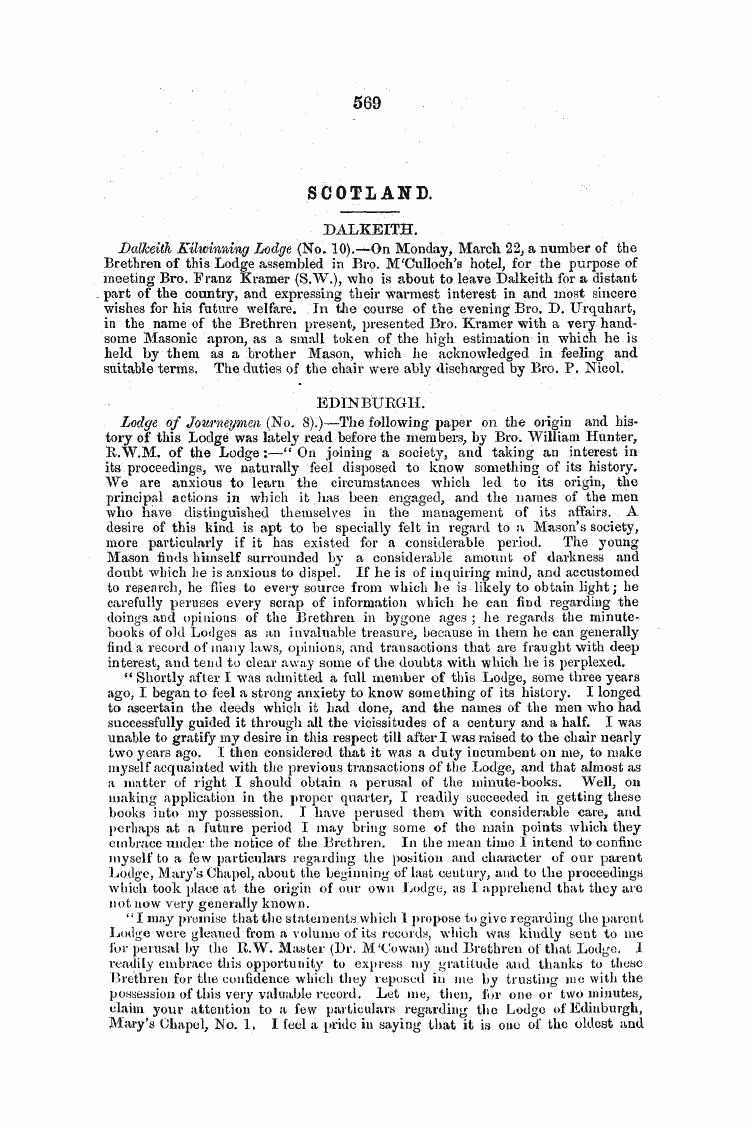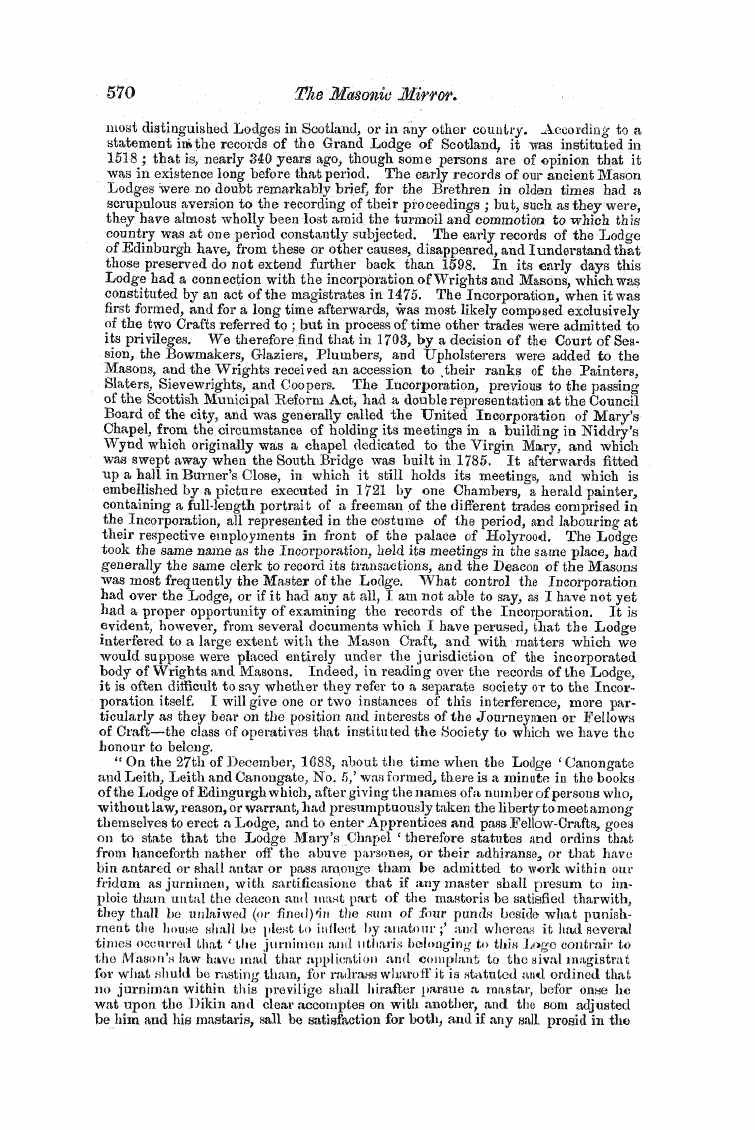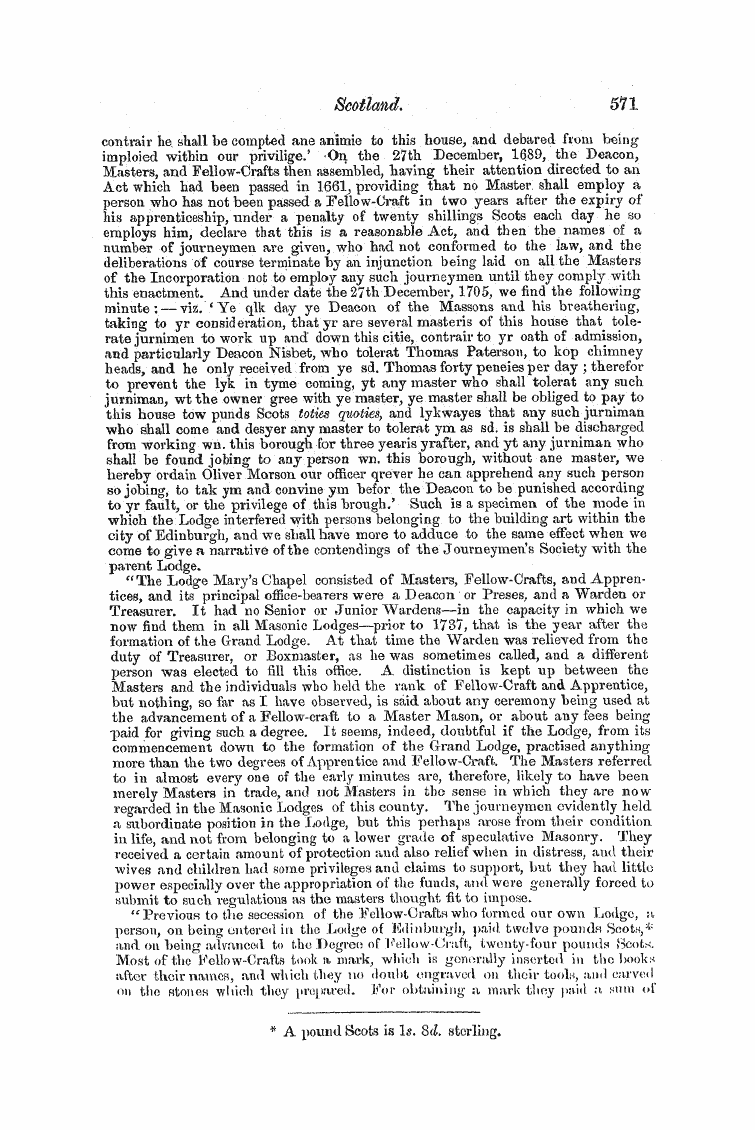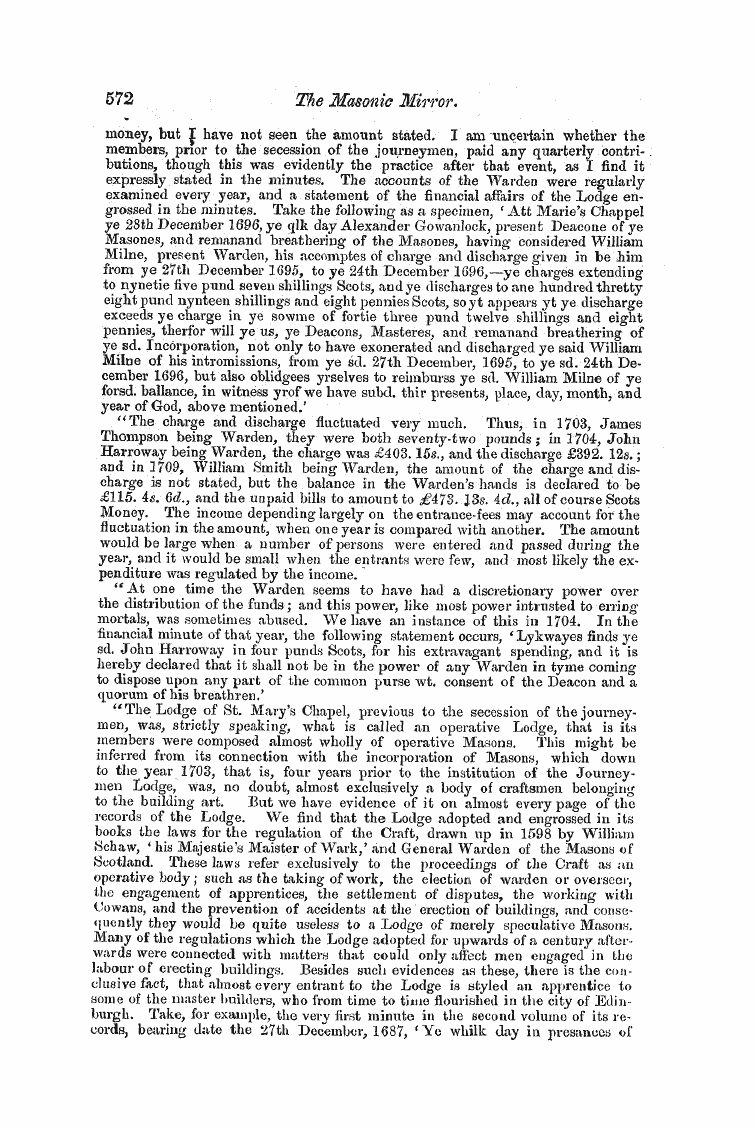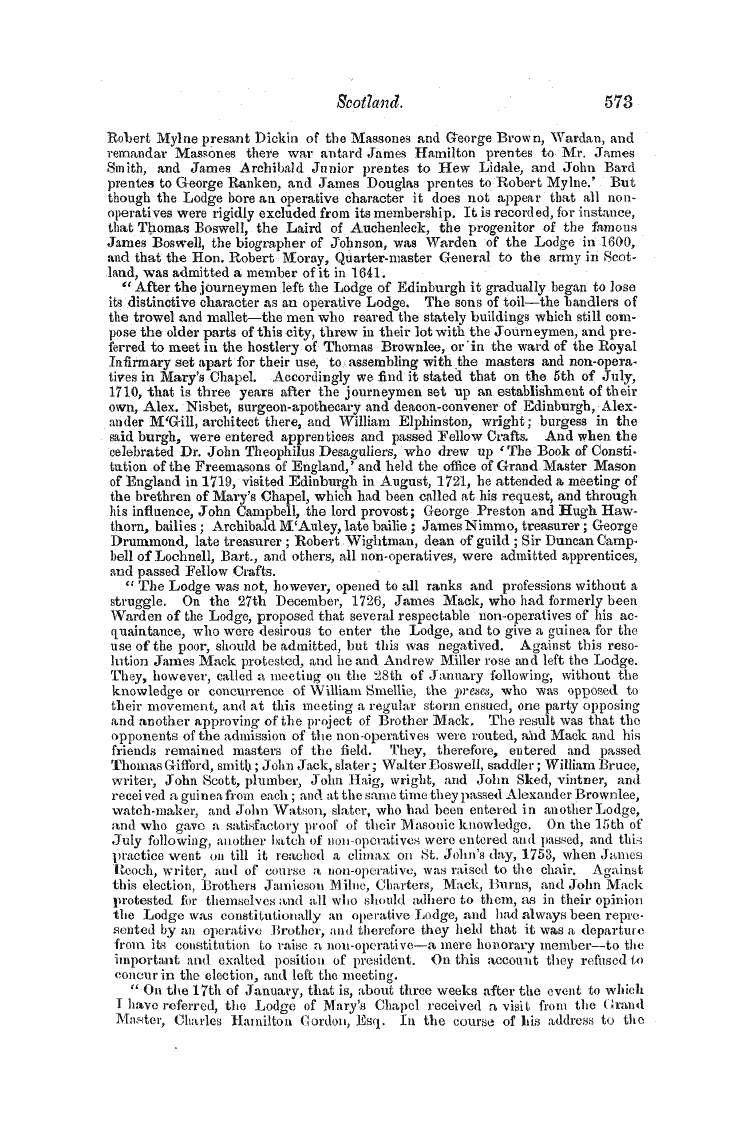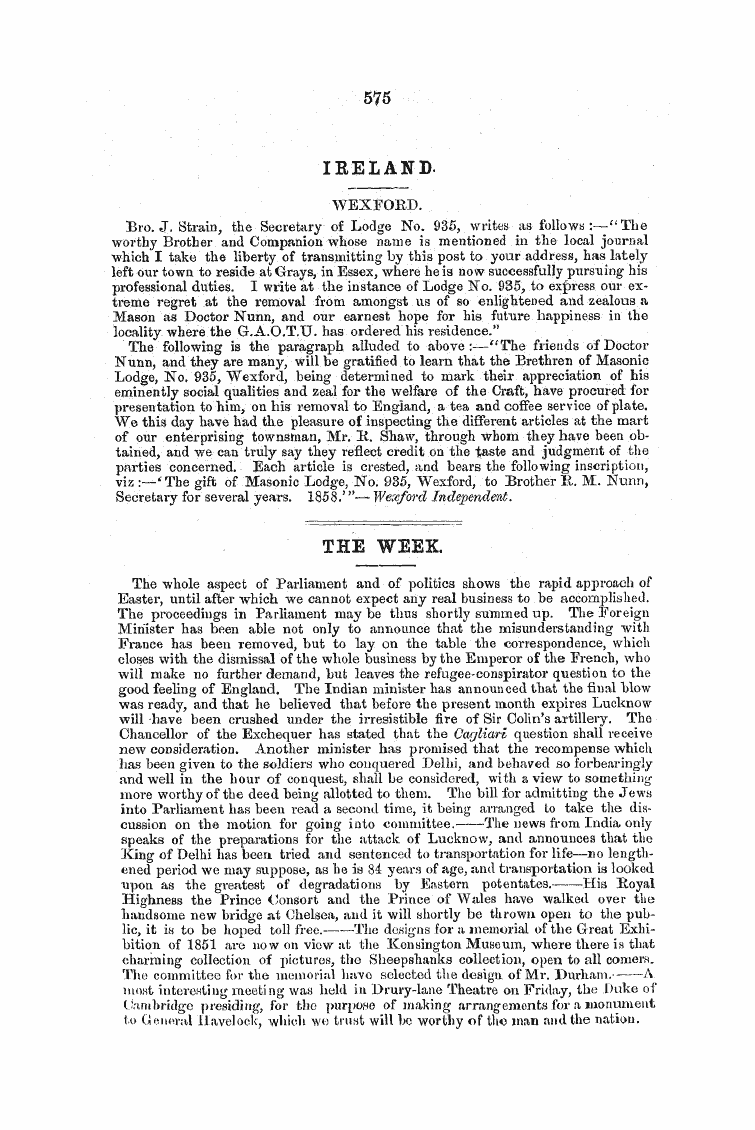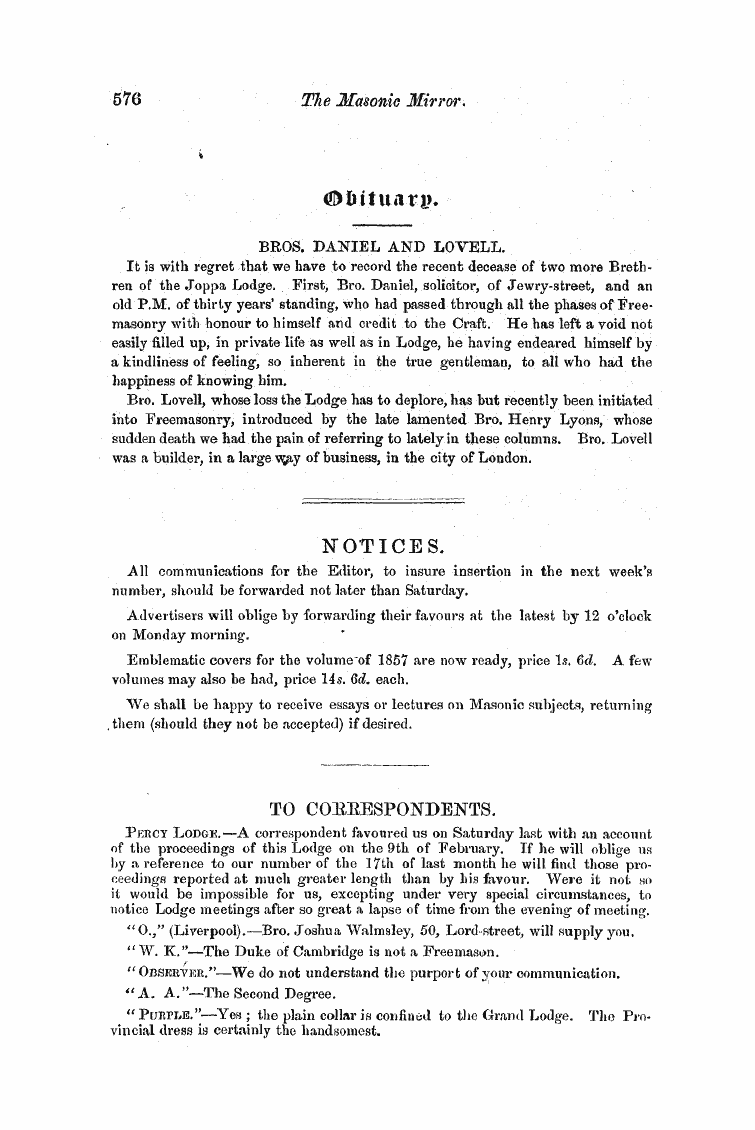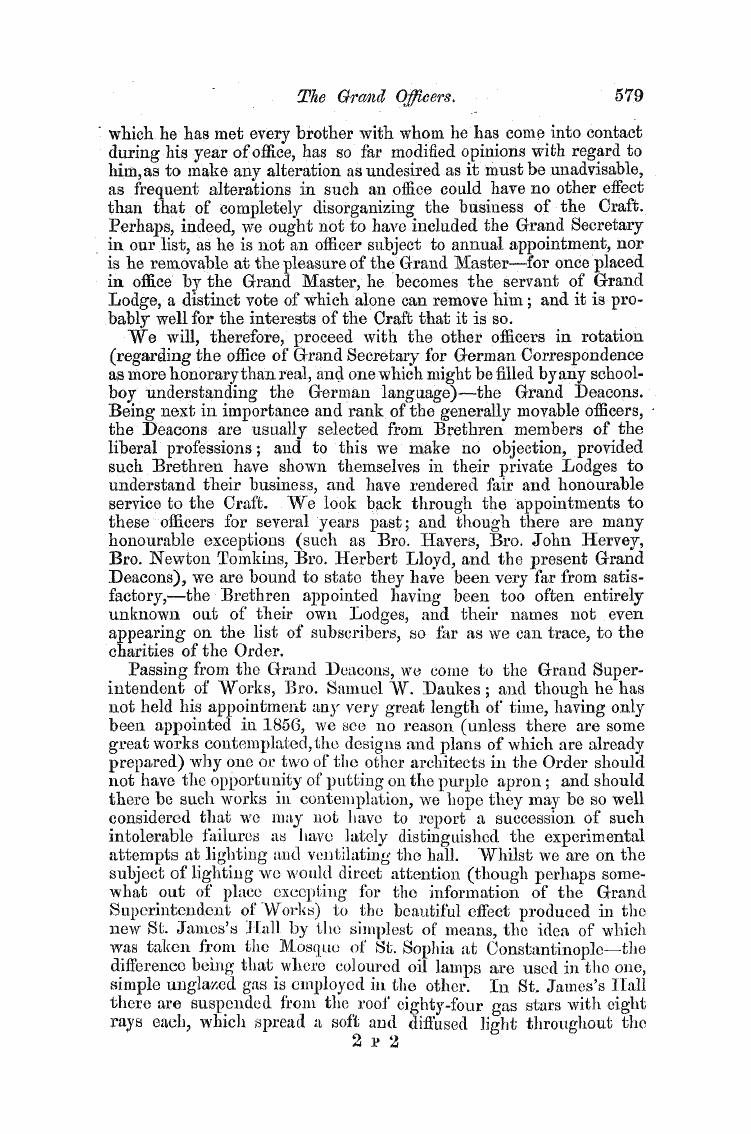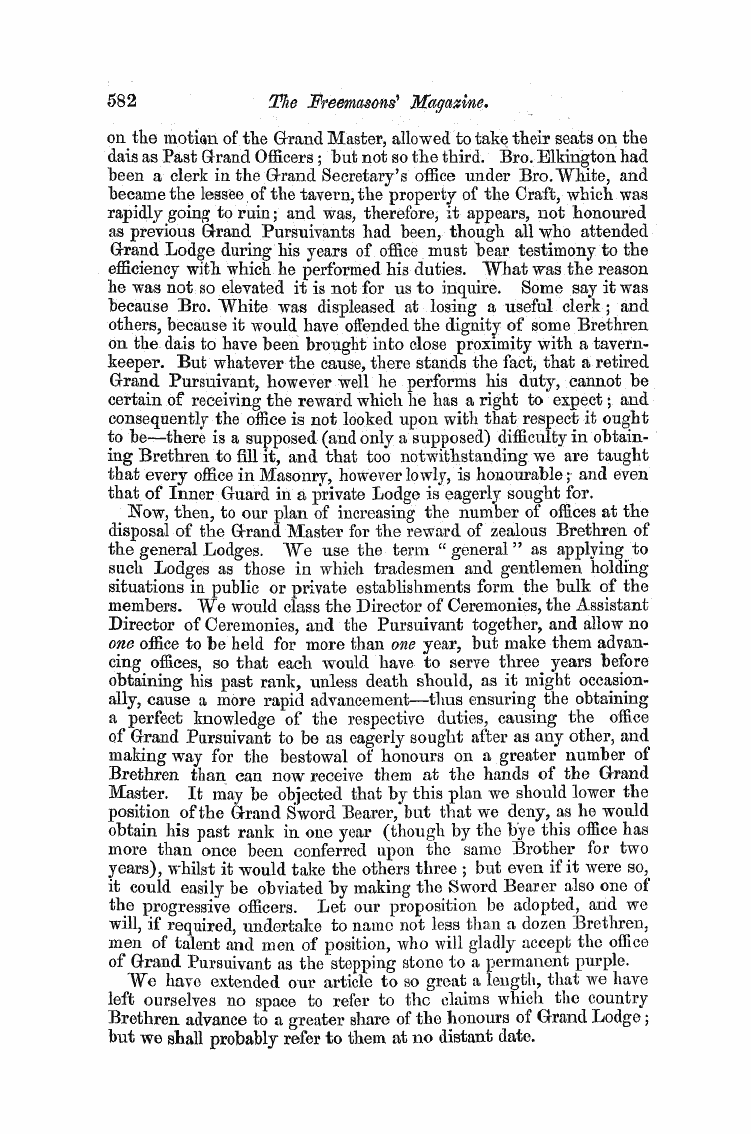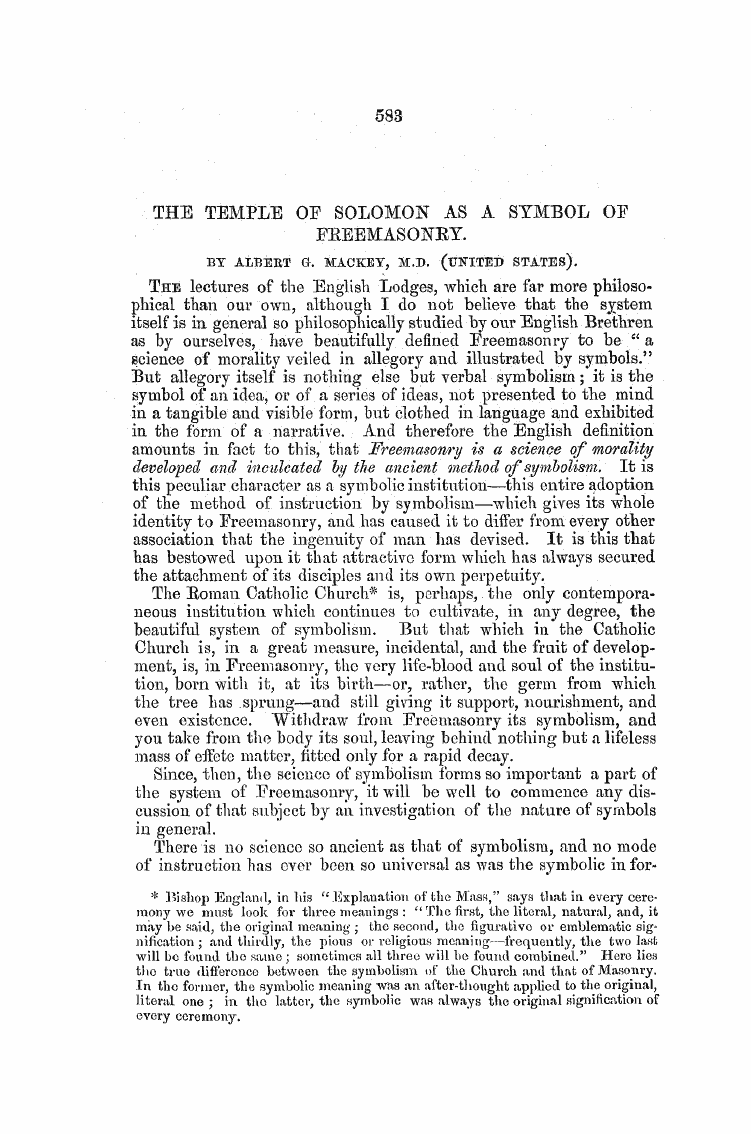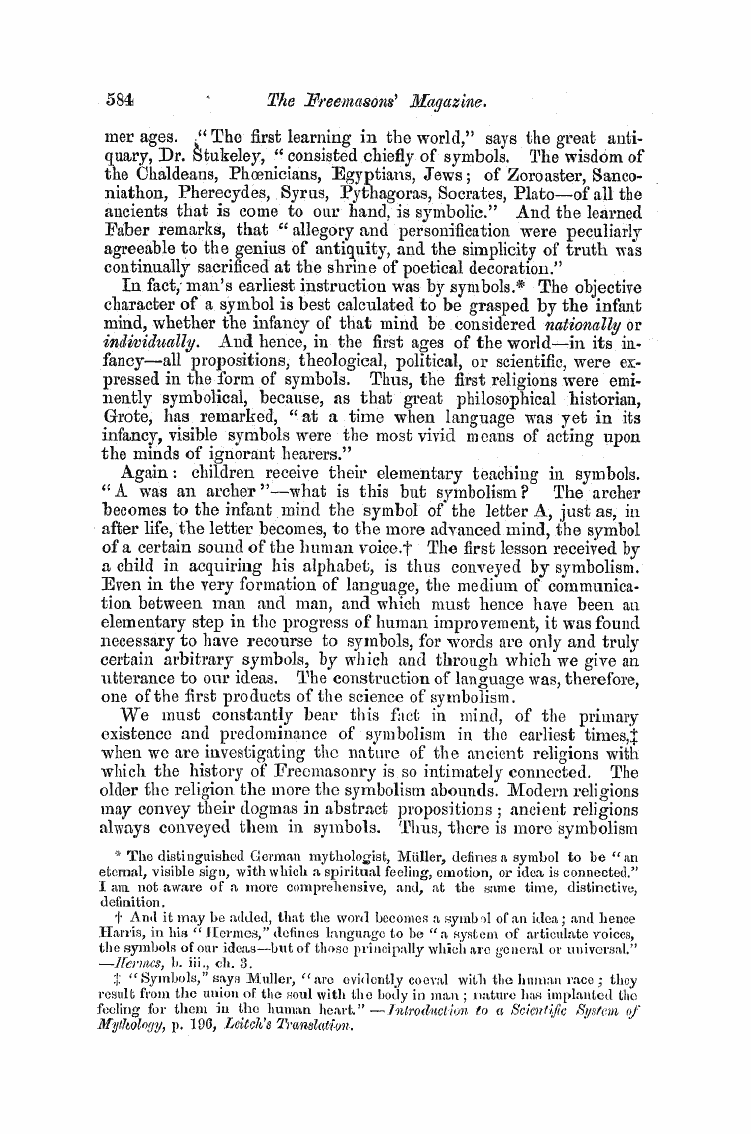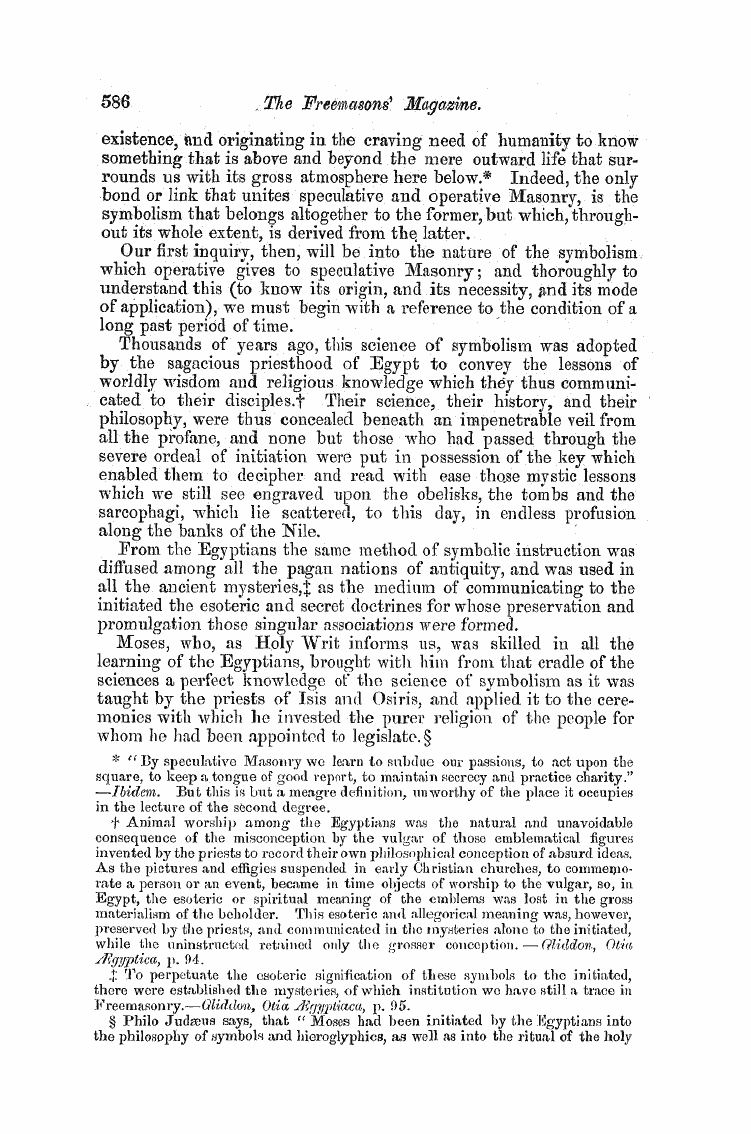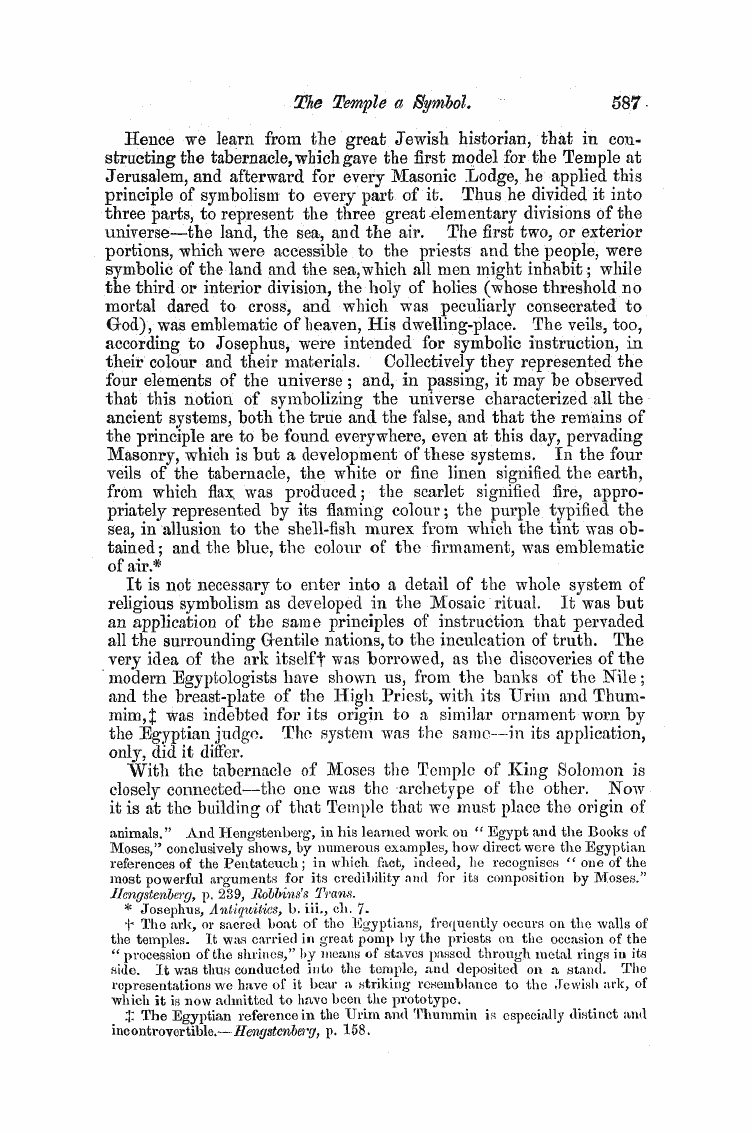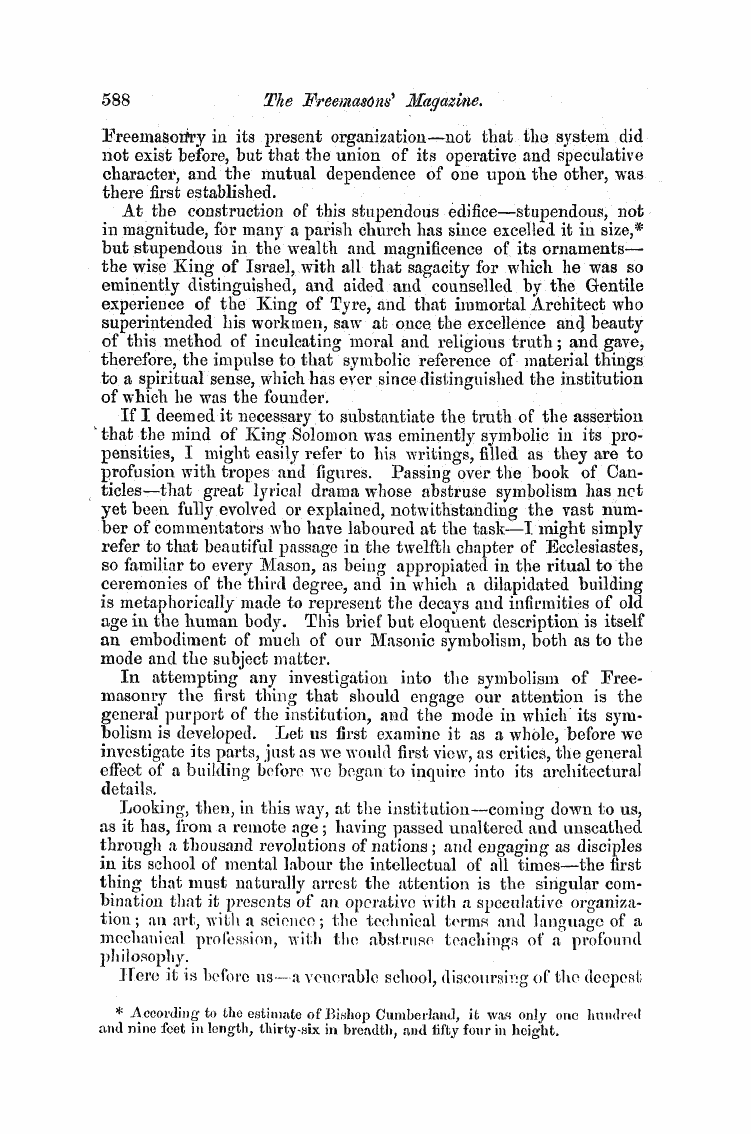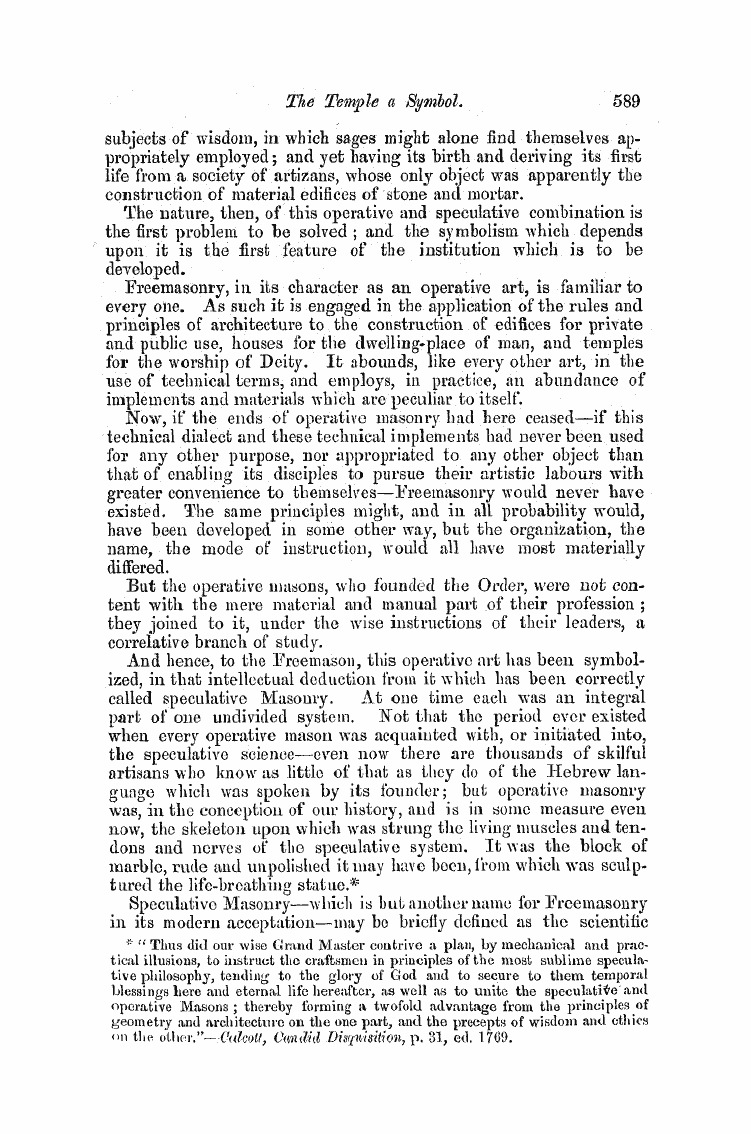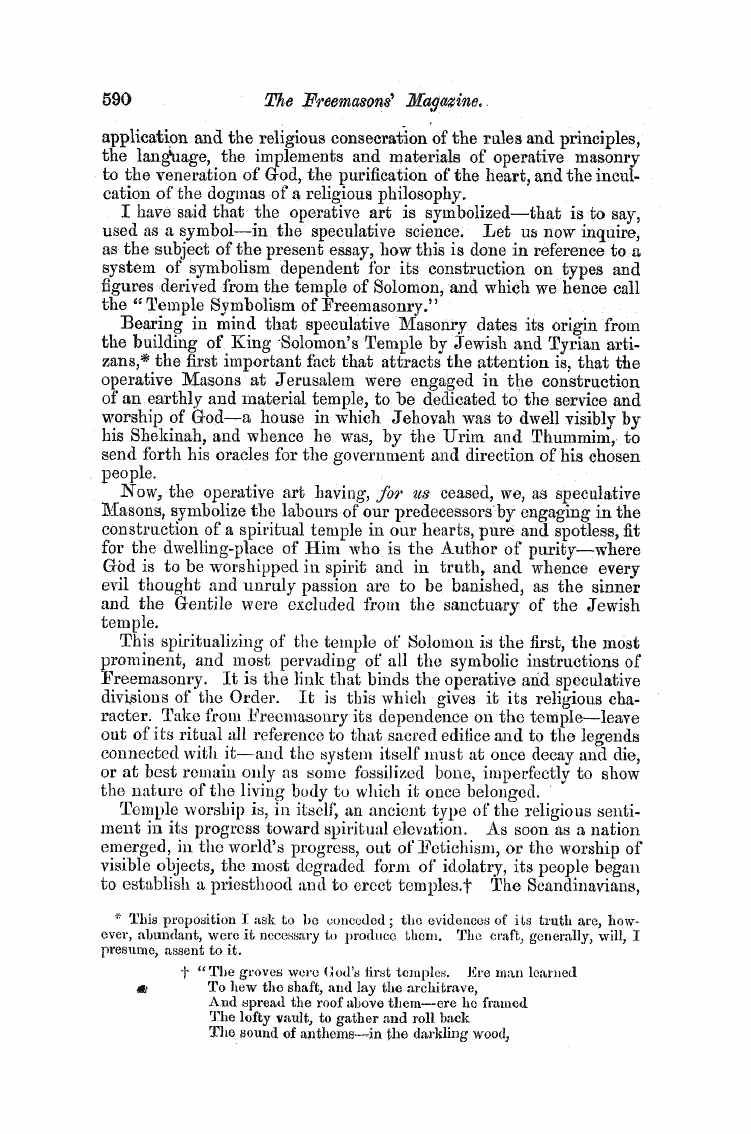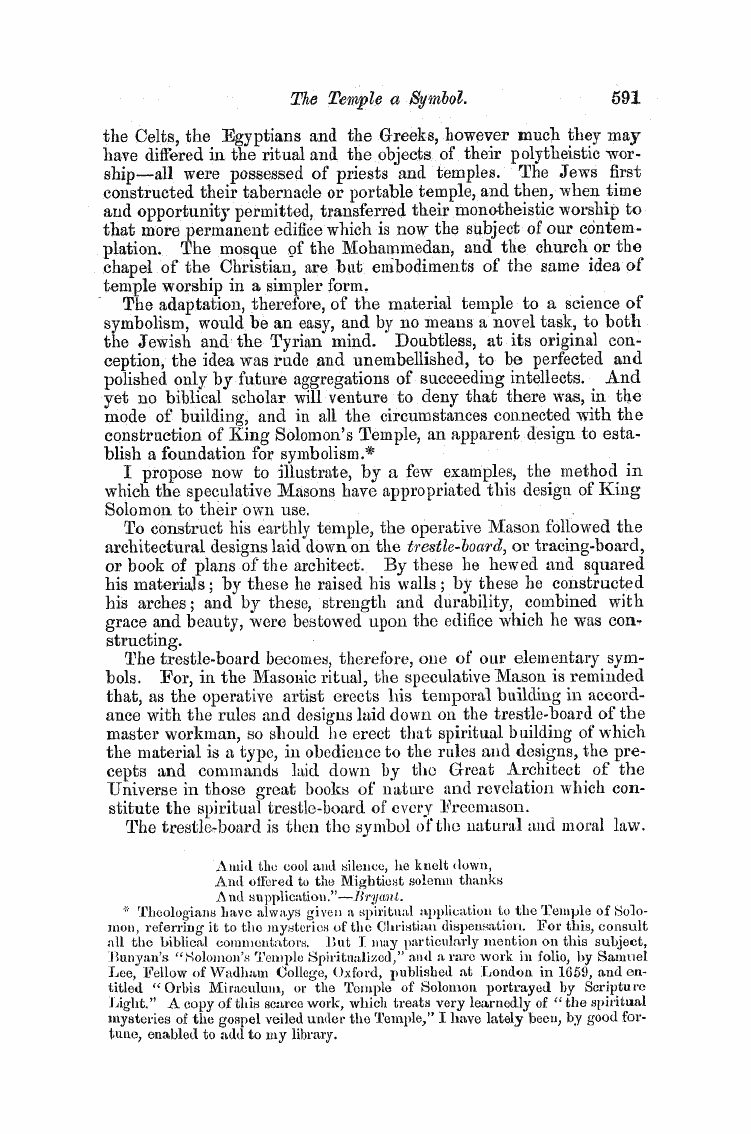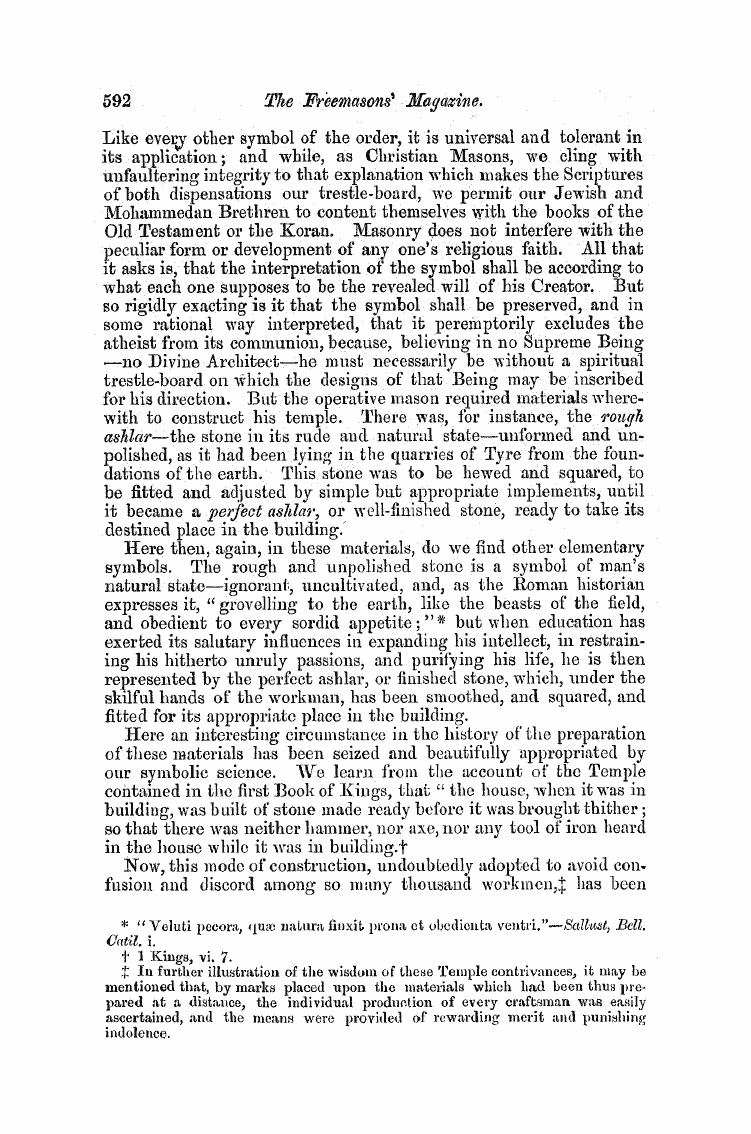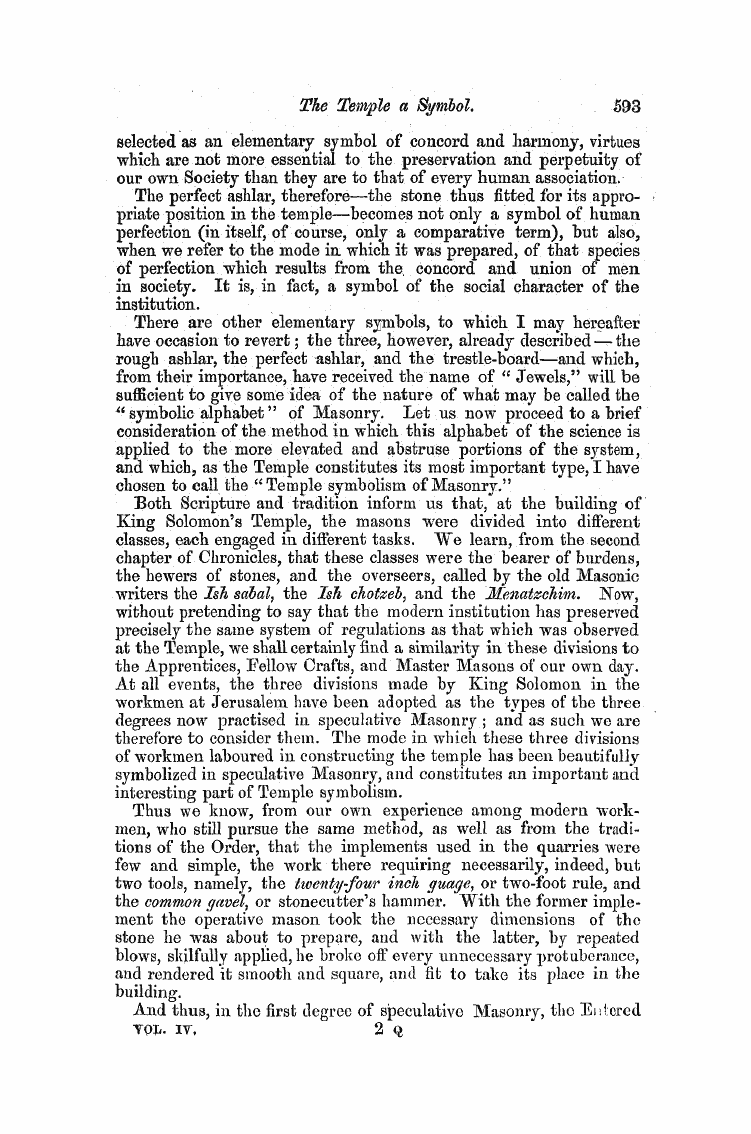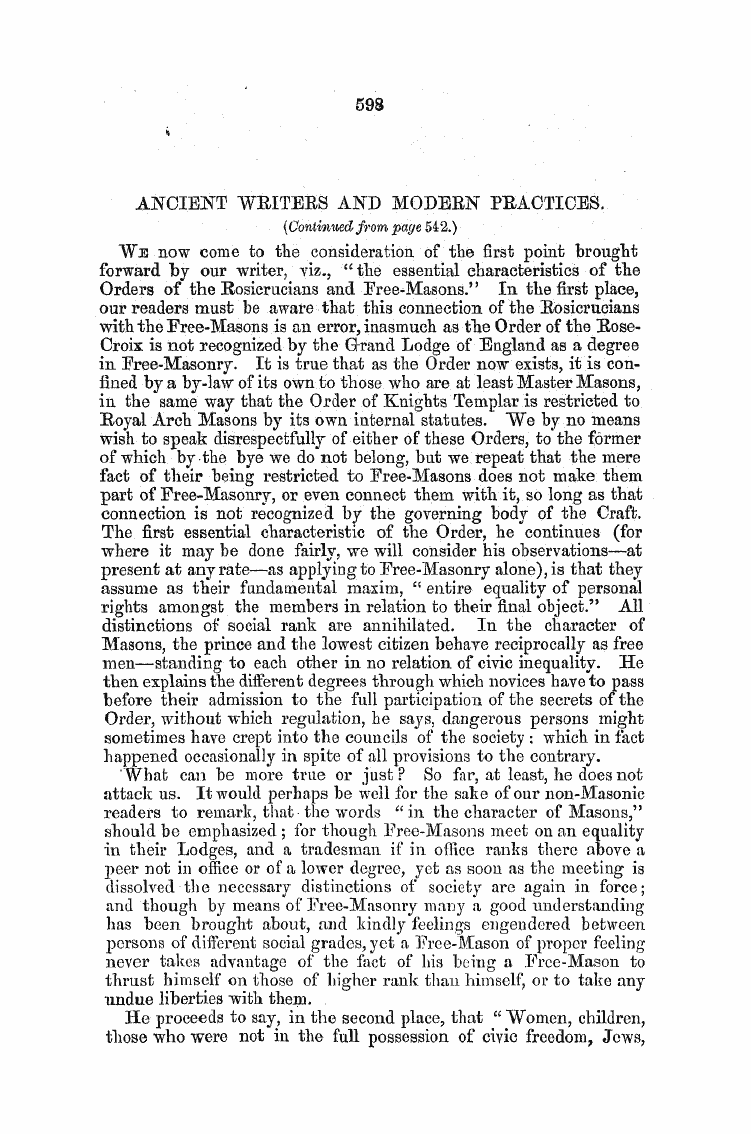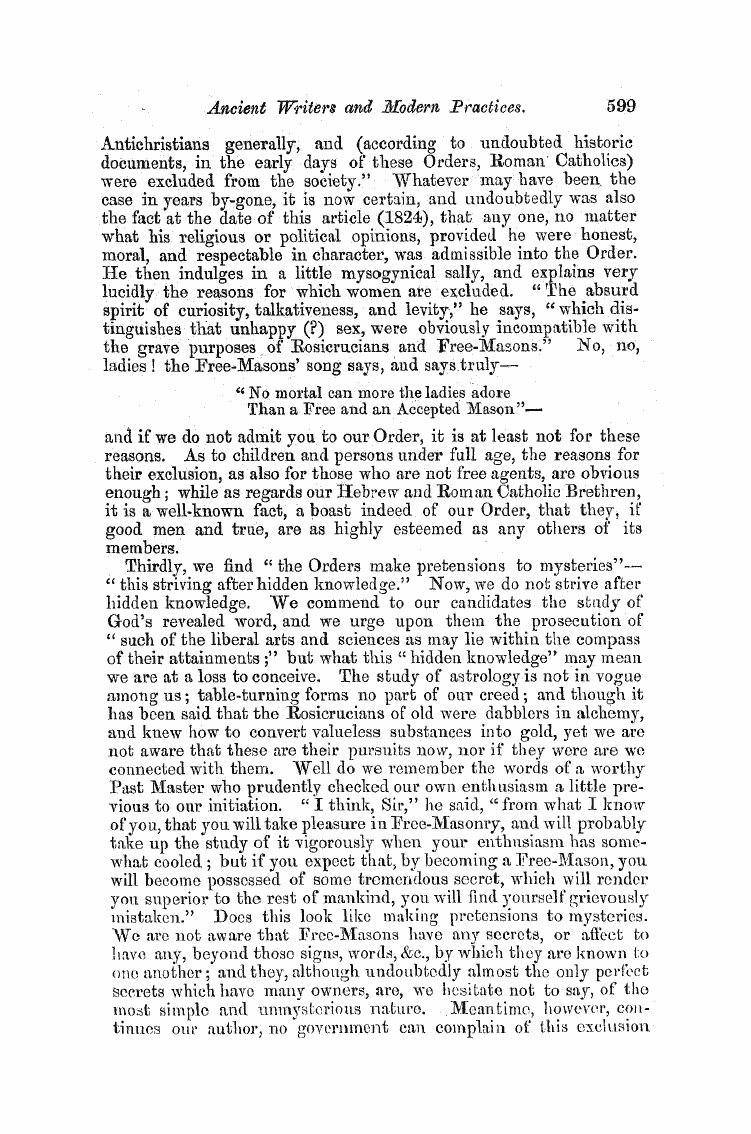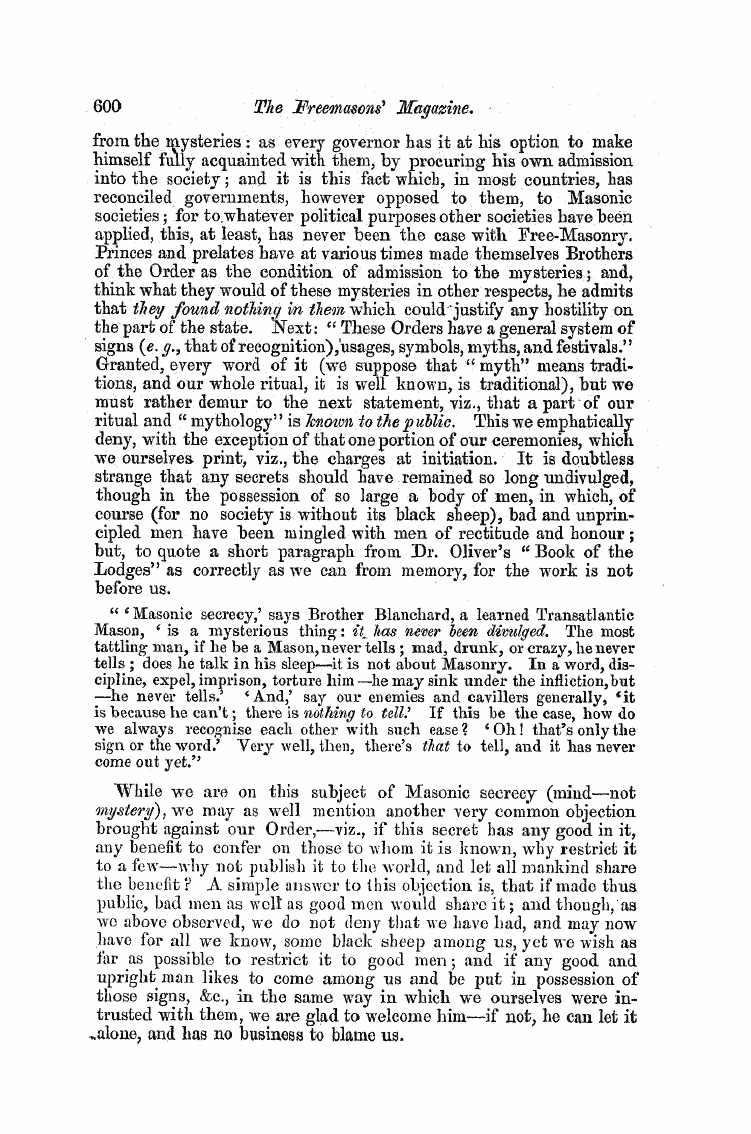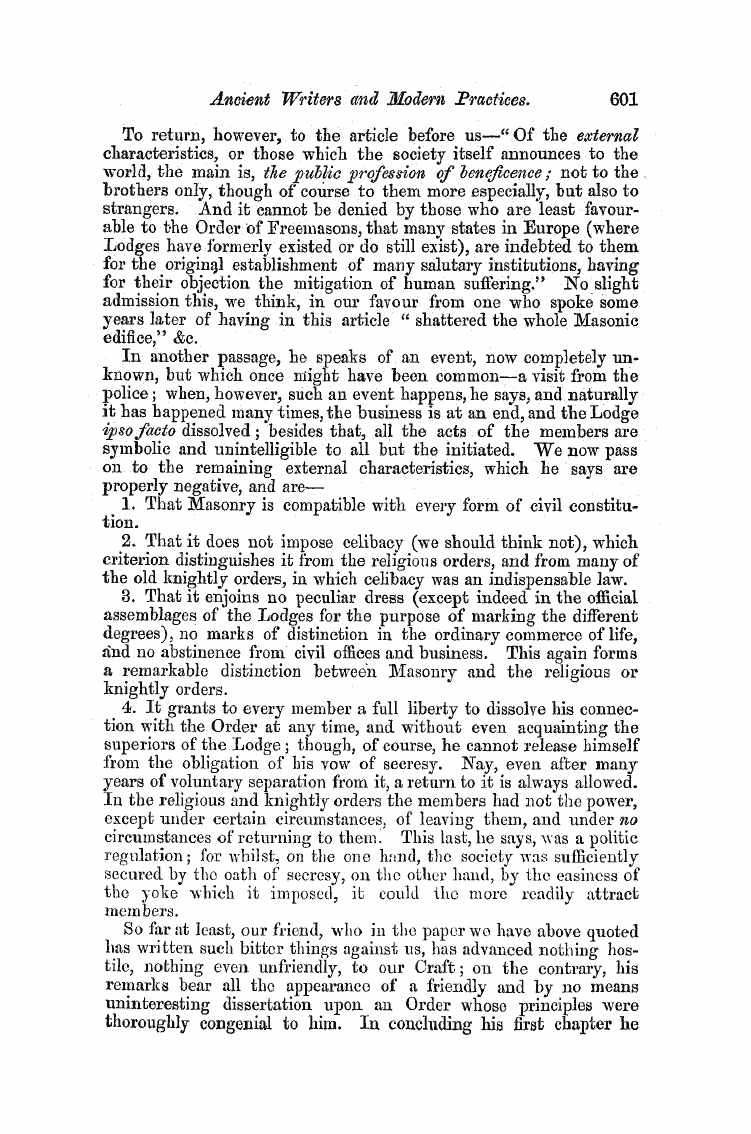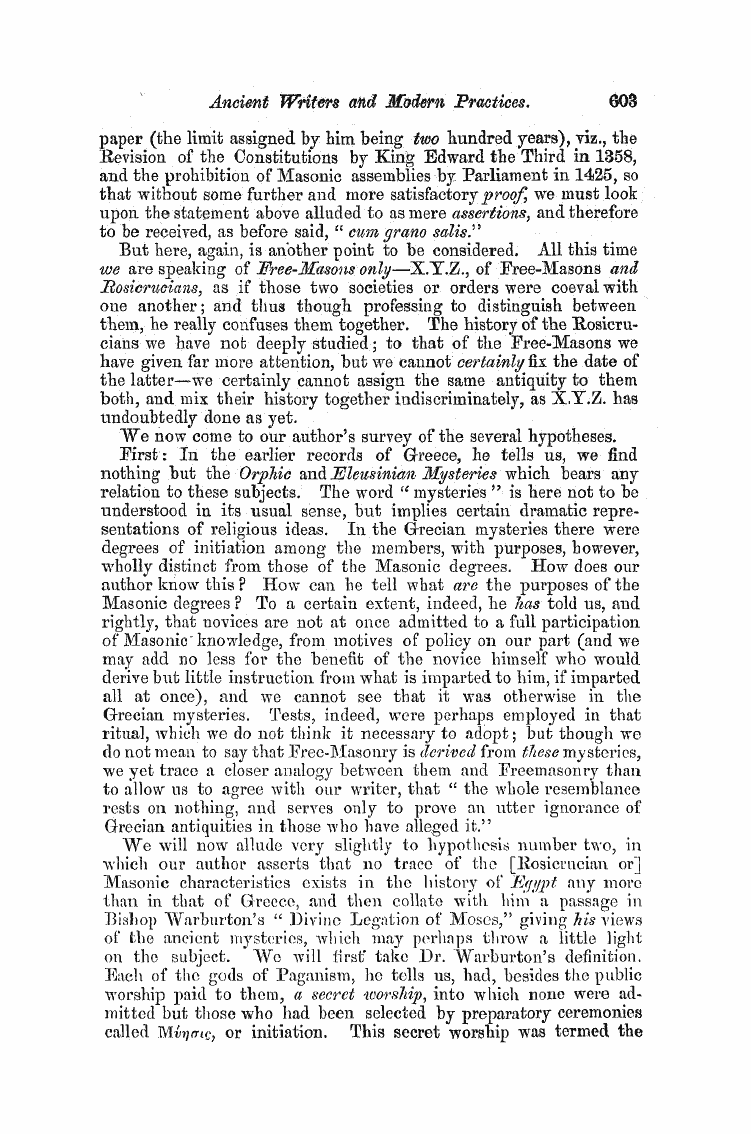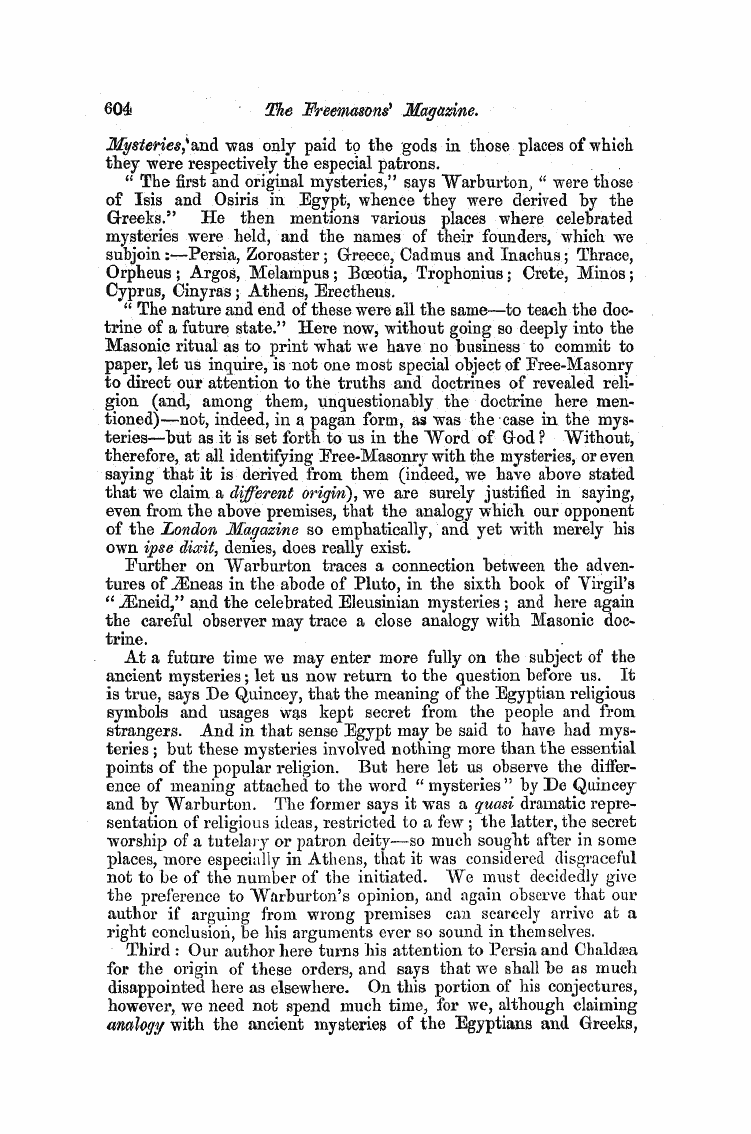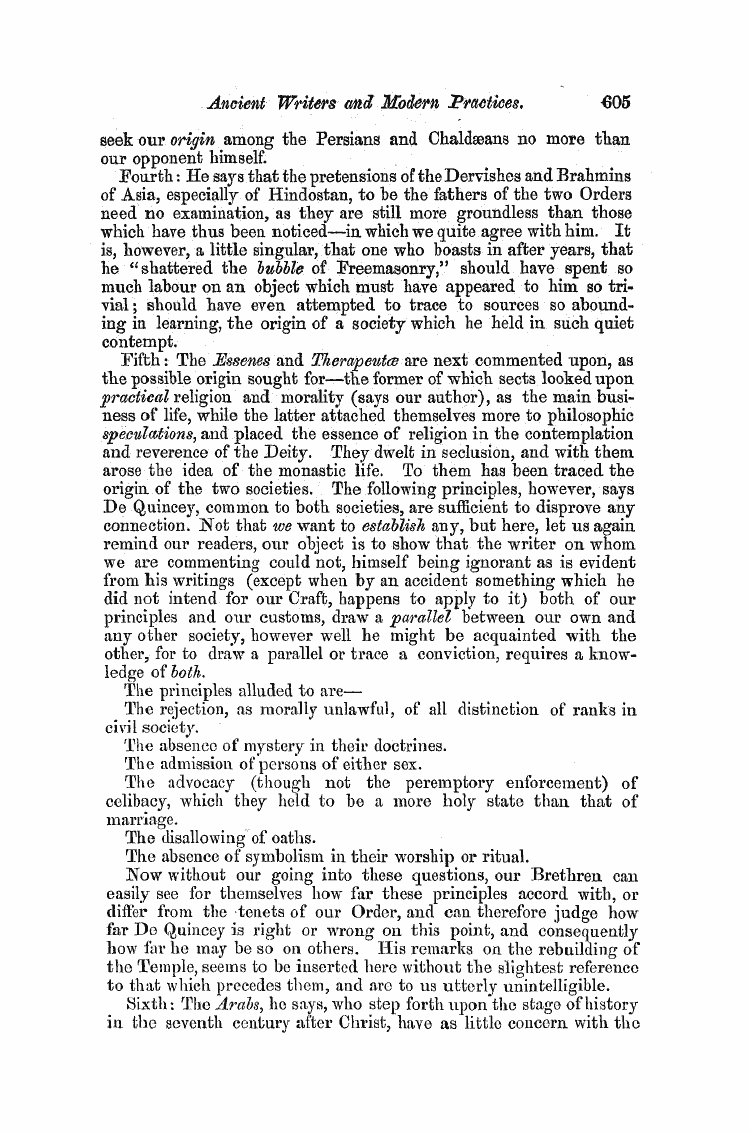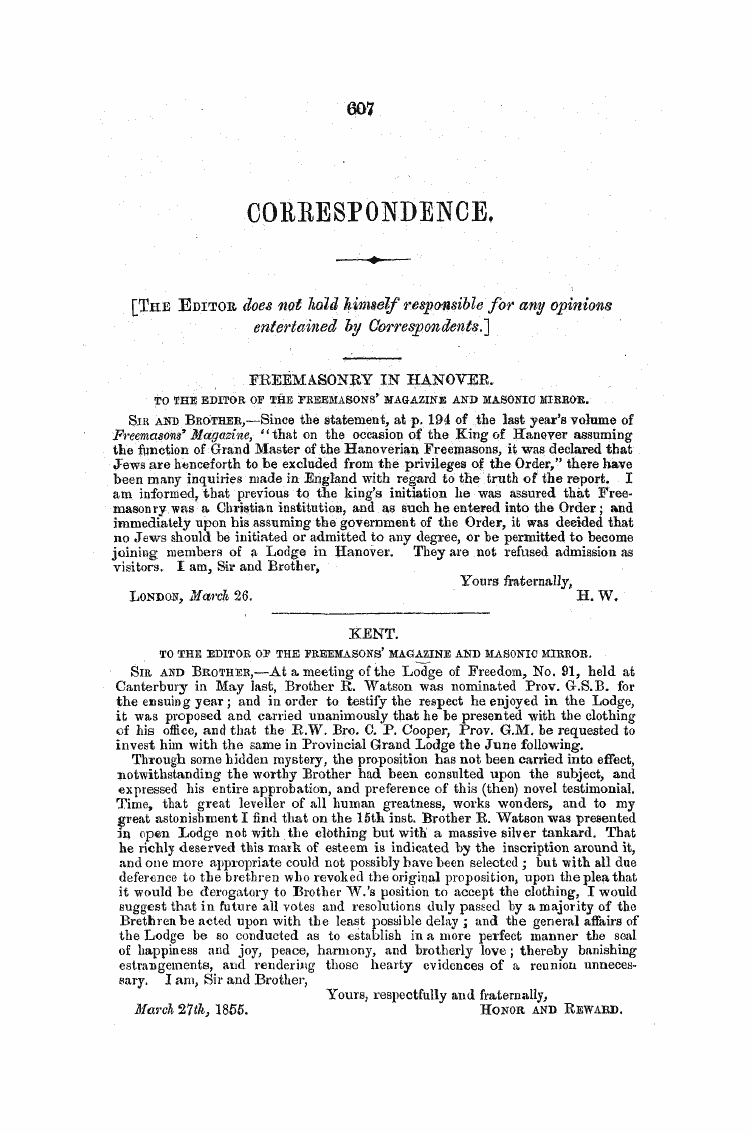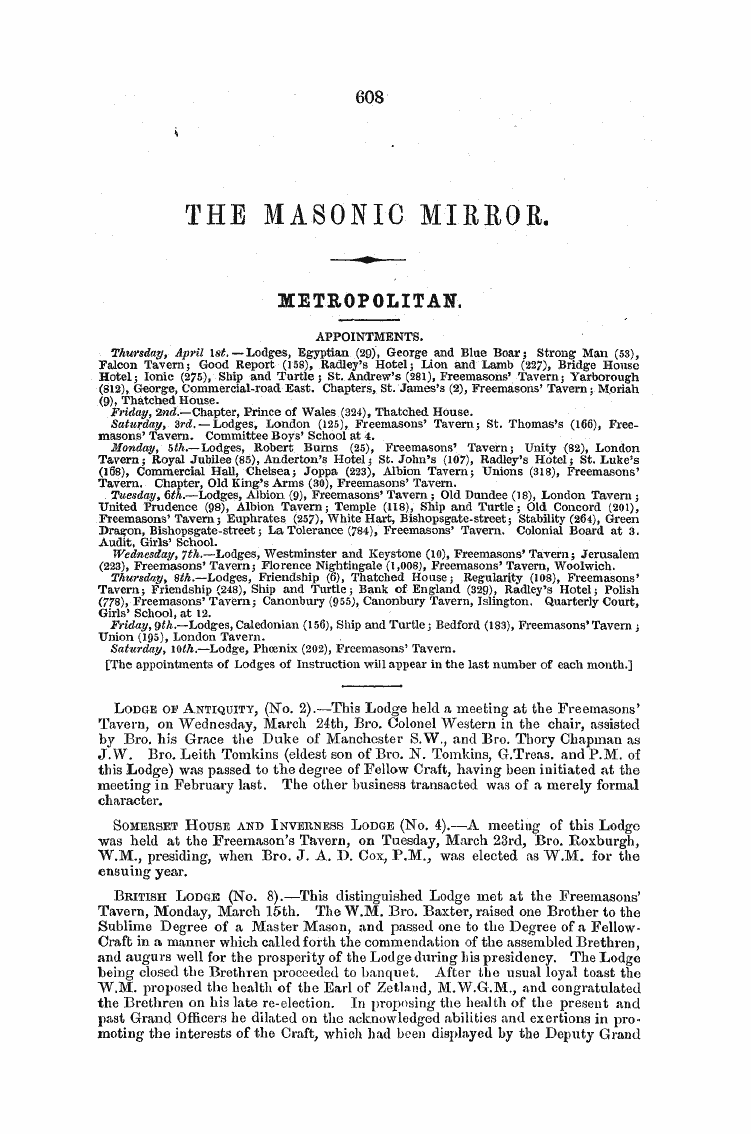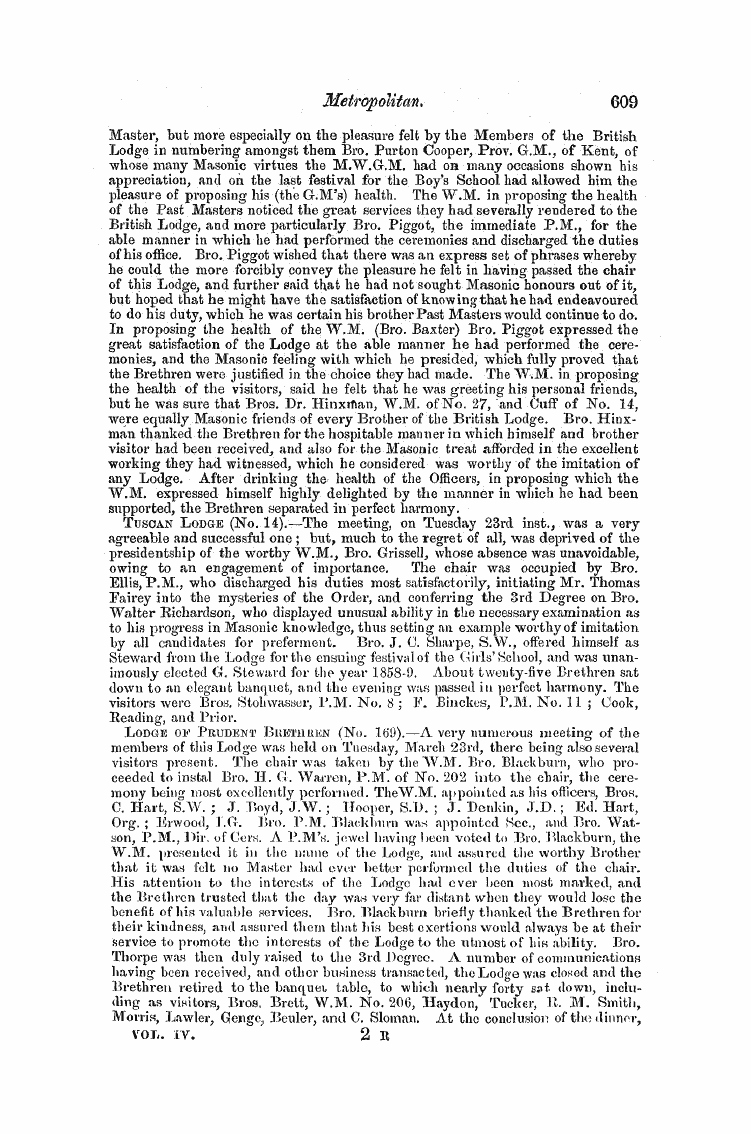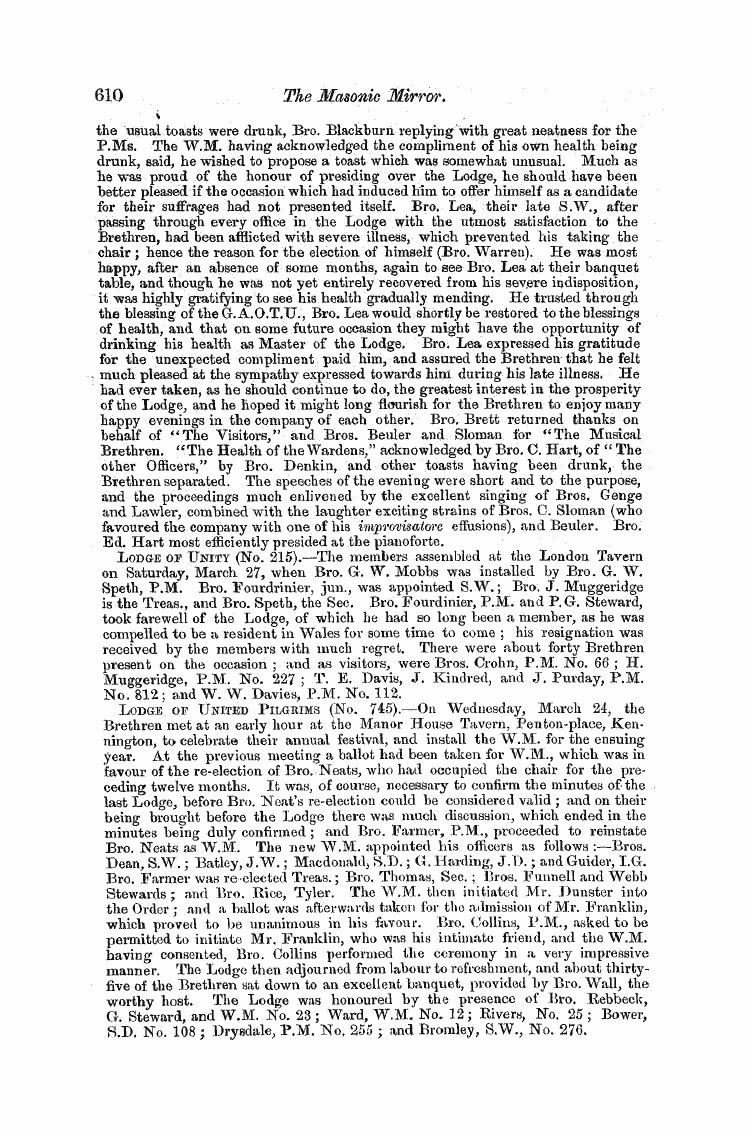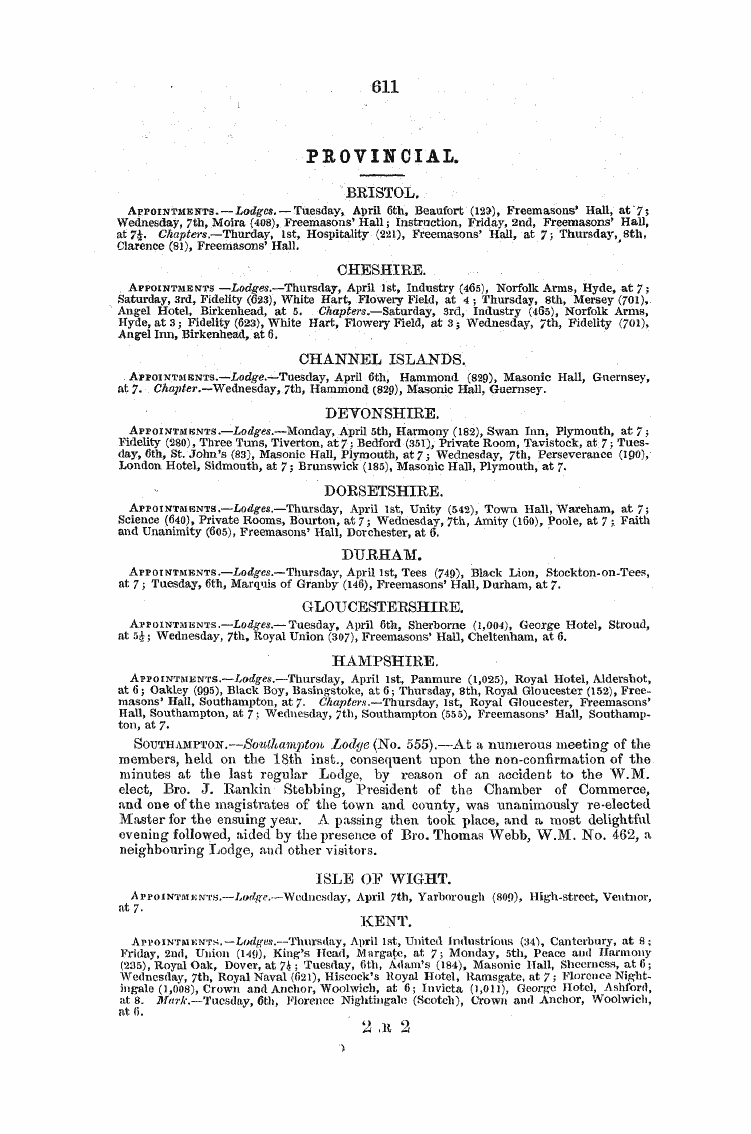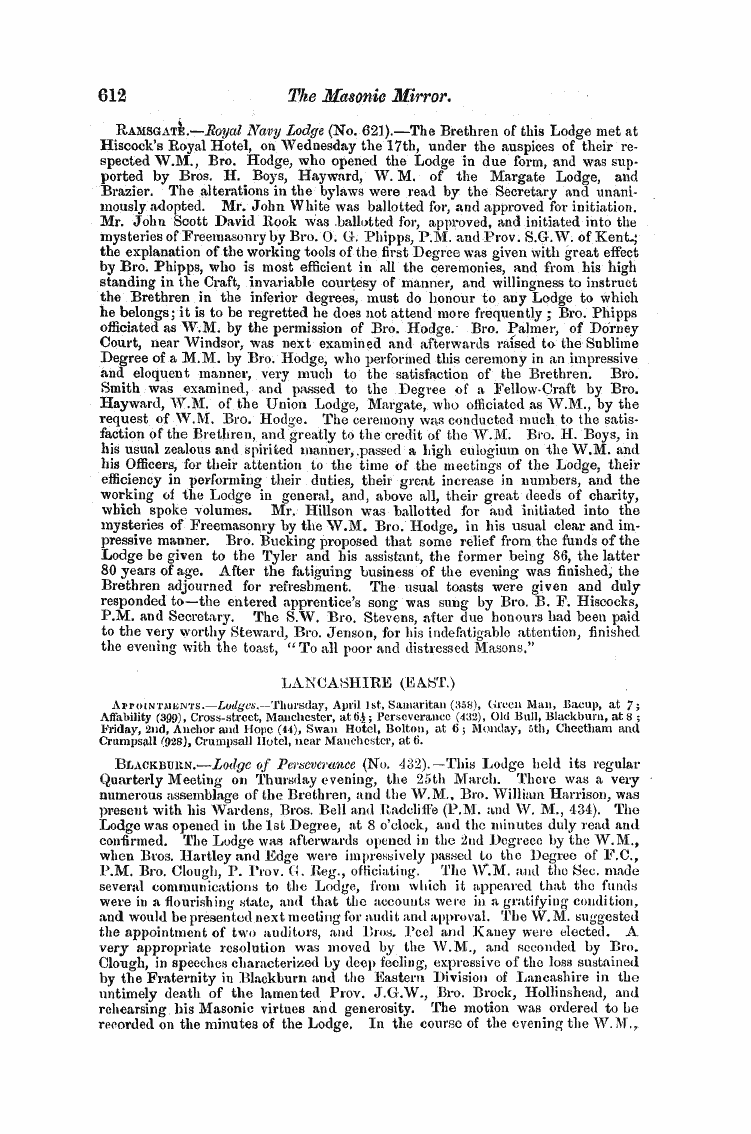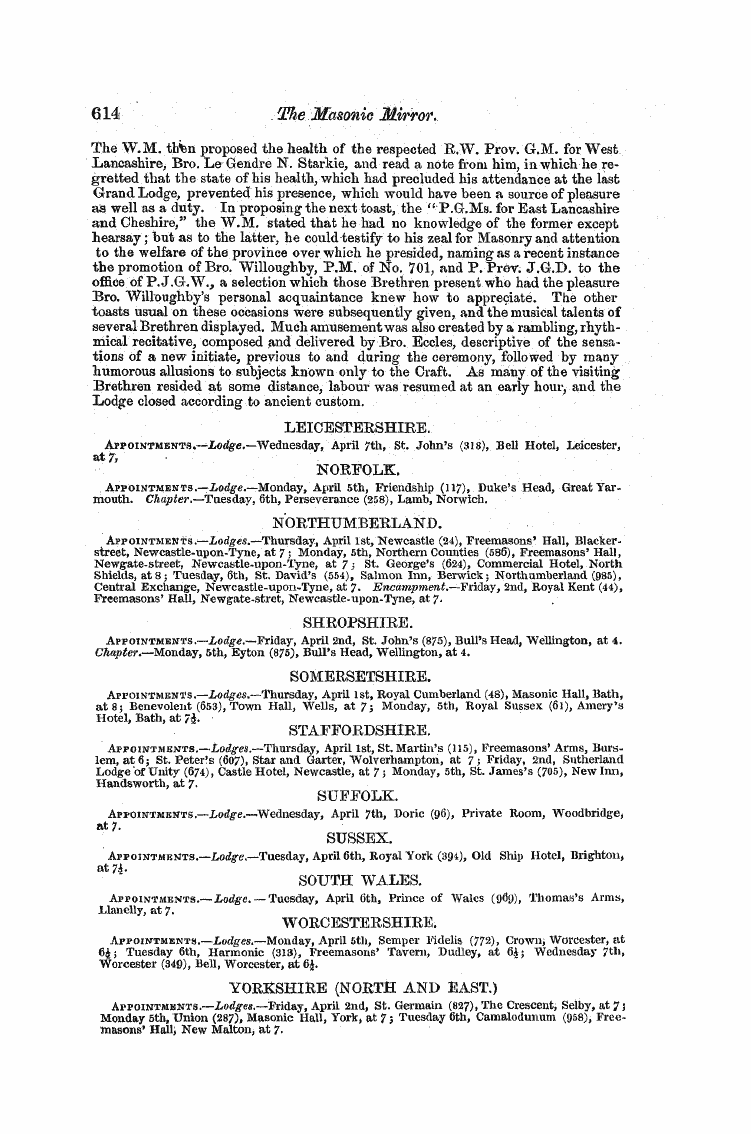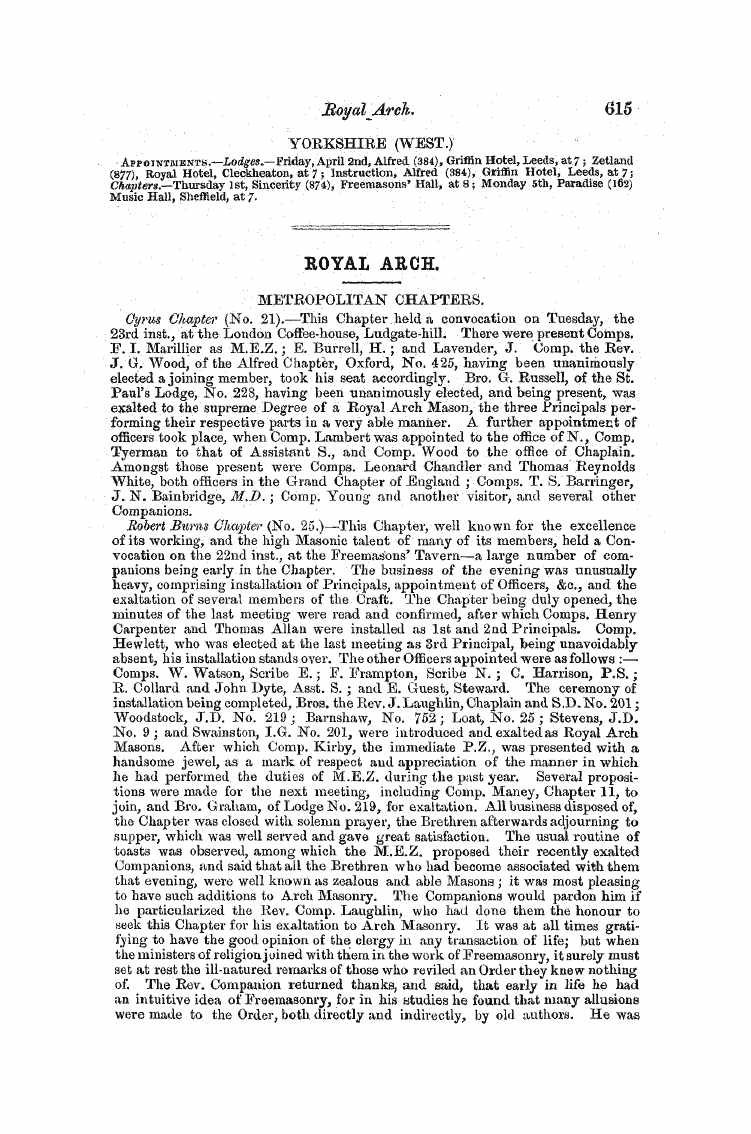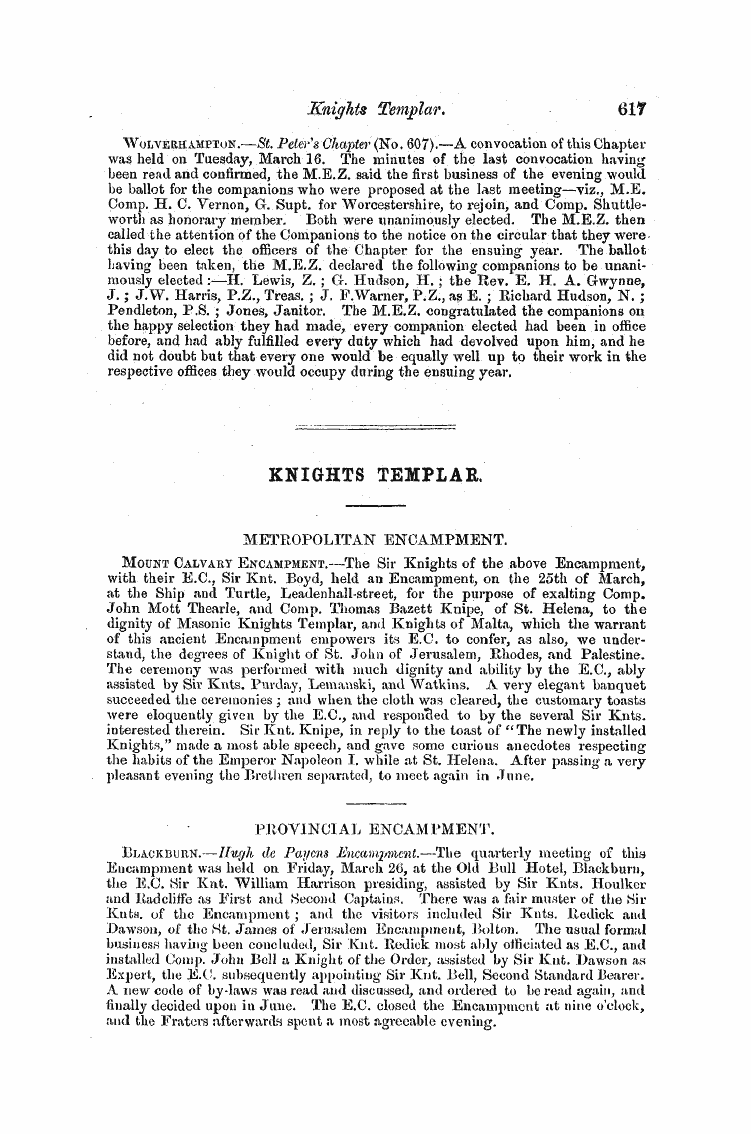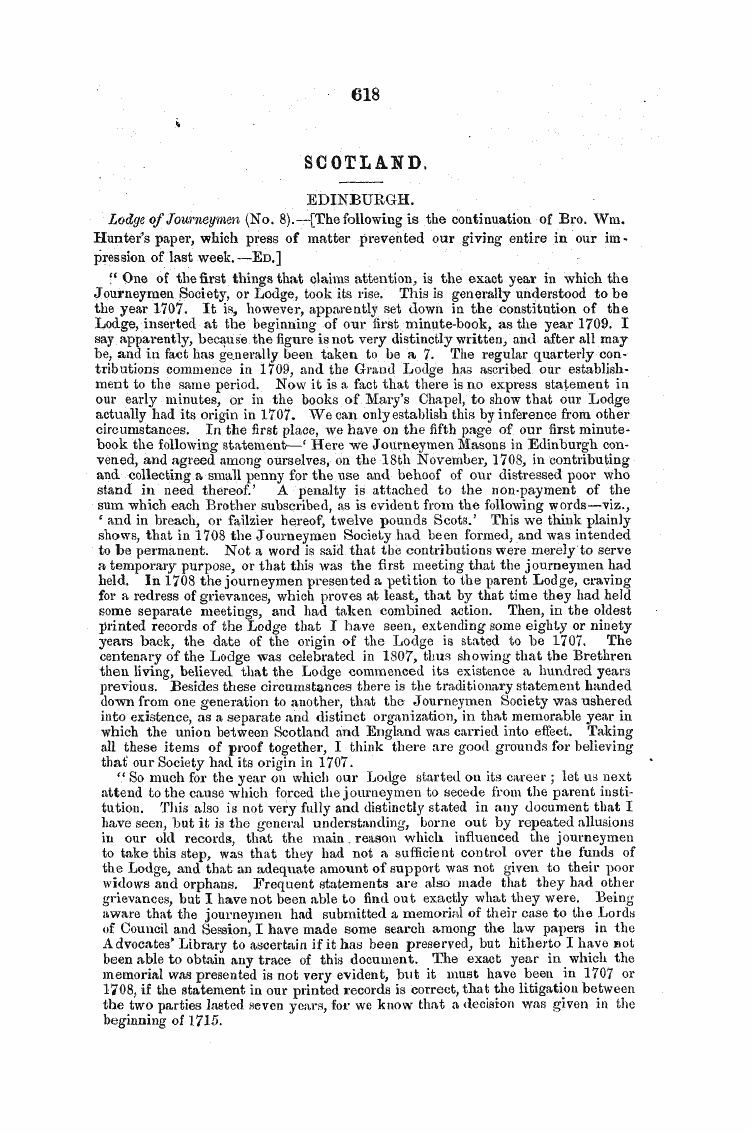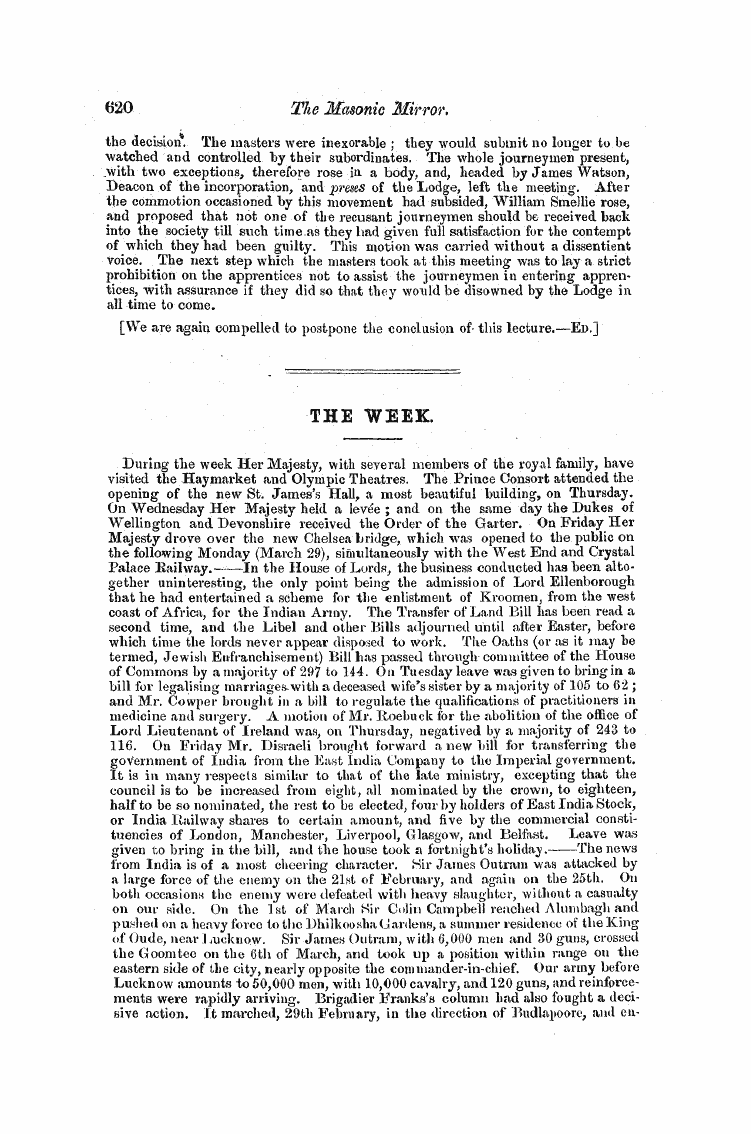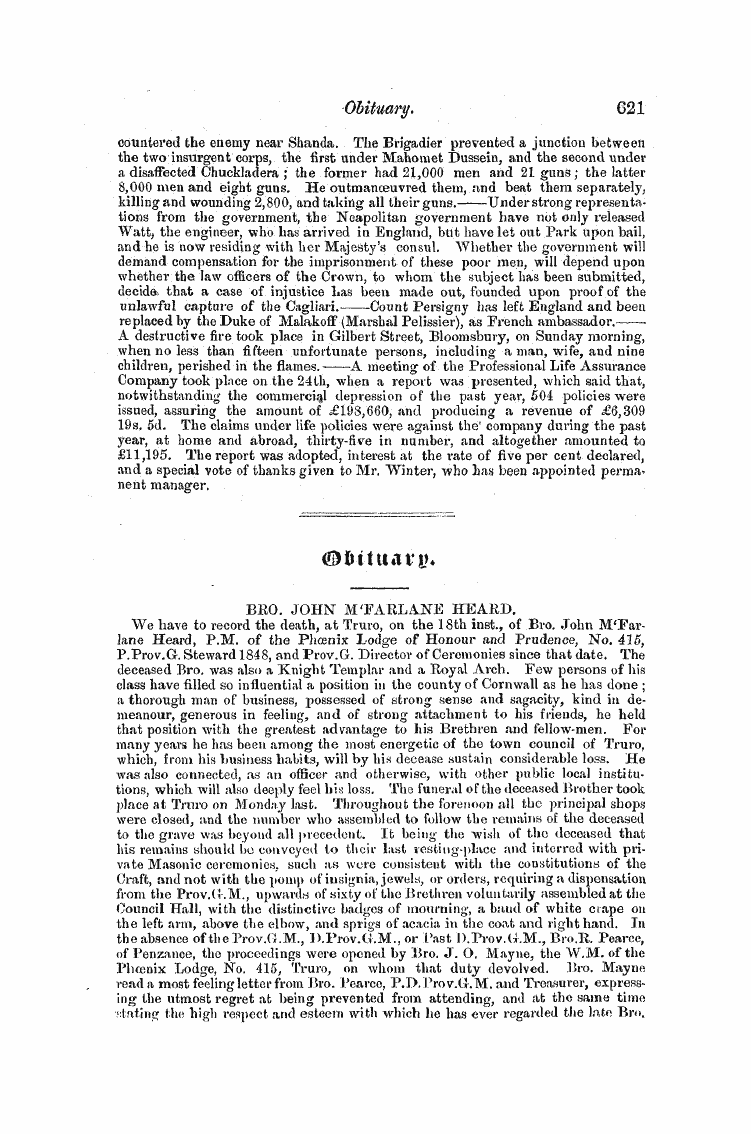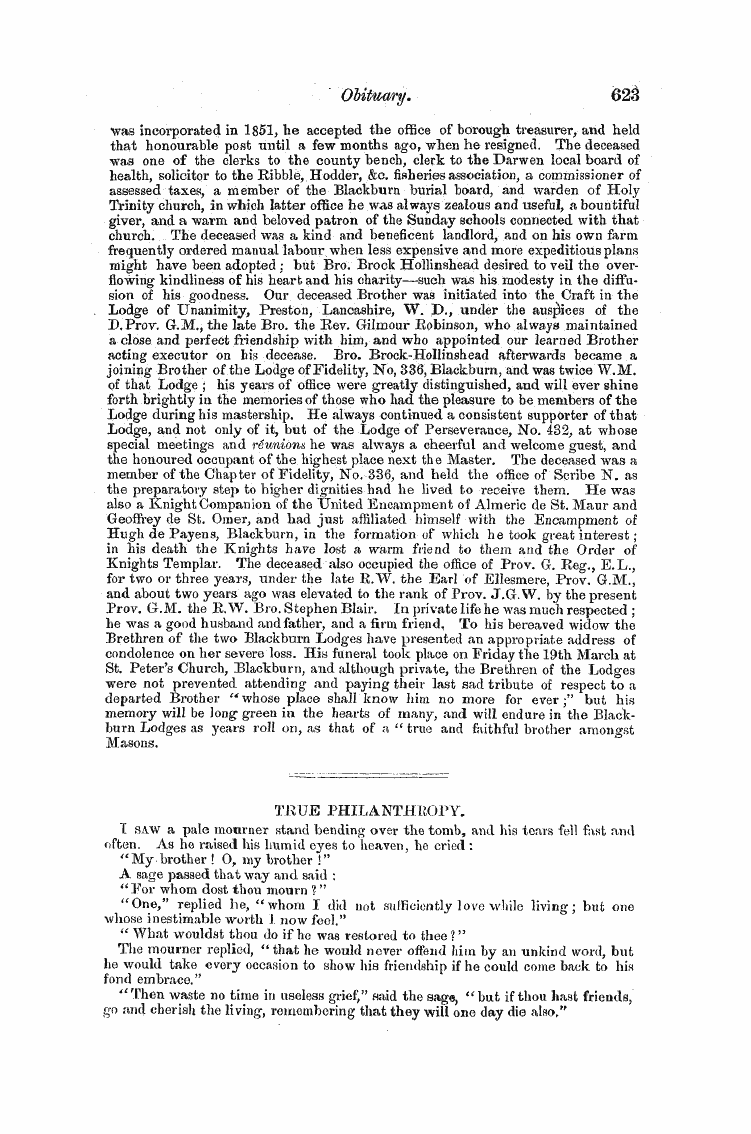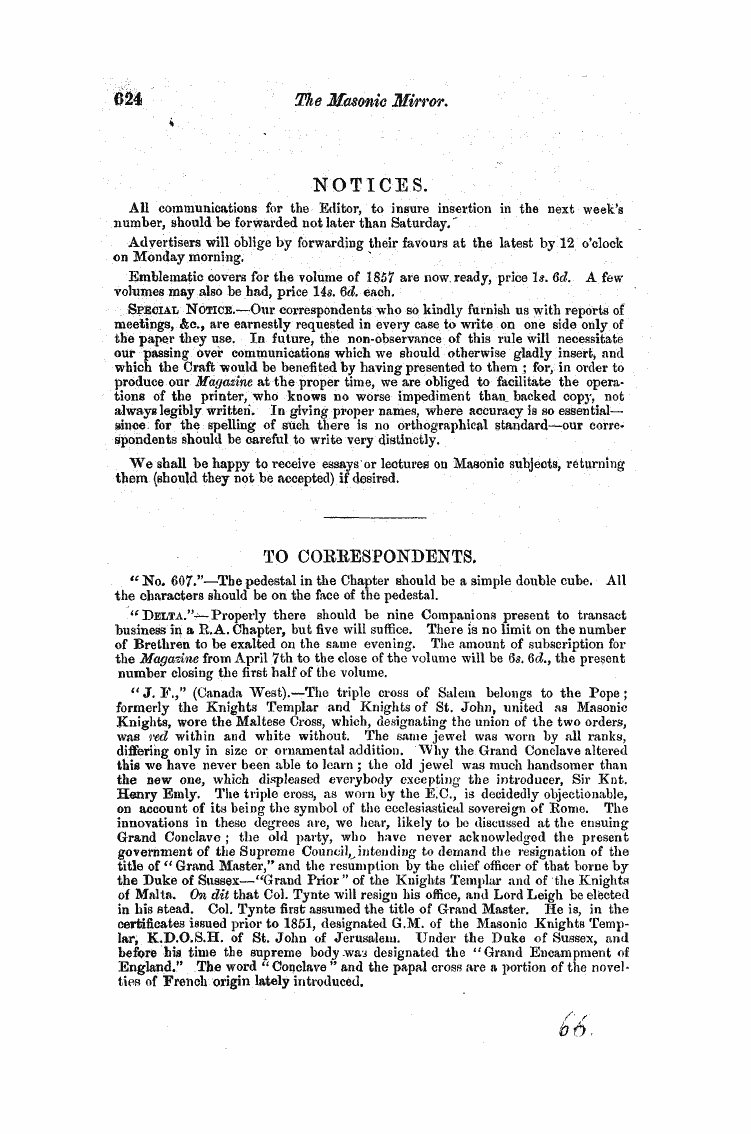Note: This text has been automatically extracted via Optical Character Recognition (OCR) software.
Scotland
most distinguished Lodges in Scotland , or in any other country . According to a statement im the records of th e Grand Lodge of Scotland , it was instituted in 1518 ; that is , nearly 340 years ago , though some persons are of opinion that it was in existence long before that period . The early records of our ancient Mason Lodges were no doubt remarkably brief , for the Brethren in olden times had a scrupulous aversion to the recording of their proceedings ; but , such as they were ,
they have almost wholly been lost amid the turmoil and commotion to which this country was at one period constantly subjected . The early records of the Lodge of Edinburgh have , from these or other causes , disappeared , and I understand that those preserved do not extend farther back than 1598 . In its early days this Lodge had a connection with the incorporation of Wrights and Masons , which was constituted by an act of the magistrates in 1475 . The Incorporation , when it was first formed , and for a long time afterwards , was most likely composed exclusively
of the two Crafts referred to ; but in process of time other trades were admitted to its privileges . We therefore . find that in 1703 , by a decision of the Court of Session , the Bowmakers , Glaziers , Plumbers , and TJpholsterers were added to the Masons , and the Wrights received an accession to . their ranks of the Painters , Slaters , Sievewrights , and Coopers . The Incorporation , previous to the passing of the Scottish Municipal Beform Act , had a double representation at the Council Board of the city , and was generally called the United Incorporation of Mary ' s
Chapel , from the circumstance of holding its meetings in a building in Niddry ' s Wynd which originally was a chapel dedicated to the Virgin Mary , and which was swept away when the South Bridge was built in 1785 . It afterwards fitted up a hall in Burner ' s Close , in which it still holds its meetings , and which is embellished by a picture executed in 1721 by one Chambers , a herald painter , containing a full-length portrait of a freeman of the different trades comprised in the Incorporation , all represented in the costume of the period , and labouring at
their respective employments in front of the palace of Holyrood . The Lodge took the same name as the Incorporation , held its meetings in the same place , had generally the same clerk to record its transactions , and the Deacon of the Masons was most frequently the Master of the Lodge . What control the Incorporation had over the Lodge , or if it had any at all , I am not able to say , as I have not yet had a proper opportunity of examining the records of the Incorporation . It is evident , however , from several documents which I have perused , that the Lodge
interfered to a large extent with the Mason Craft , and with matters which we would suppose were placed entirely under the jurisdiction of the incorporated body of Wrights and Masons . Indeed , in reading over the records of the Lodge , it is often difficult to say whether they refer to a separate society or to the Incorporation itself . I will give one or two instances of this interference , more particularly as they bear on the position and interests of the Journeymen or Fellows of Craft—the class of operatives that instituted the Society to which we have the honour to belong .
" On the 27 th of December , 1688 , about the time when the Lodge 'Canongate and Leith , Leith and Canongate , No . 5 / was formed , there is a minute in the books of the Lodge of Edingurgh which , after giving the names ofa number of persons who , without law , reason , or warrant , had presumptuously taken the liberty to meet among themselves to erect a Lodge , and to enter Apprentices and pass Fellow-Crafts , goes on to state that the Lodge Mary ' s Chapel therefore statutes and ordins that from hanceforth nattier off the abuve parsones , or their adhiranse- or that have
bin antared or shall antar or pass arnonge tham be admitted to work within oui fridum as jurnimen , with sartificasione that if any master shall presum to im-} doie tham untal the deacon and mast part of the mastoris be satisfied tharwith , they thall be unlaiwed ( or fined ) 'in the sum of four punds beside what punishment the house shall be plewt to inflect by anatour ; ' and whereas it had several
times occurred that ' the jurnimen and utharis belonging to this Lr > ge contrair to the Mason ' s law have mad thai * application and complant to the sival inagistrat for what shuld be rasting tham , for radrass wharoff it is statutod and ordined that no jurniman within this previlige shall hirafter parsue a mastar , befor onse he wat upon the Dikin and clear accomptes on with another , and the som adjusted be him and his mastaris , sail be satisfaction for both , and if any sail prosid in the
Note: This text has been automatically extracted via Optical Character Recognition (OCR) software.
Scotland
most distinguished Lodges in Scotland , or in any other country . According to a statement im the records of th e Grand Lodge of Scotland , it was instituted in 1518 ; that is , nearly 340 years ago , though some persons are of opinion that it was in existence long before that period . The early records of our ancient Mason Lodges were no doubt remarkably brief , for the Brethren in olden times had a scrupulous aversion to the recording of their proceedings ; but , such as they were ,
they have almost wholly been lost amid the turmoil and commotion to which this country was at one period constantly subjected . The early records of the Lodge of Edinburgh have , from these or other causes , disappeared , and I understand that those preserved do not extend farther back than 1598 . In its early days this Lodge had a connection with the incorporation of Wrights and Masons , which was constituted by an act of the magistrates in 1475 . The Incorporation , when it was first formed , and for a long time afterwards , was most likely composed exclusively
of the two Crafts referred to ; but in process of time other trades were admitted to its privileges . We therefore . find that in 1703 , by a decision of the Court of Session , the Bowmakers , Glaziers , Plumbers , and TJpholsterers were added to the Masons , and the Wrights received an accession to . their ranks of the Painters , Slaters , Sievewrights , and Coopers . The Incorporation , previous to the passing of the Scottish Municipal Beform Act , had a double representation at the Council Board of the city , and was generally called the United Incorporation of Mary ' s
Chapel , from the circumstance of holding its meetings in a building in Niddry ' s Wynd which originally was a chapel dedicated to the Virgin Mary , and which was swept away when the South Bridge was built in 1785 . It afterwards fitted up a hall in Burner ' s Close , in which it still holds its meetings , and which is embellished by a picture executed in 1721 by one Chambers , a herald painter , containing a full-length portrait of a freeman of the different trades comprised in the Incorporation , all represented in the costume of the period , and labouring at
their respective employments in front of the palace of Holyrood . The Lodge took the same name as the Incorporation , held its meetings in the same place , had generally the same clerk to record its transactions , and the Deacon of the Masons was most frequently the Master of the Lodge . What control the Incorporation had over the Lodge , or if it had any at all , I am not able to say , as I have not yet had a proper opportunity of examining the records of the Incorporation . It is evident , however , from several documents which I have perused , that the Lodge
interfered to a large extent with the Mason Craft , and with matters which we would suppose were placed entirely under the jurisdiction of the incorporated body of Wrights and Masons . Indeed , in reading over the records of the Lodge , it is often difficult to say whether they refer to a separate society or to the Incorporation itself . I will give one or two instances of this interference , more particularly as they bear on the position and interests of the Journeymen or Fellows of Craft—the class of operatives that instituted the Society to which we have the honour to belong .
" On the 27 th of December , 1688 , about the time when the Lodge 'Canongate and Leith , Leith and Canongate , No . 5 / was formed , there is a minute in the books of the Lodge of Edingurgh which , after giving the names ofa number of persons who , without law , reason , or warrant , had presumptuously taken the liberty to meet among themselves to erect a Lodge , and to enter Apprentices and pass Fellow-Crafts , goes on to state that the Lodge Mary ' s Chapel therefore statutes and ordins that from hanceforth nattier off the abuve parsones , or their adhiranse- or that have
bin antared or shall antar or pass arnonge tham be admitted to work within oui fridum as jurnimen , with sartificasione that if any master shall presum to im-} doie tham untal the deacon and mast part of the mastoris be satisfied tharwith , they thall be unlaiwed ( or fined ) 'in the sum of four punds beside what punishment the house shall be plewt to inflect by anatour ; ' and whereas it had several
times occurred that ' the jurnimen and utharis belonging to this Lr > ge contrair to the Mason ' s law have mad thai * application and complant to the sival inagistrat for what shuld be rasting tham , for radrass wharoff it is statutod and ordined that no jurniman within this previlige shall hirafter parsue a mastar , befor onse he wat upon the Dikin and clear accomptes on with another , and the som adjusted be him and his mastaris , sail be satisfaction for both , and if any sail prosid in the




























































